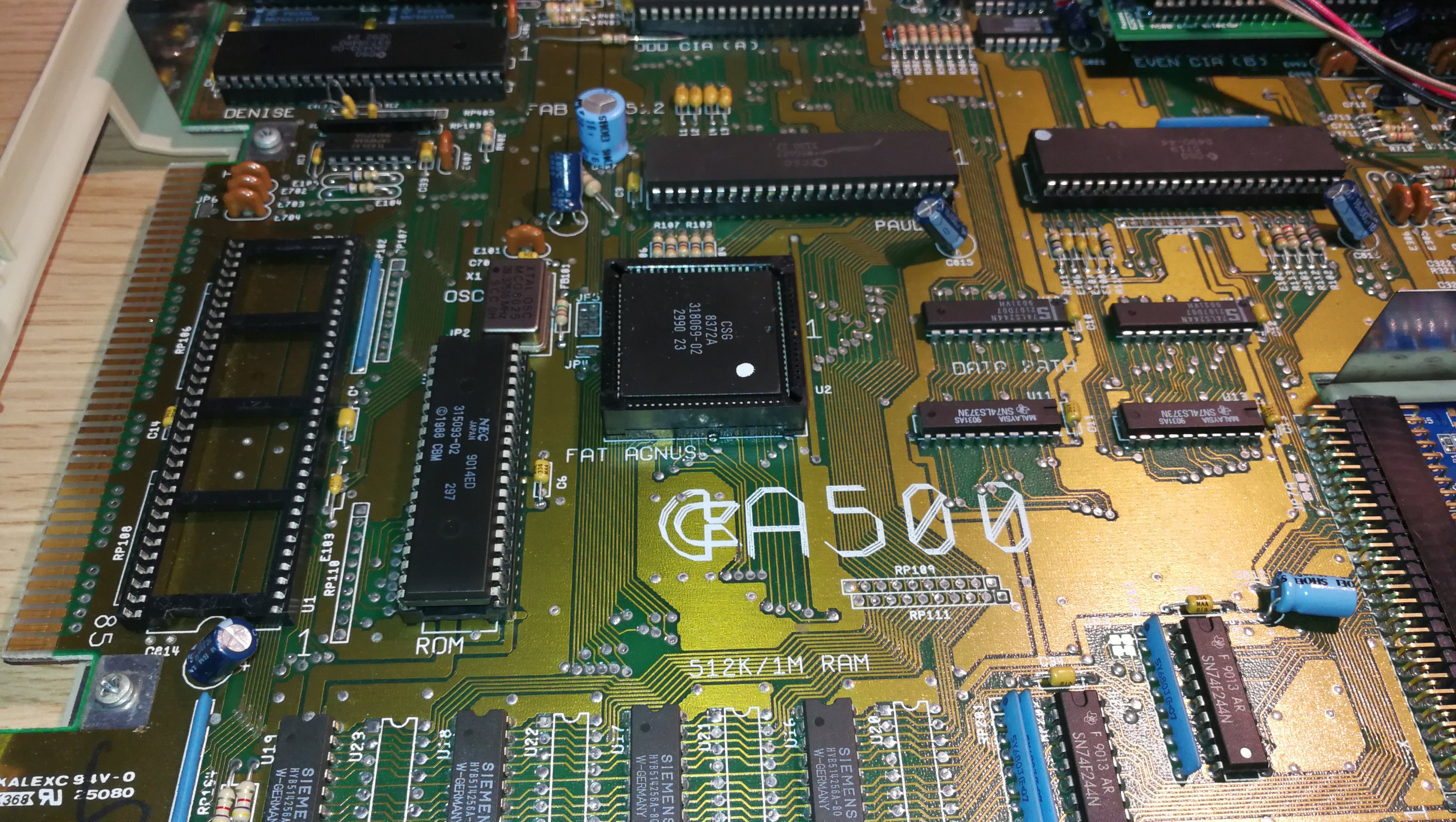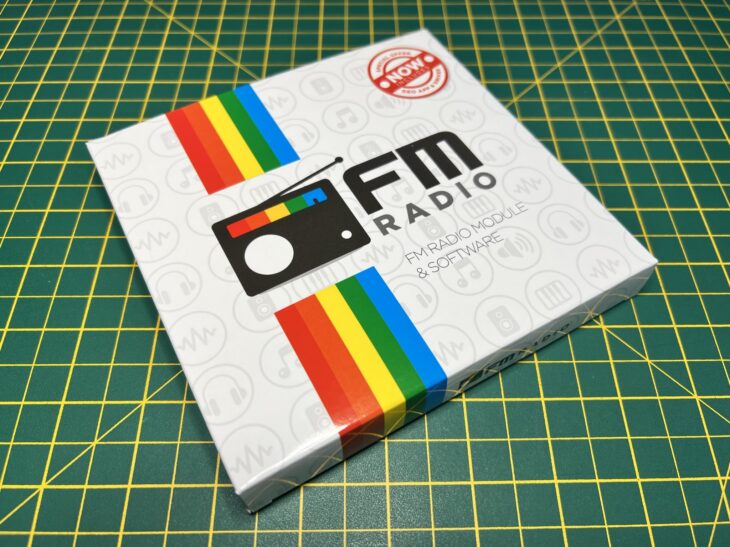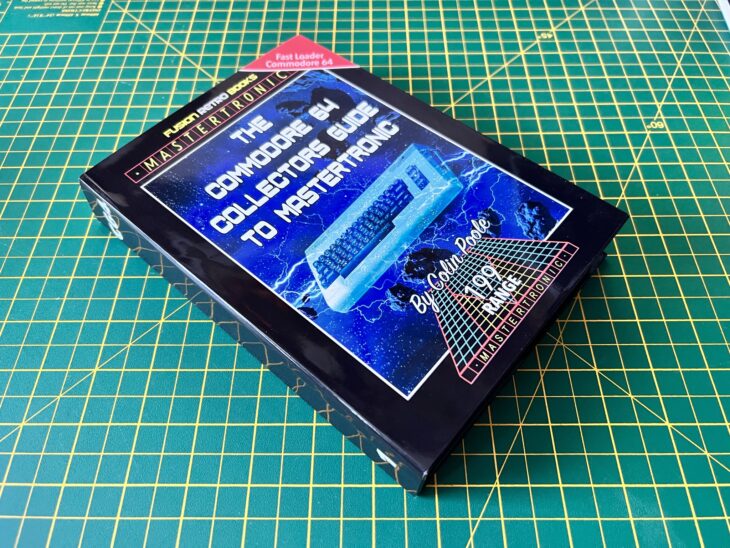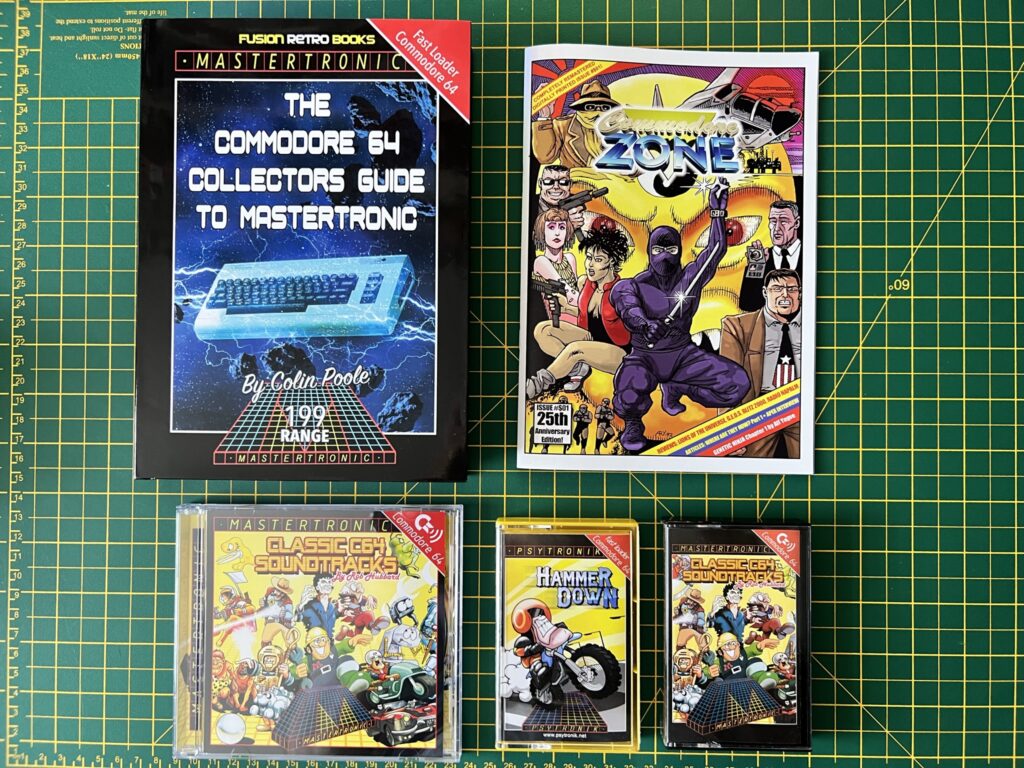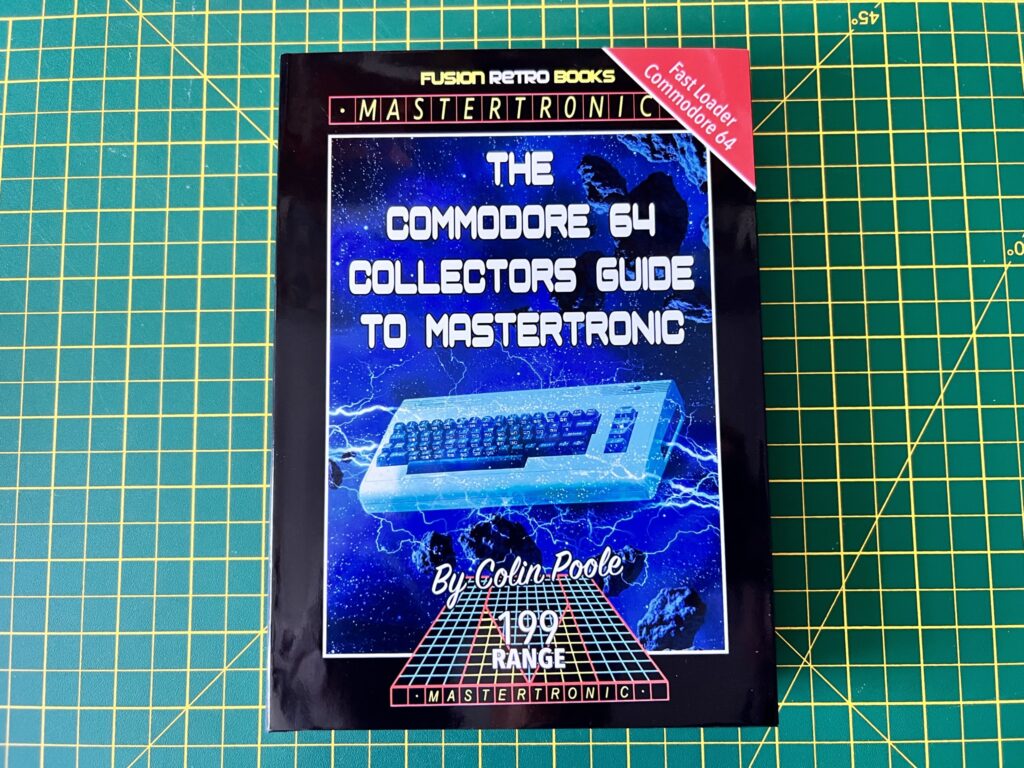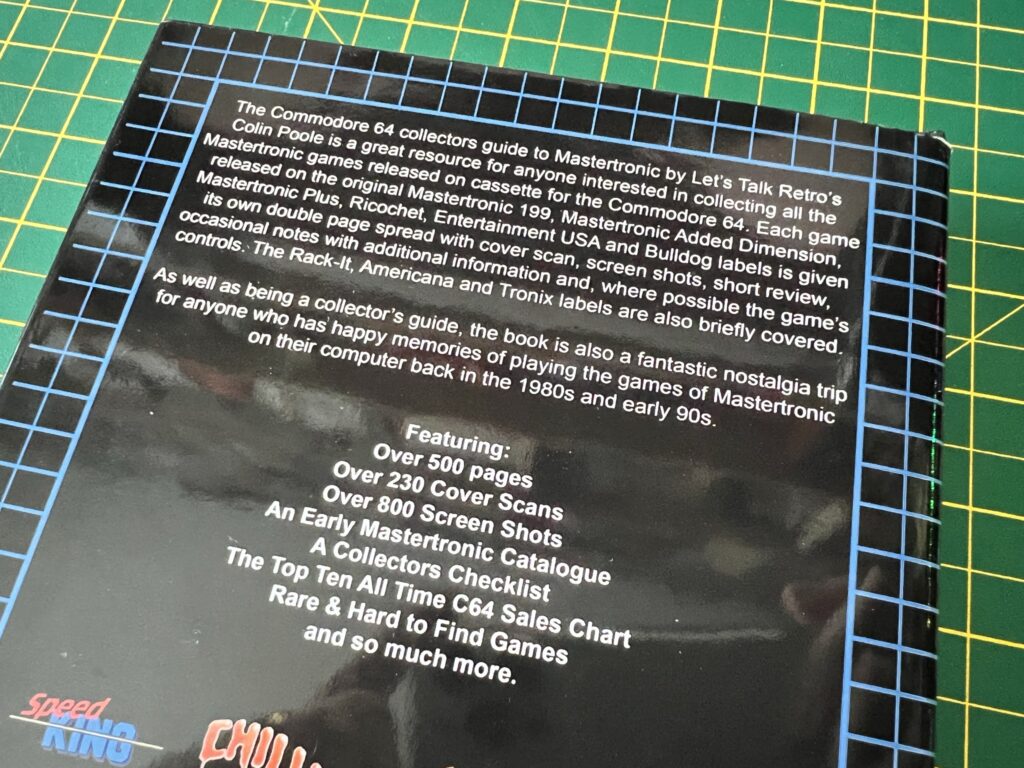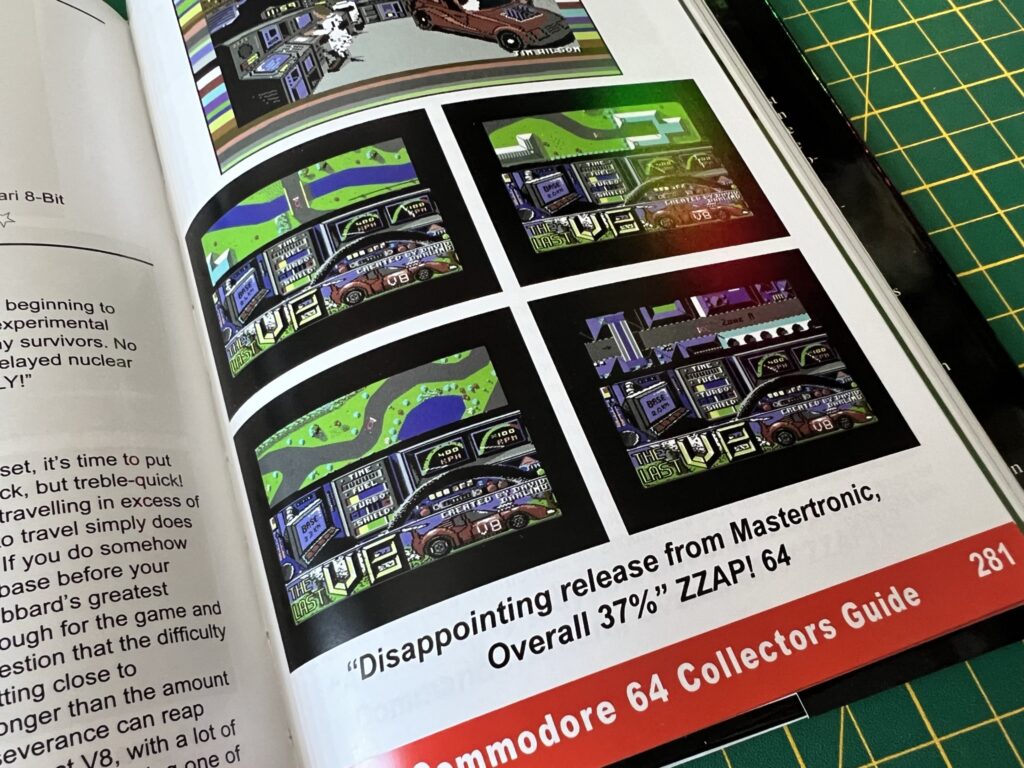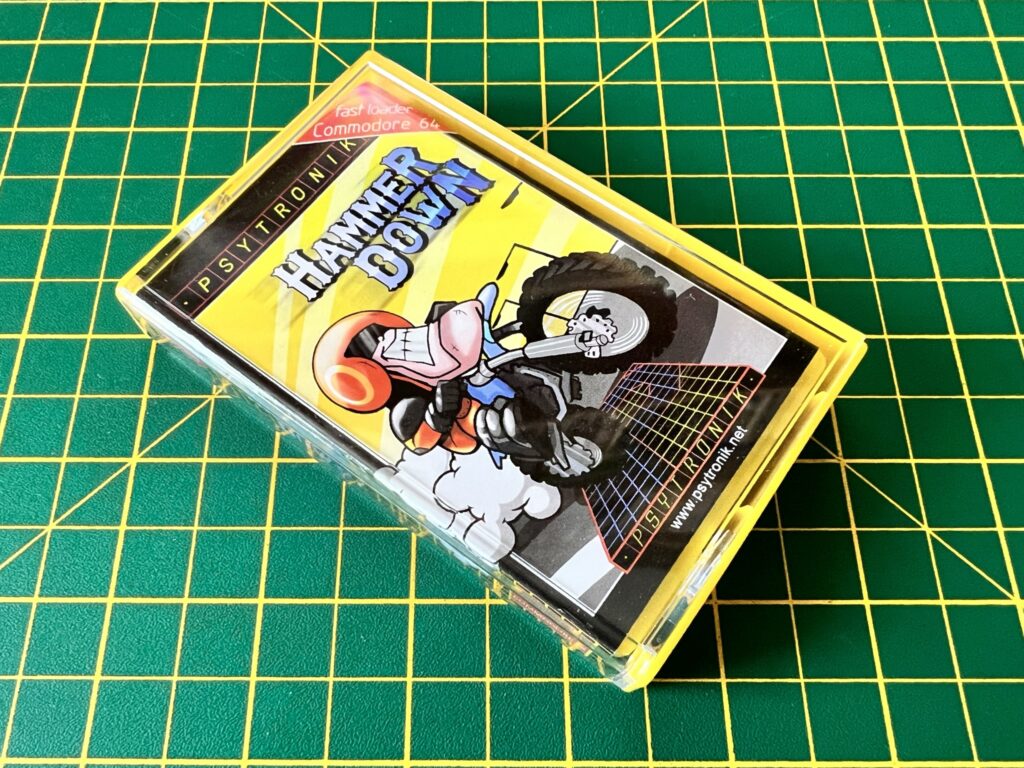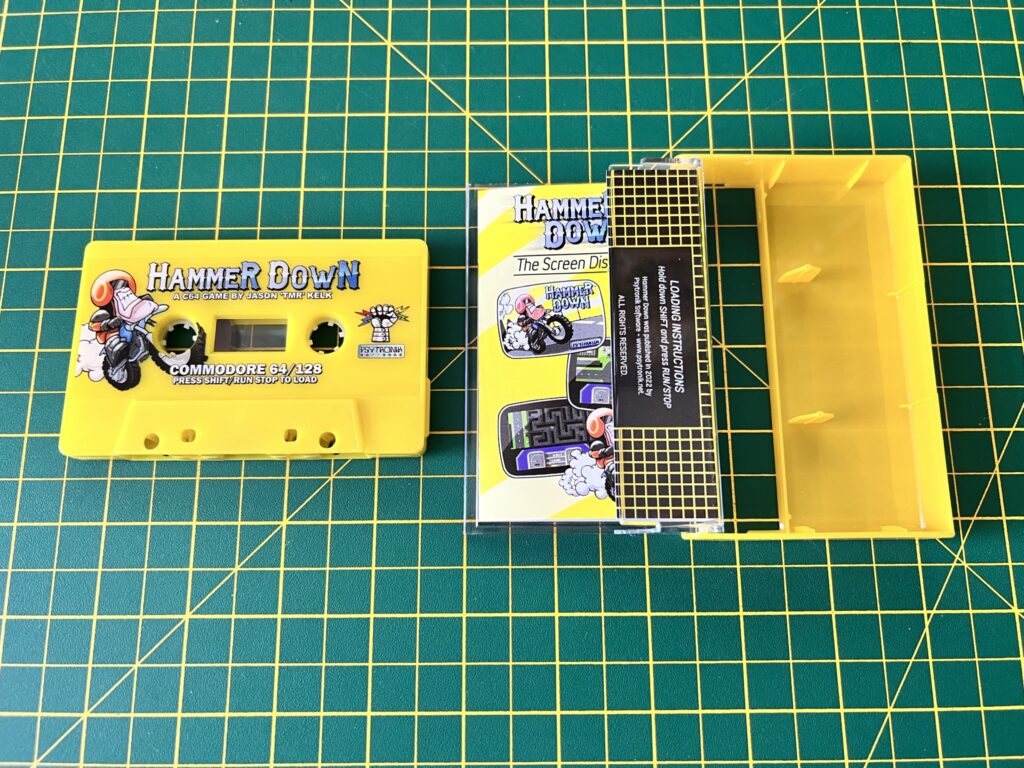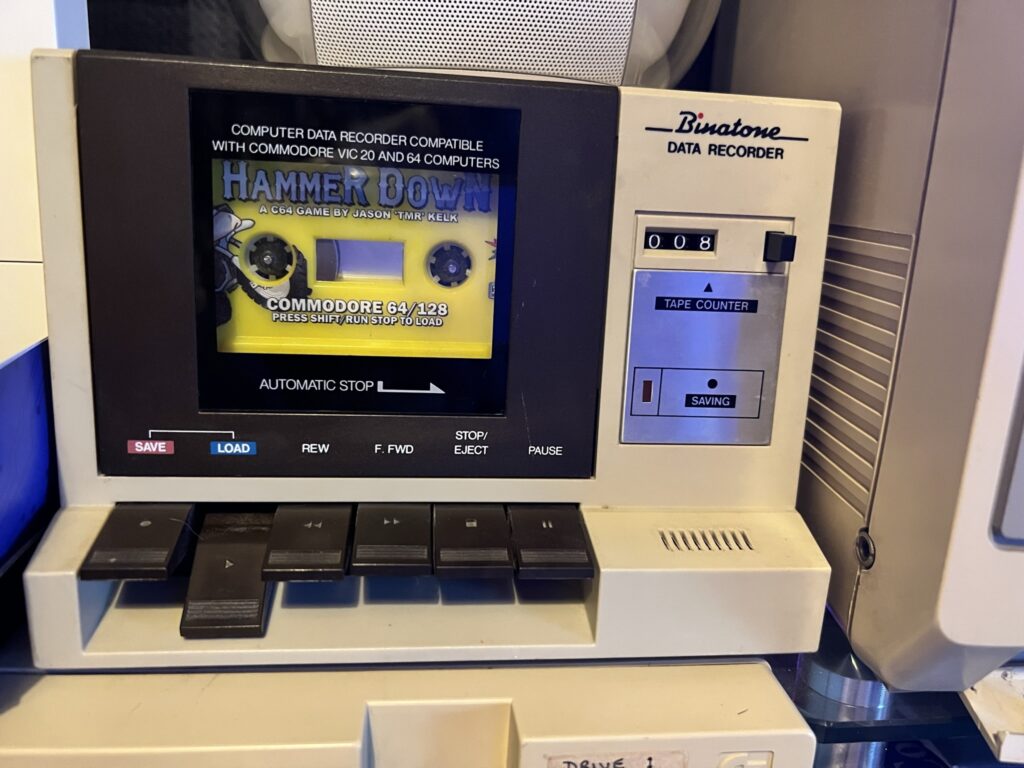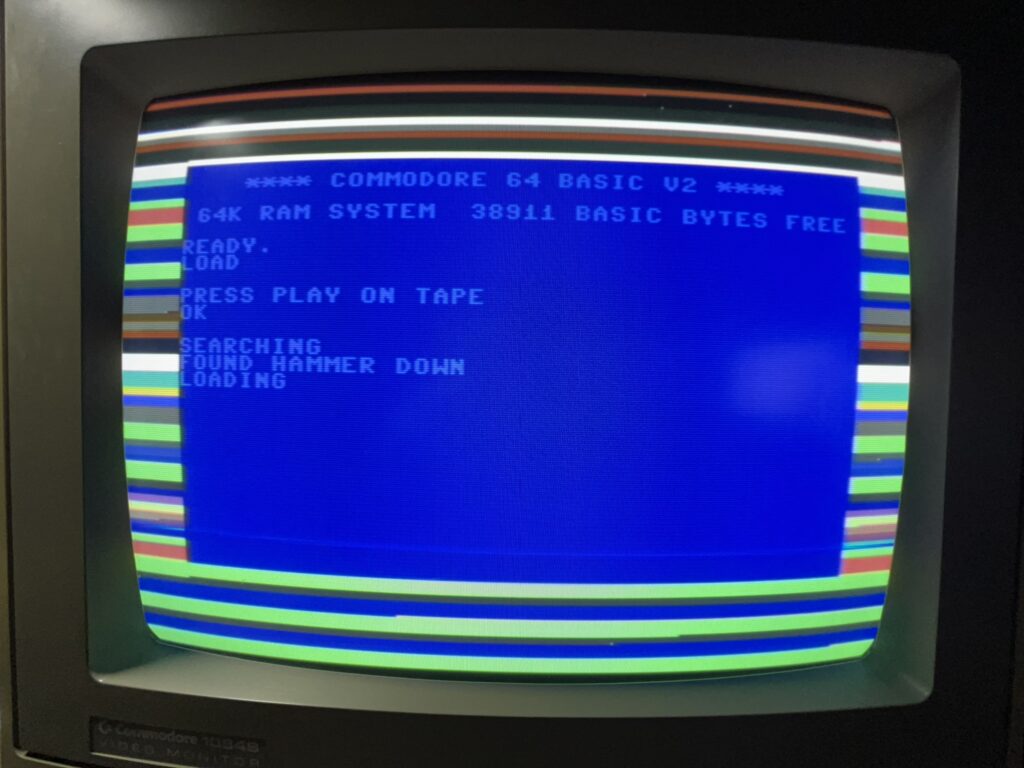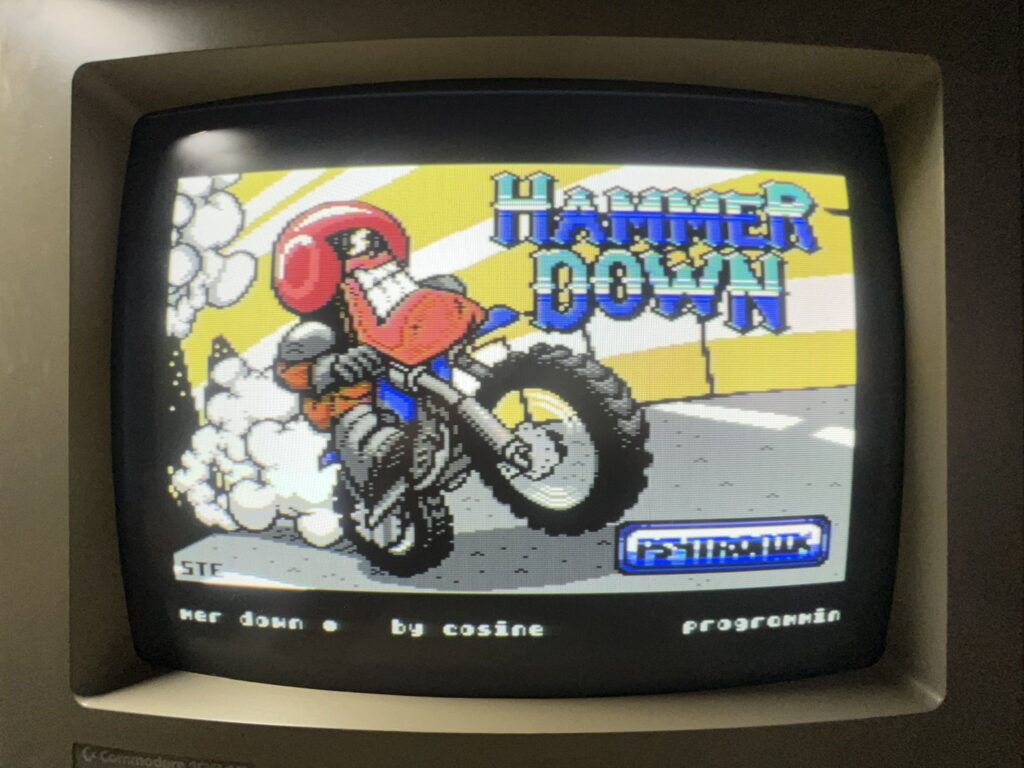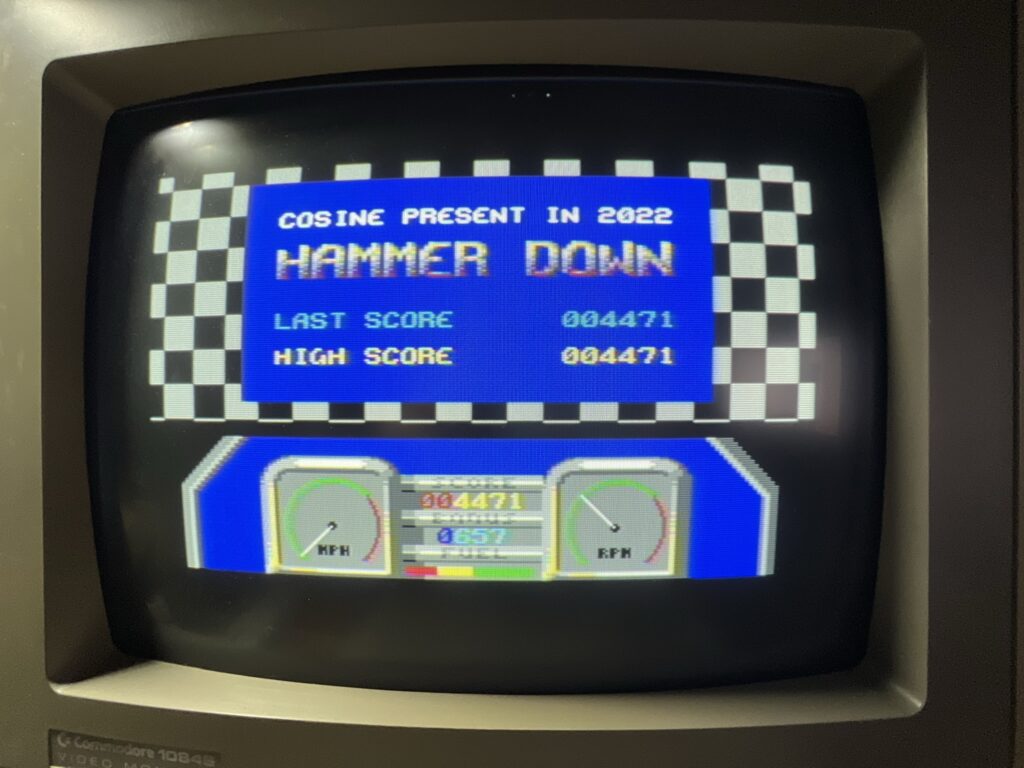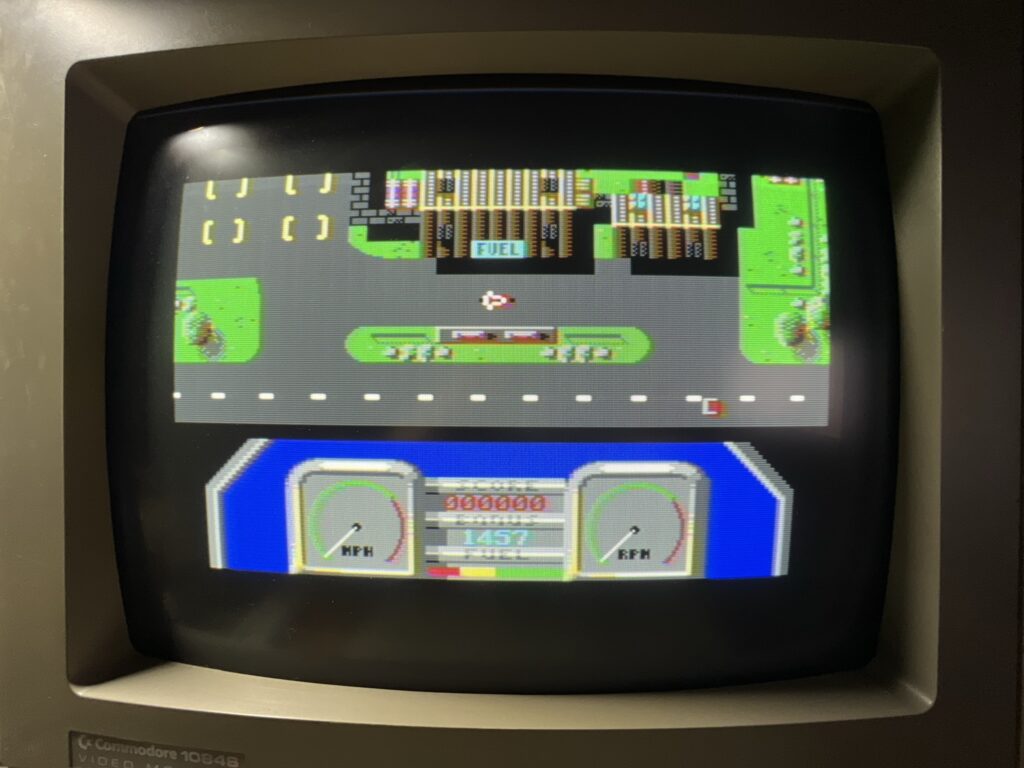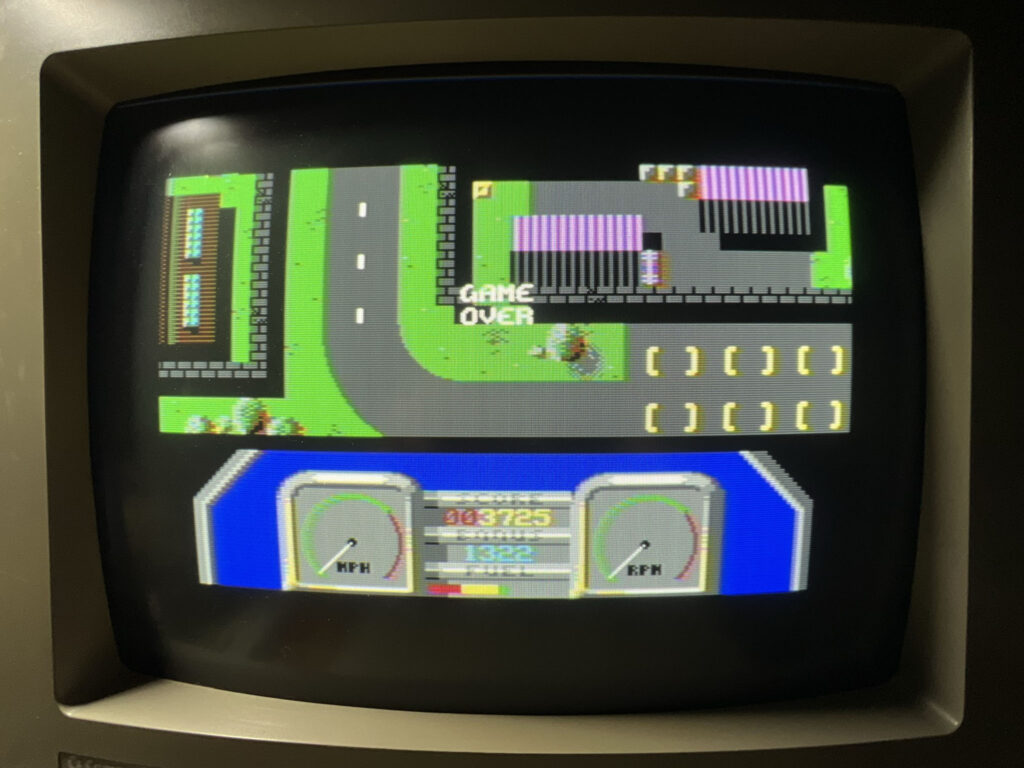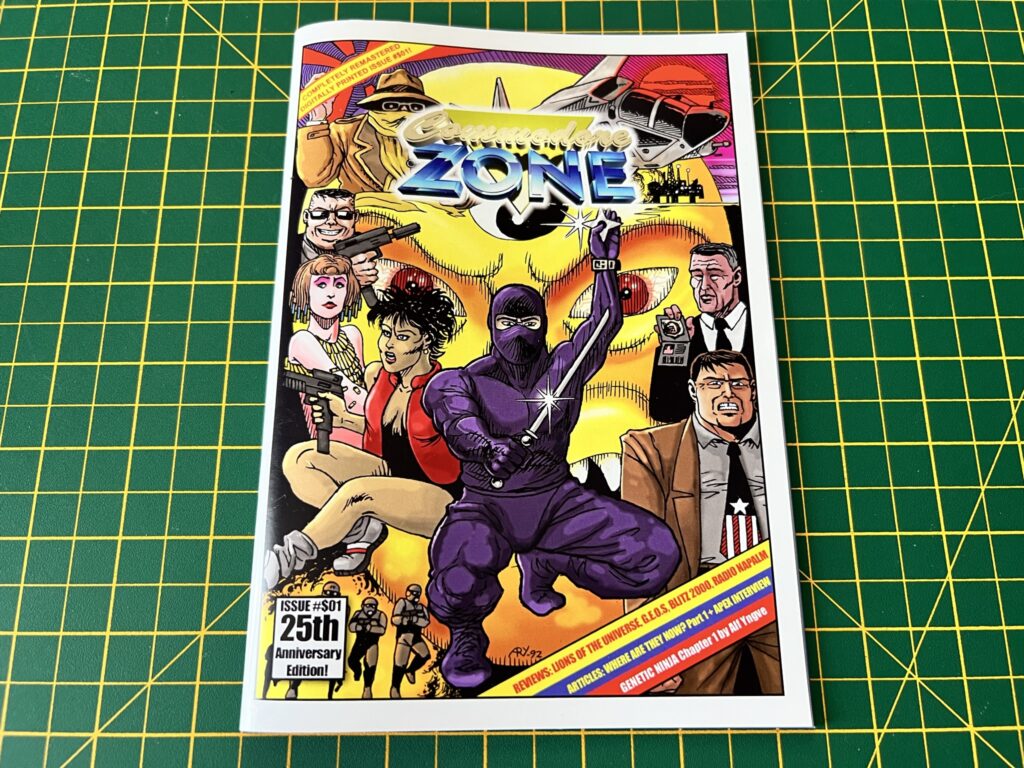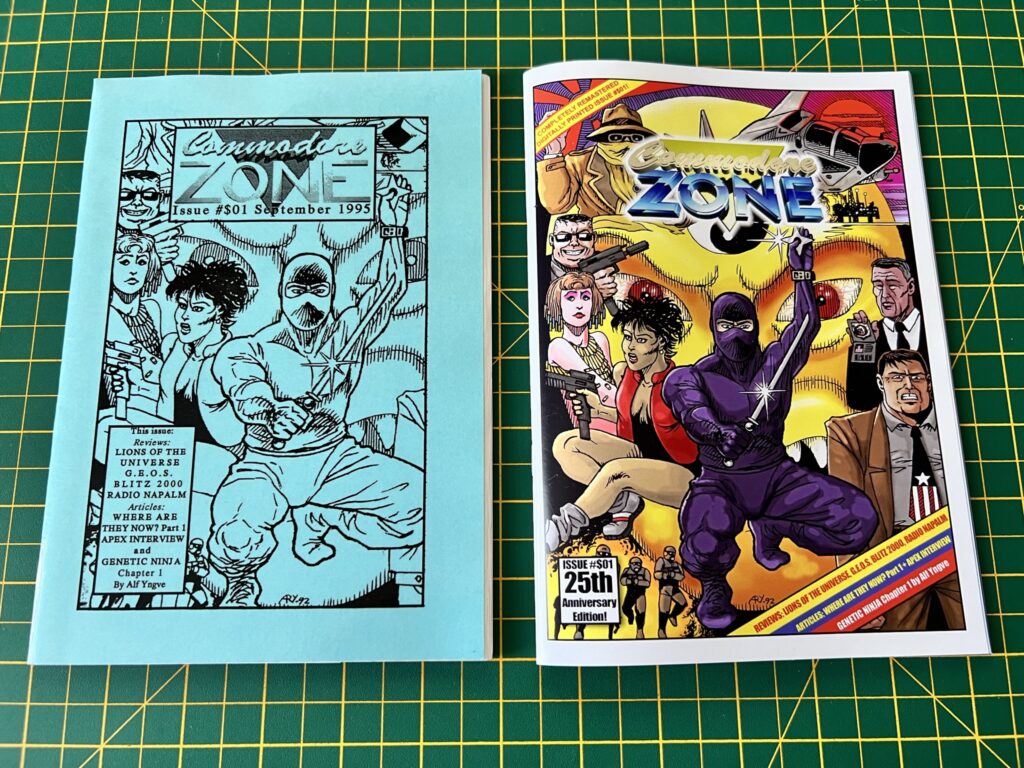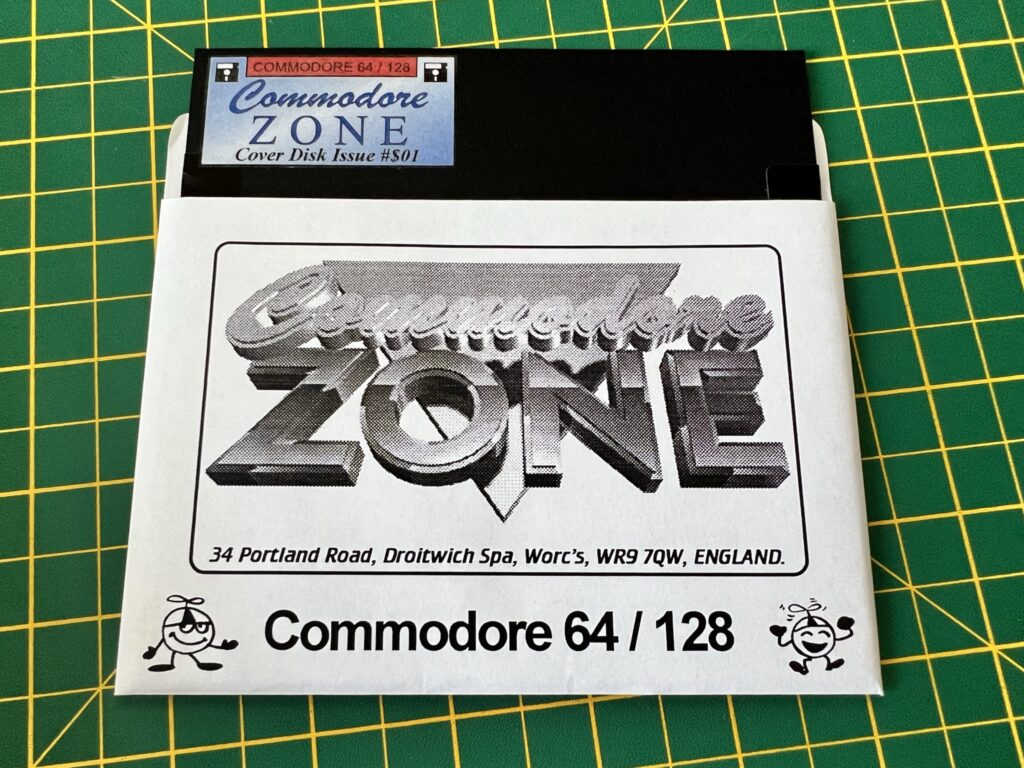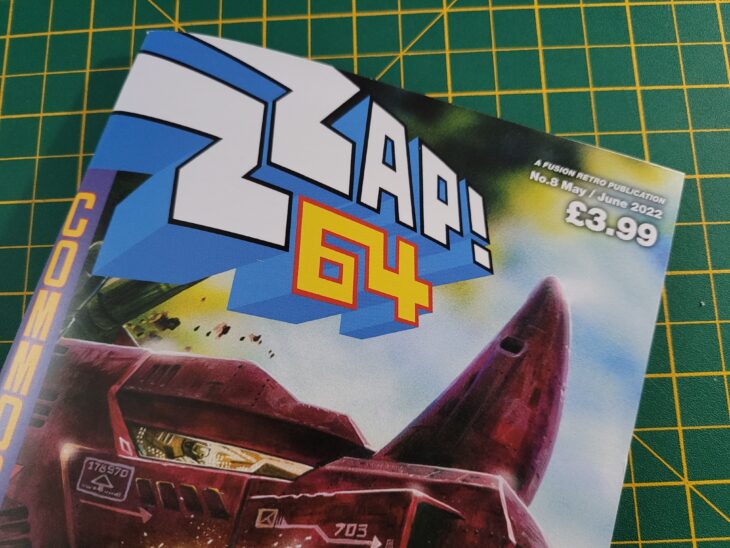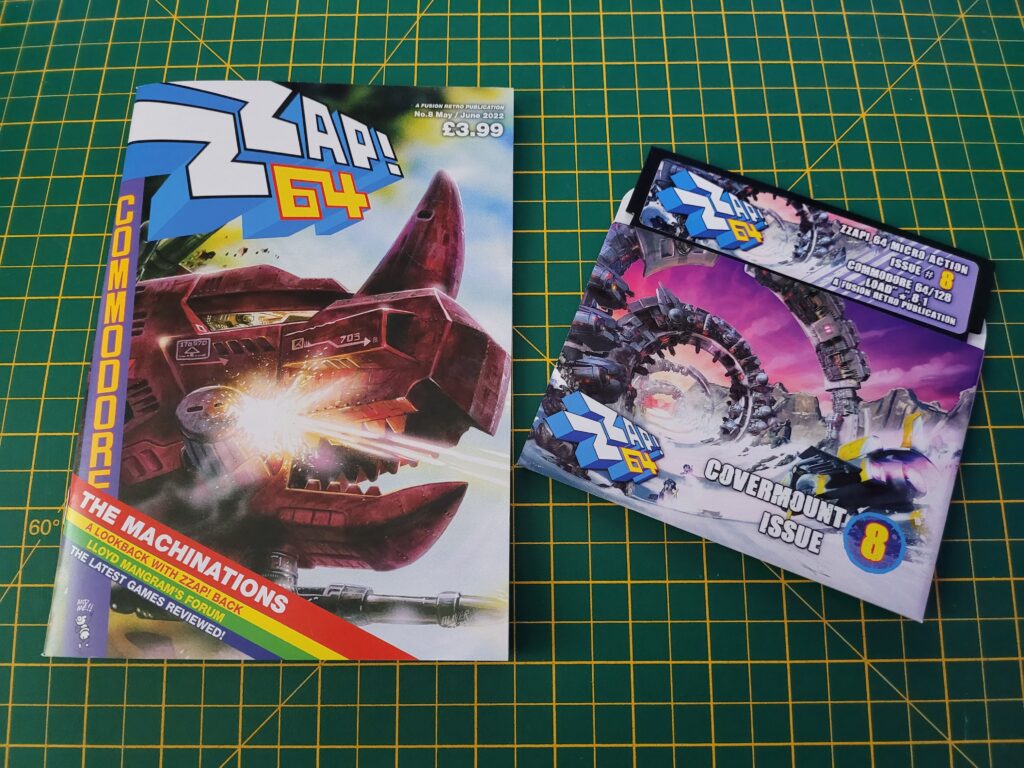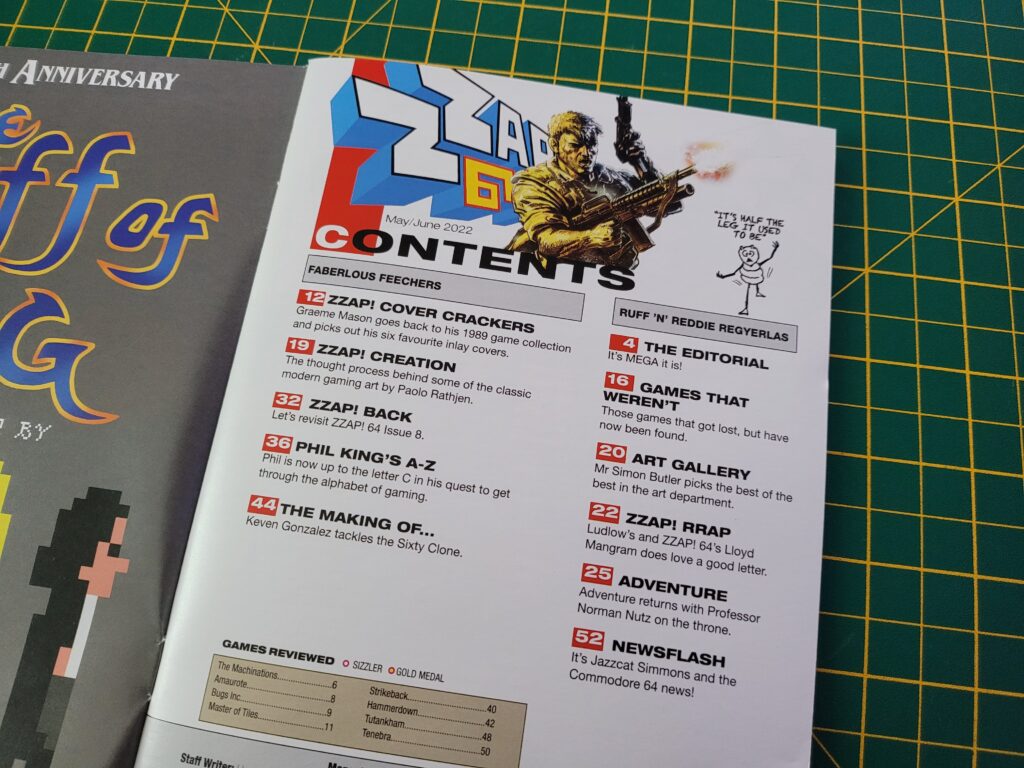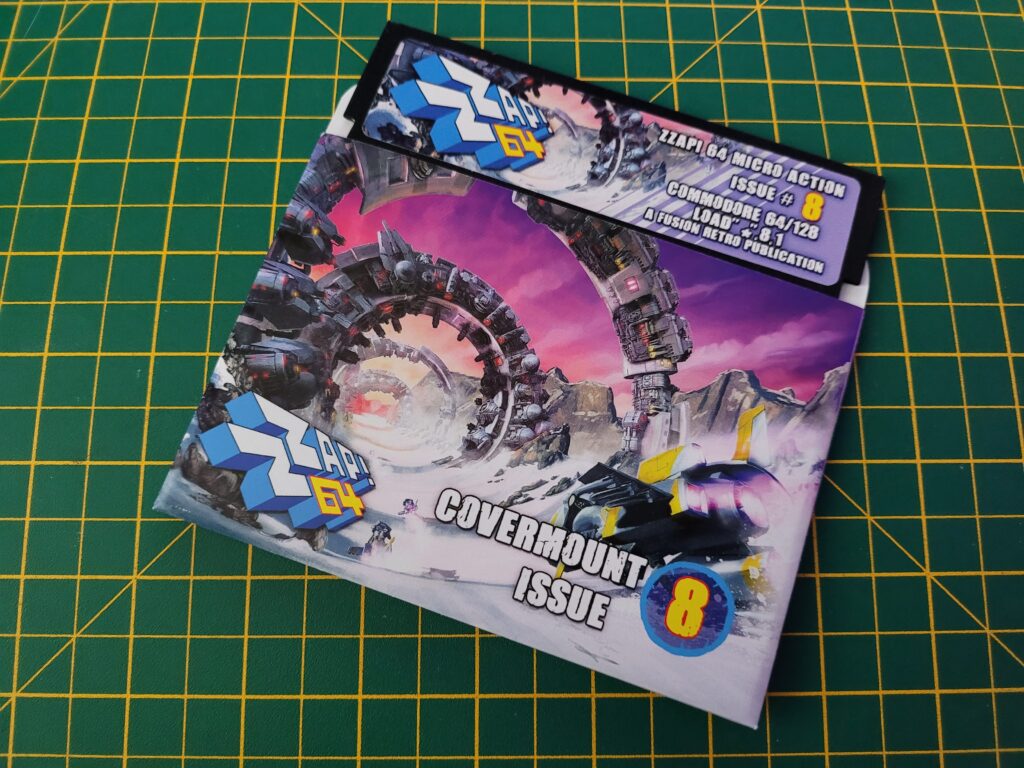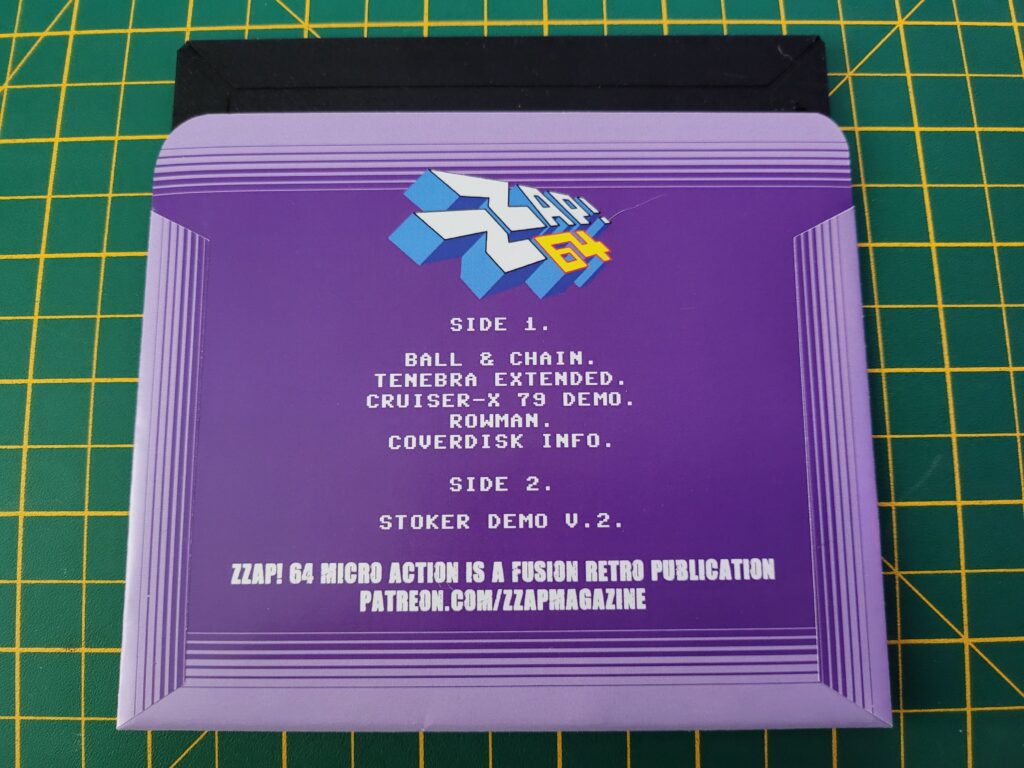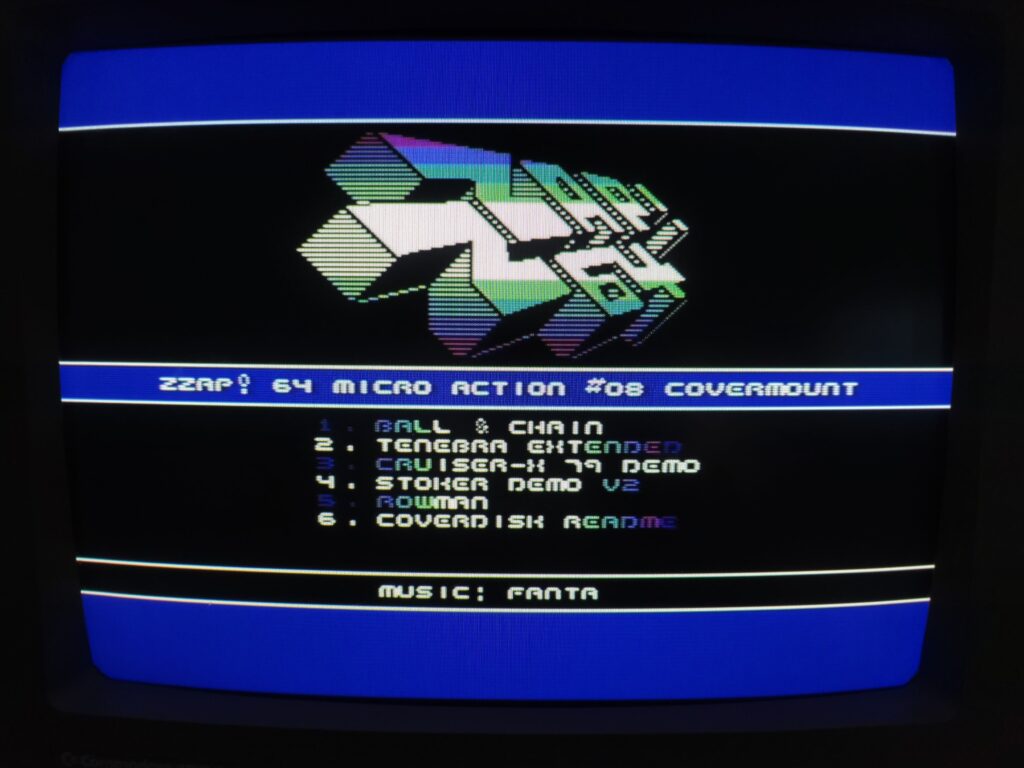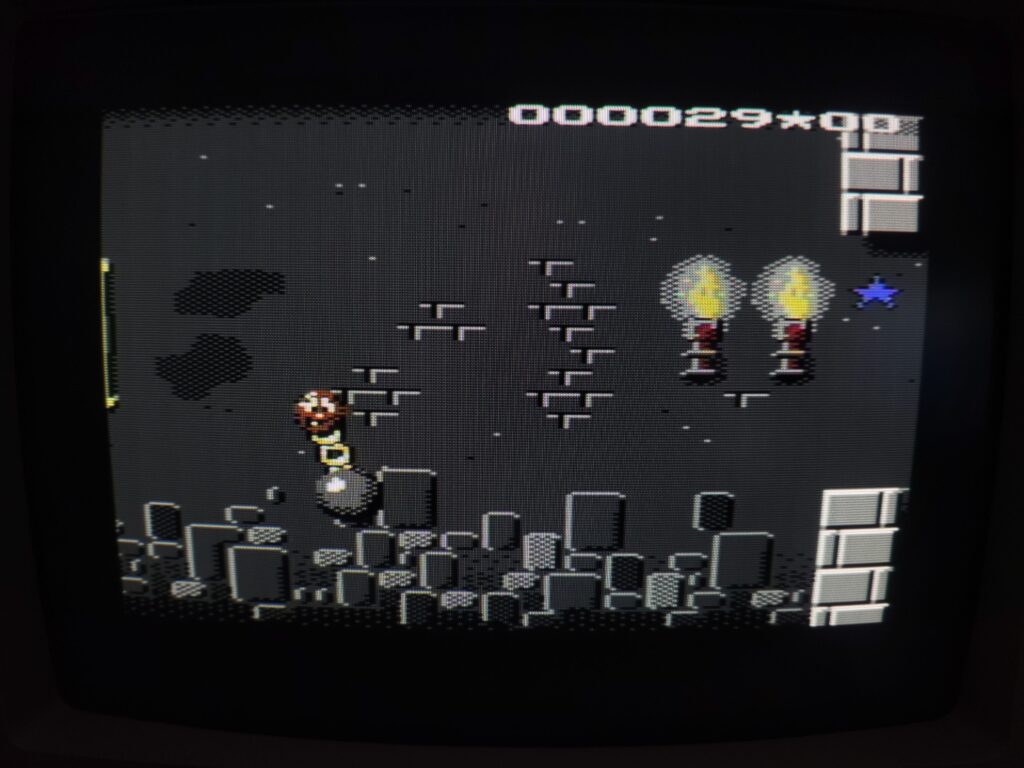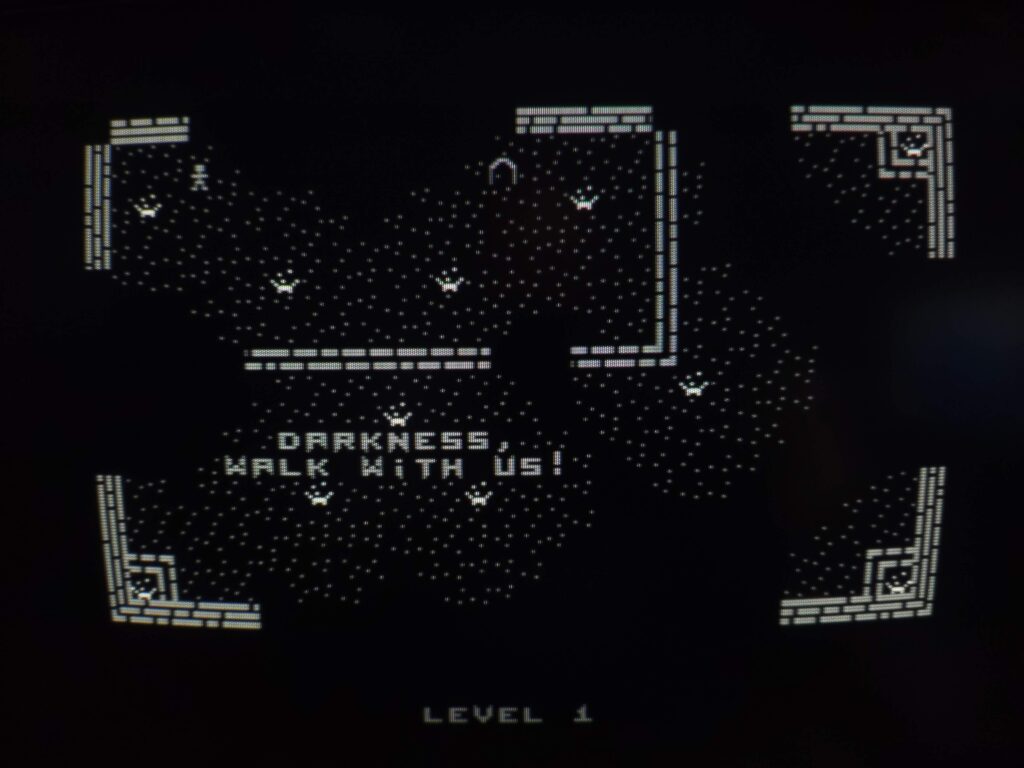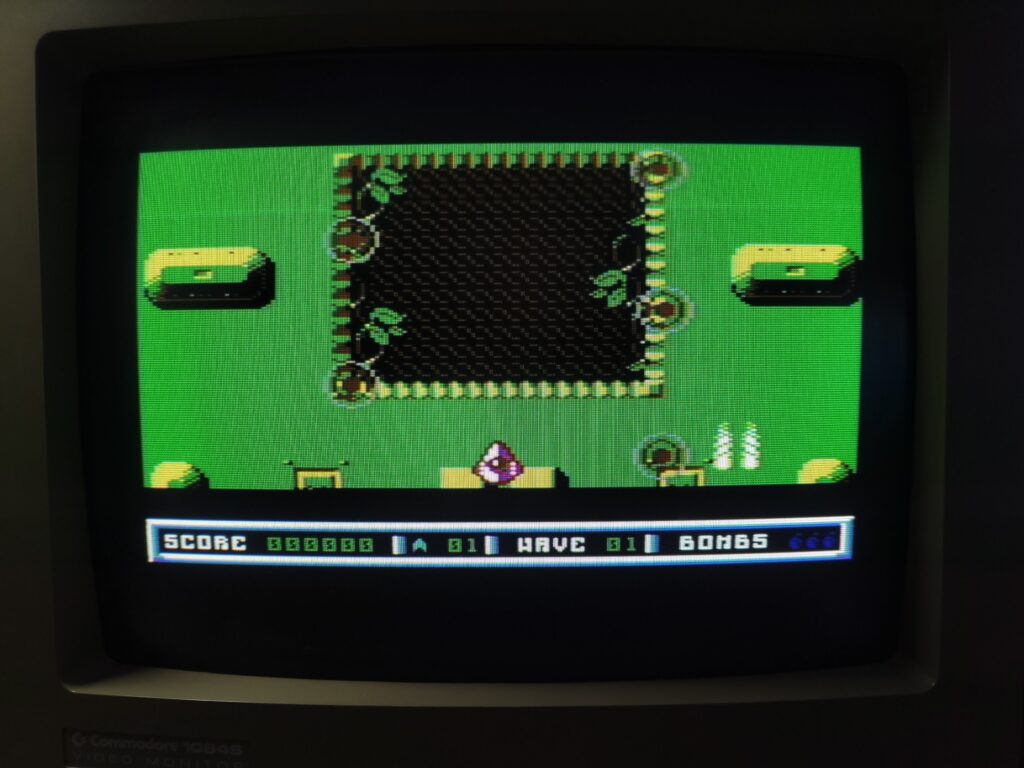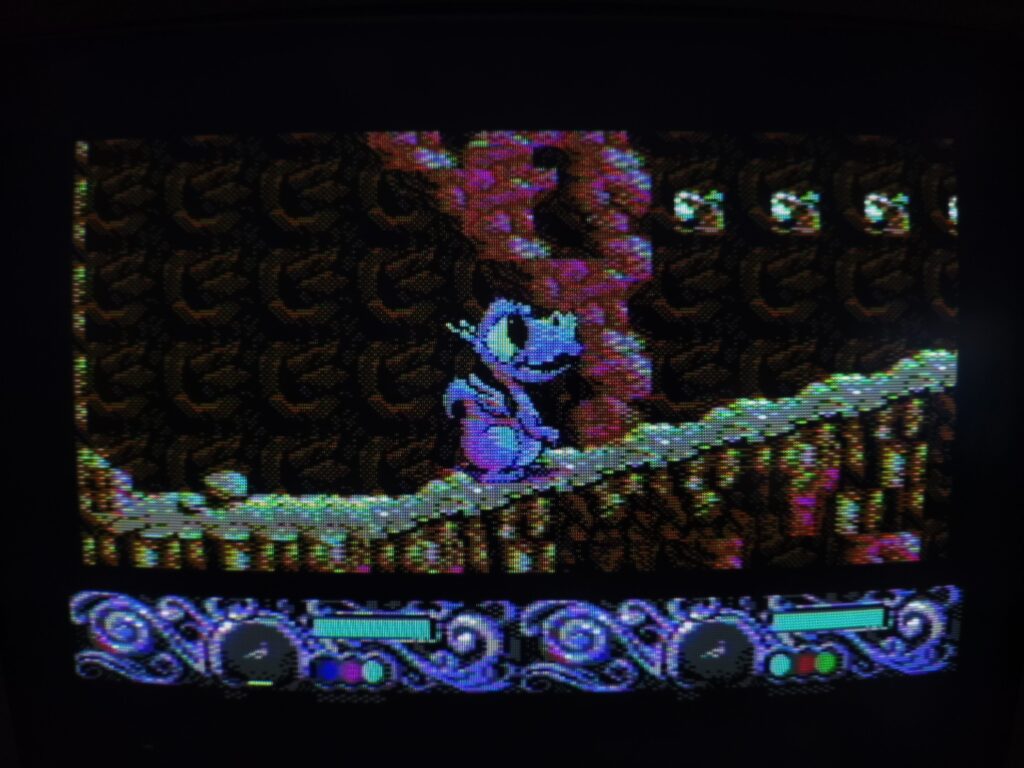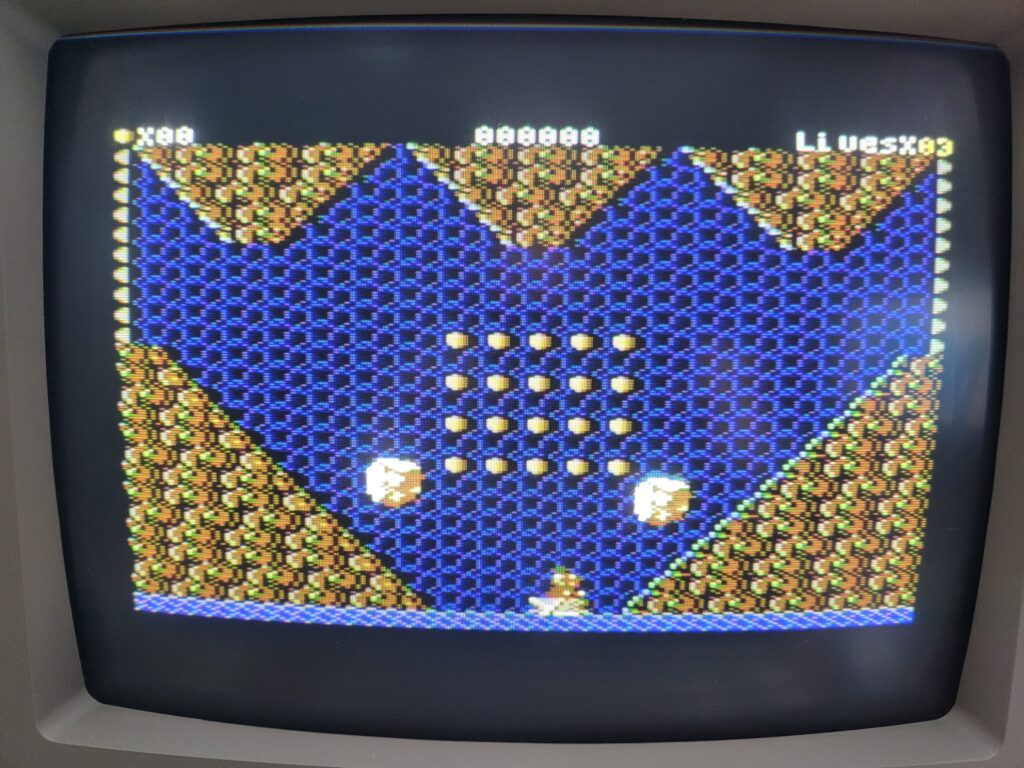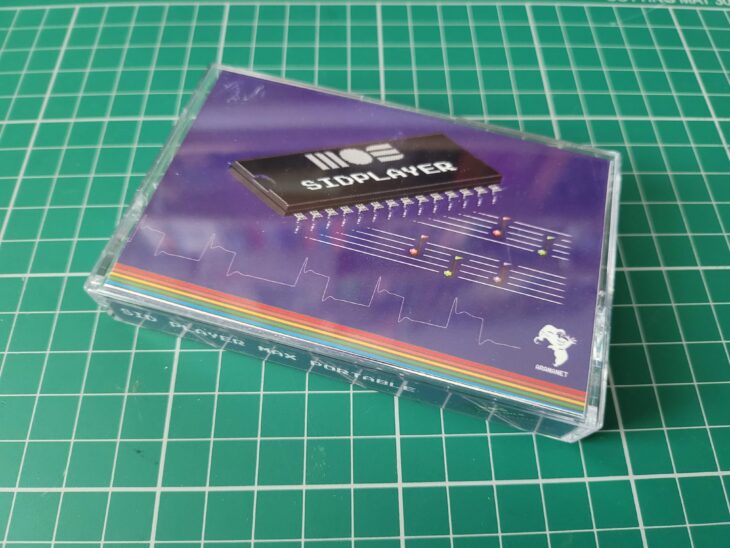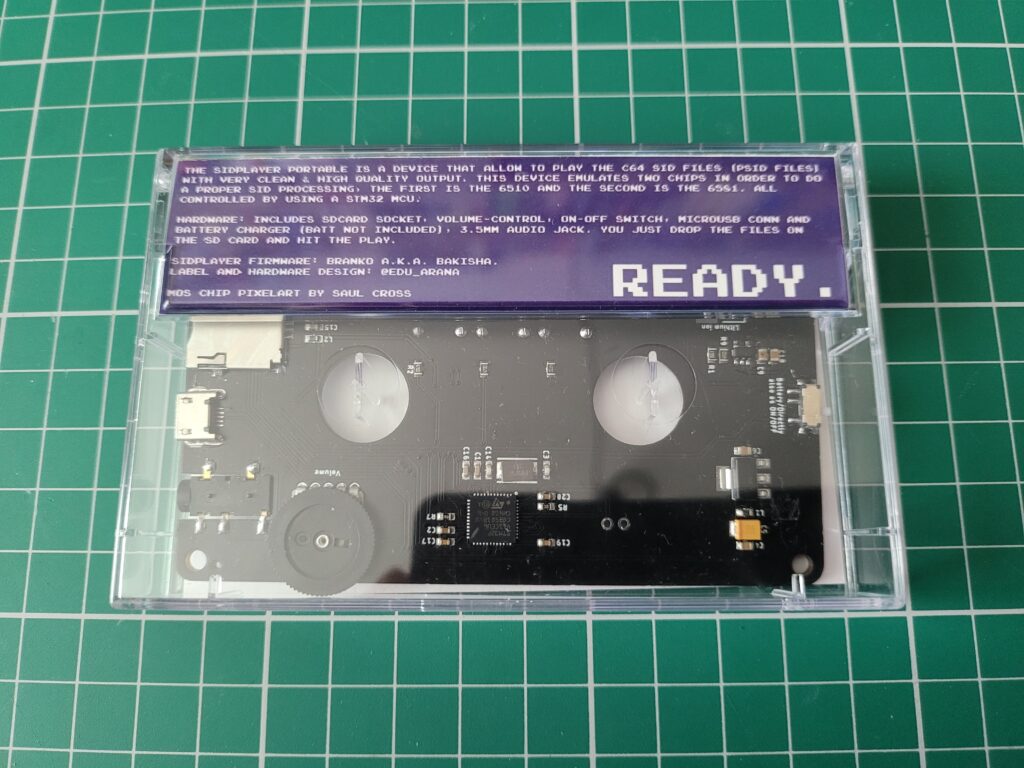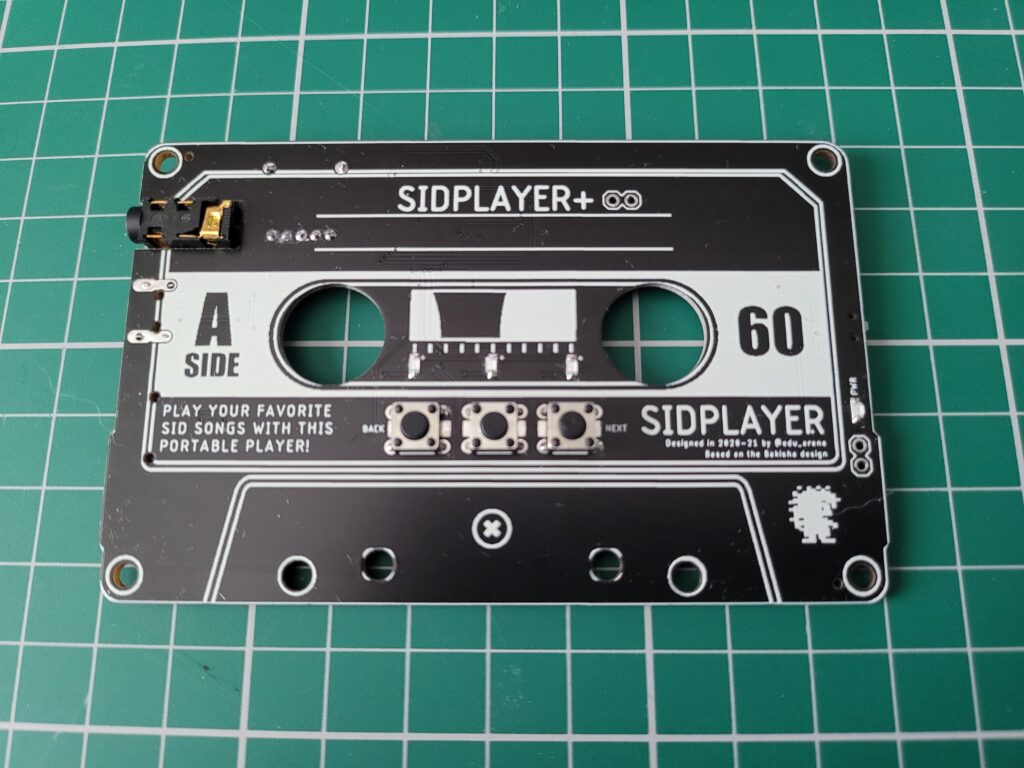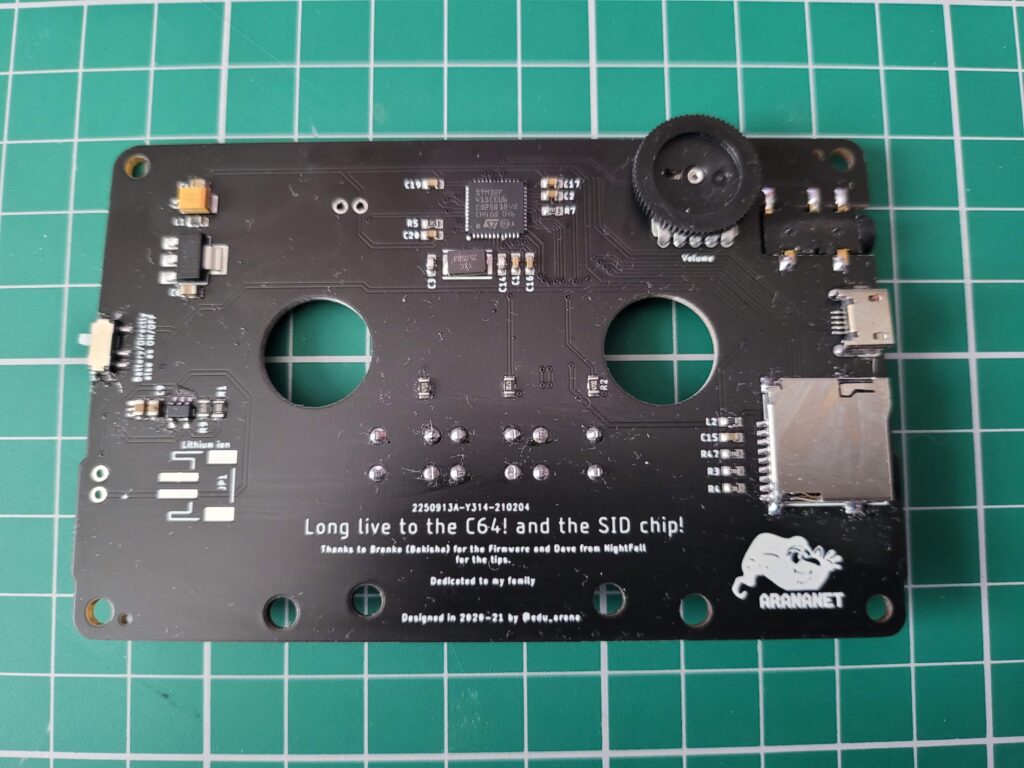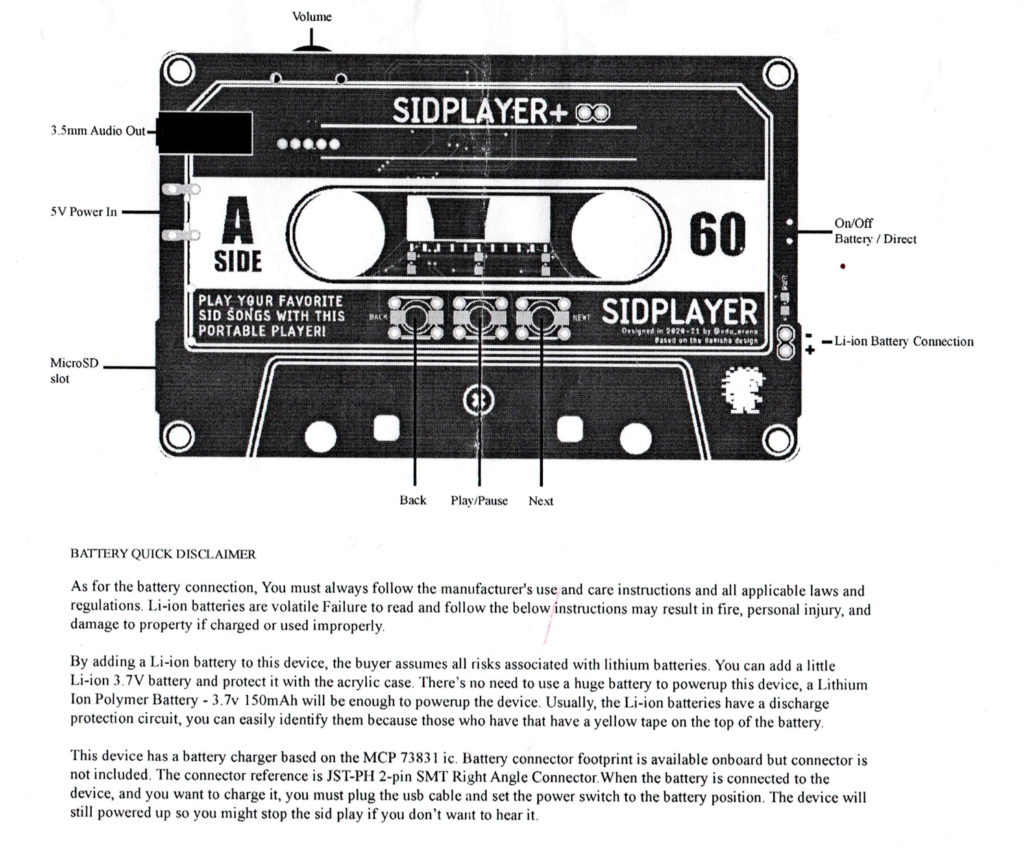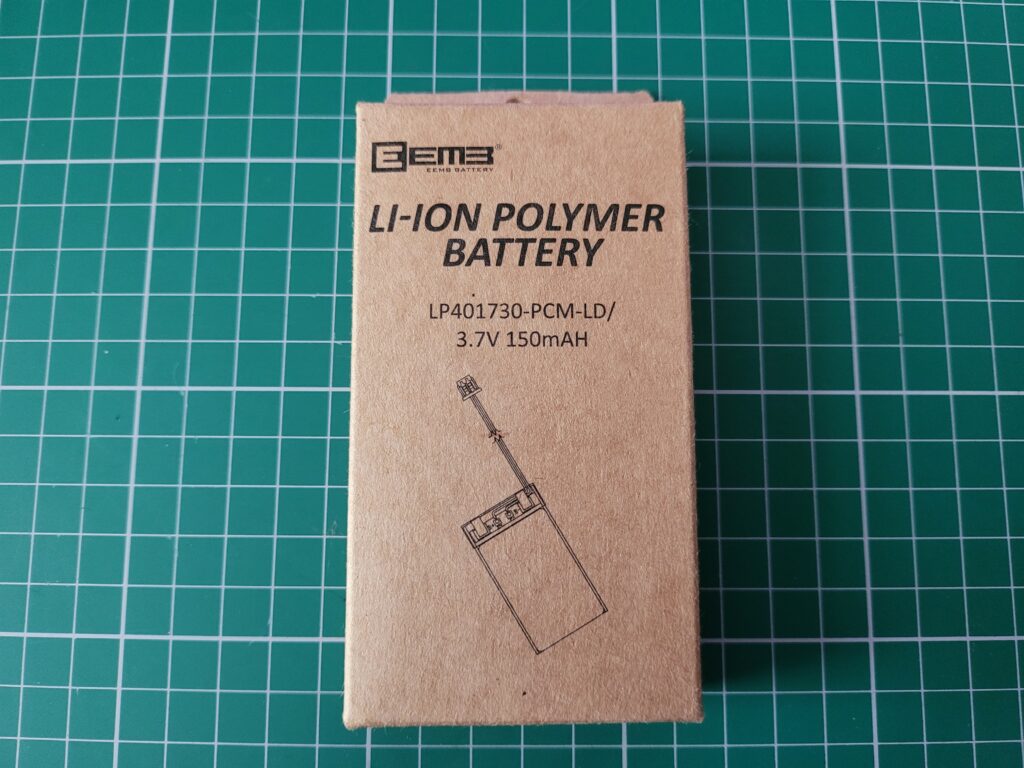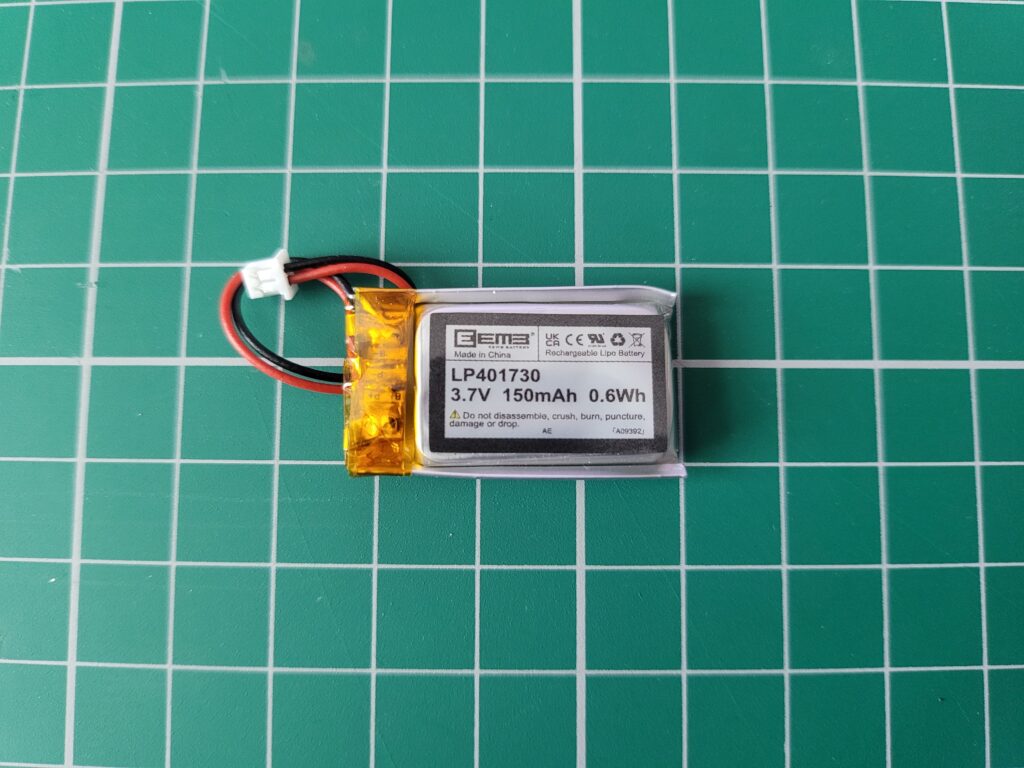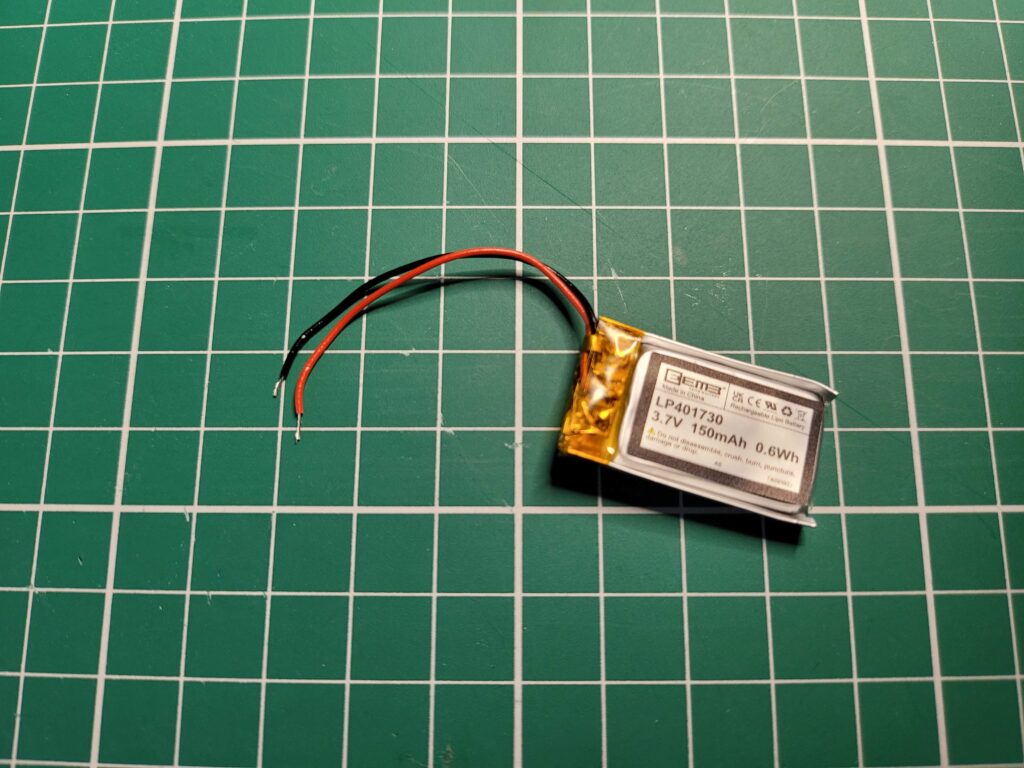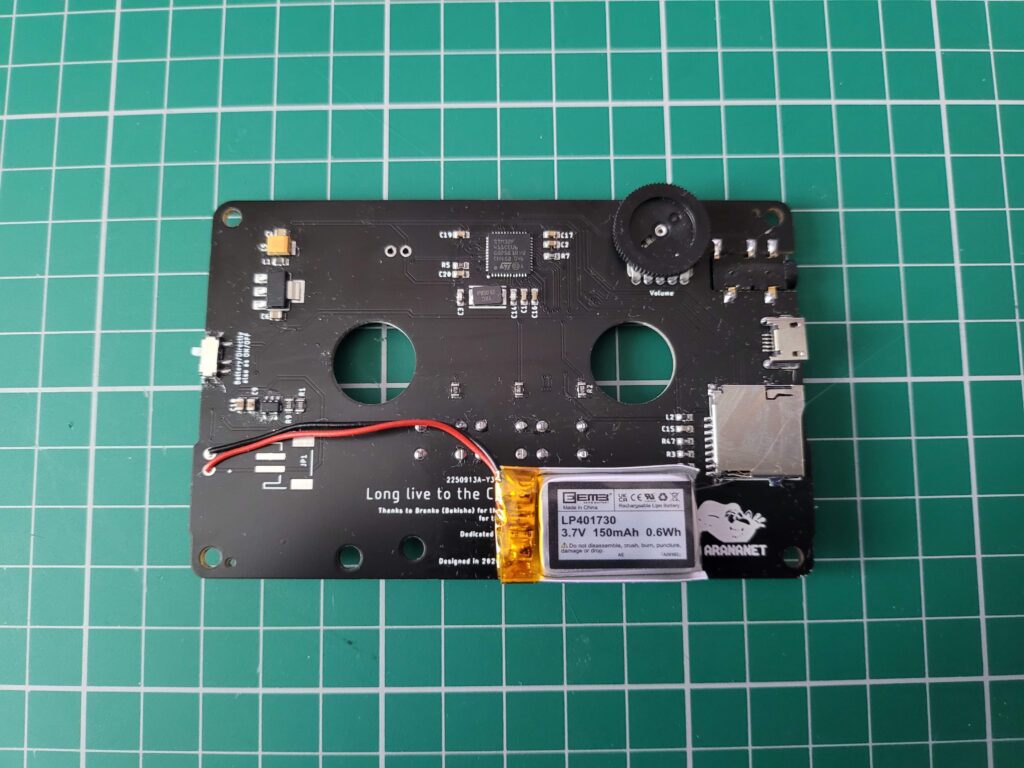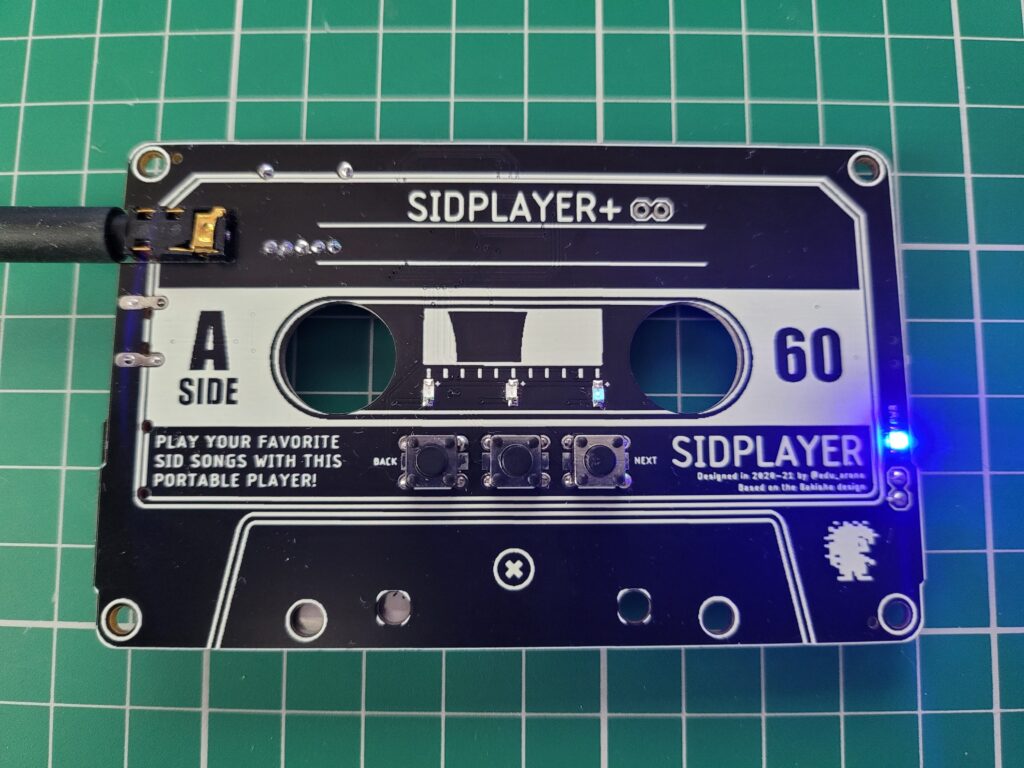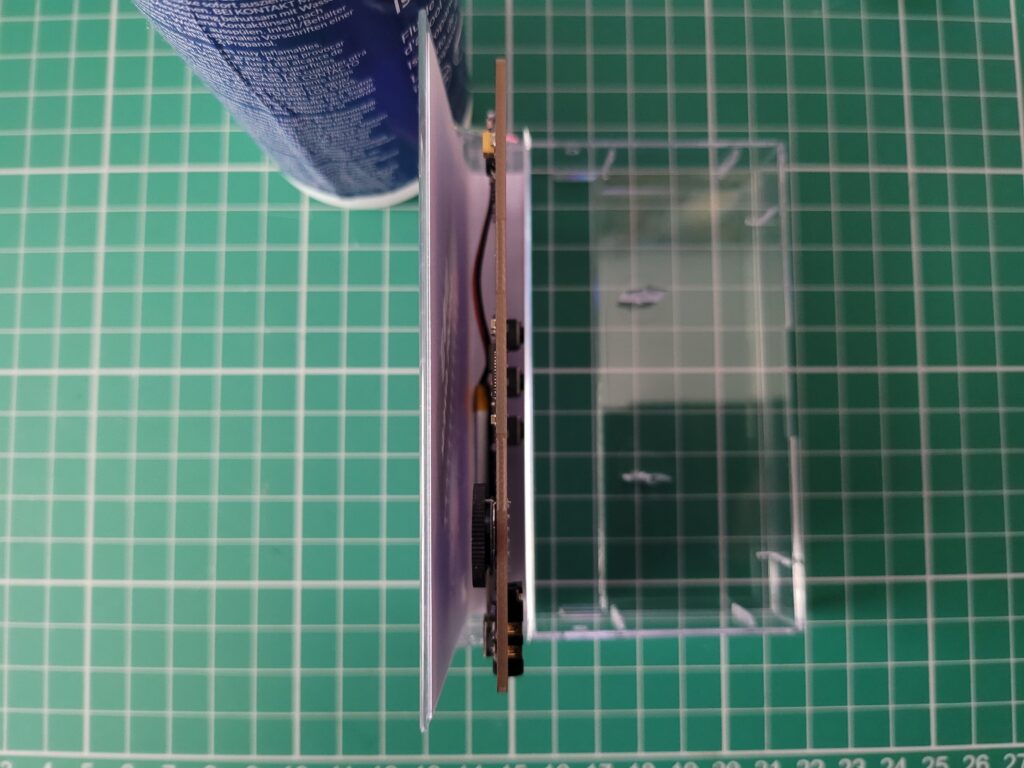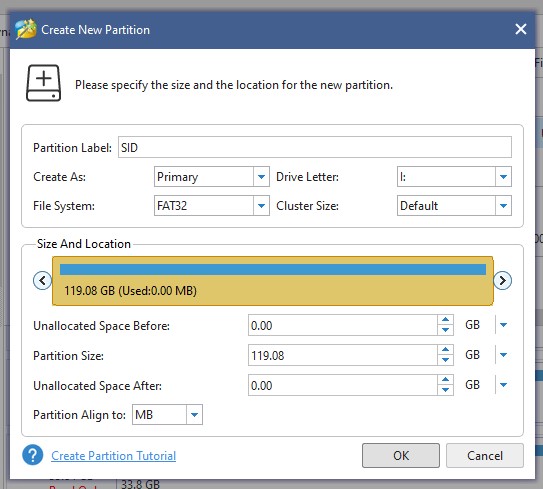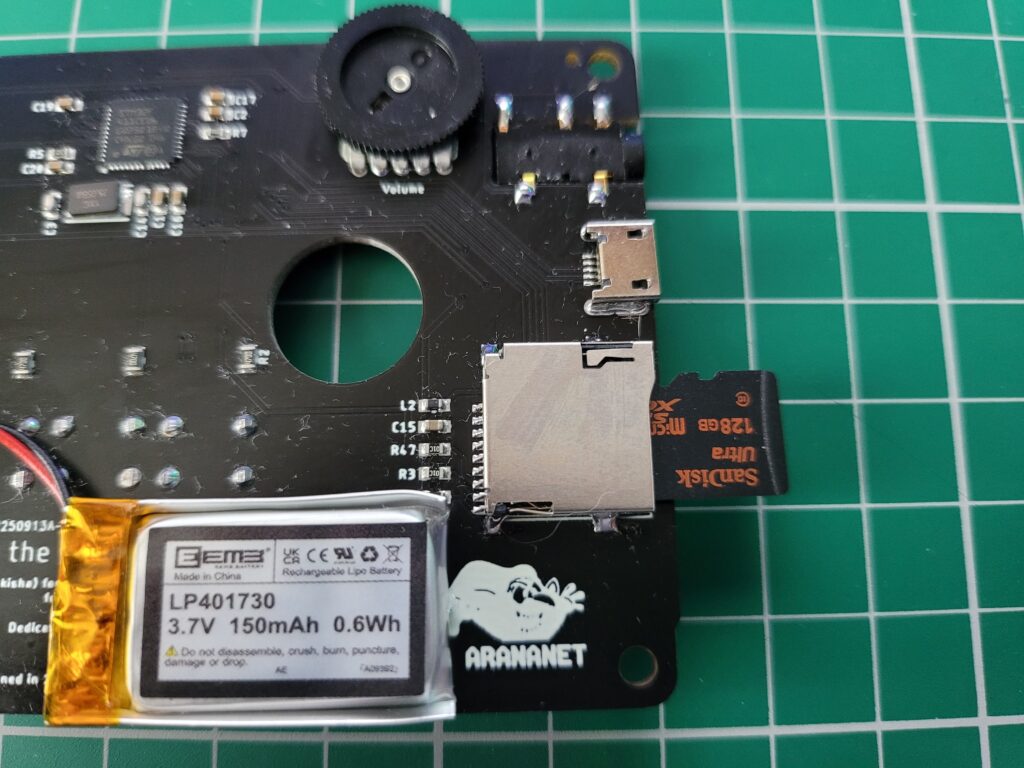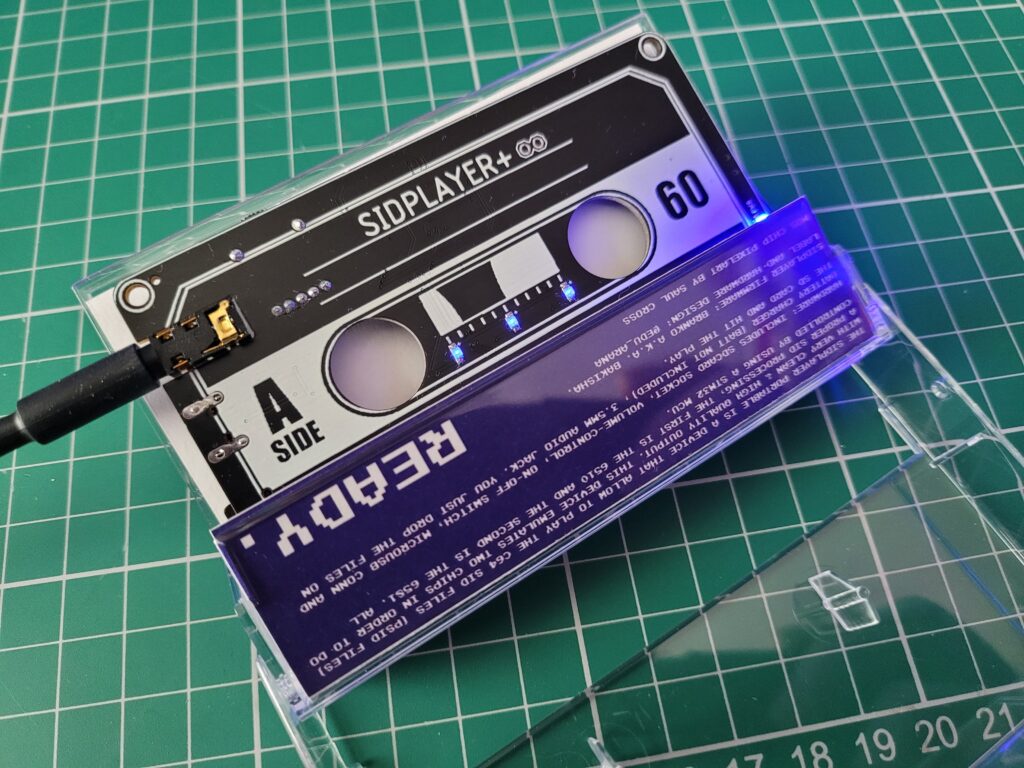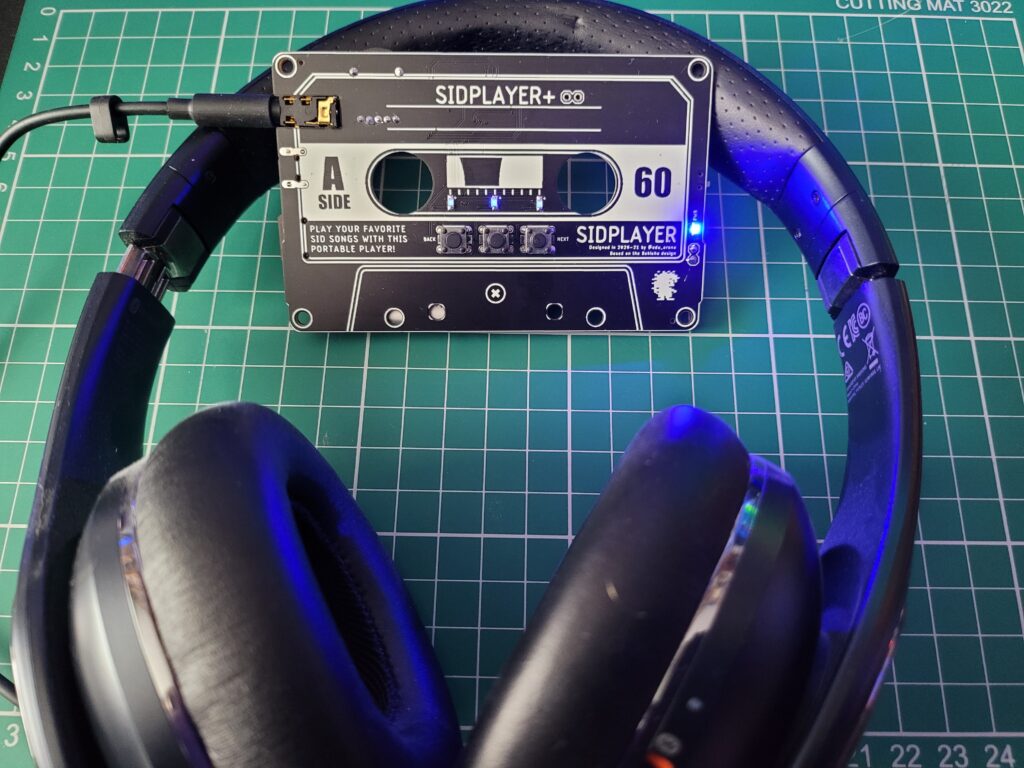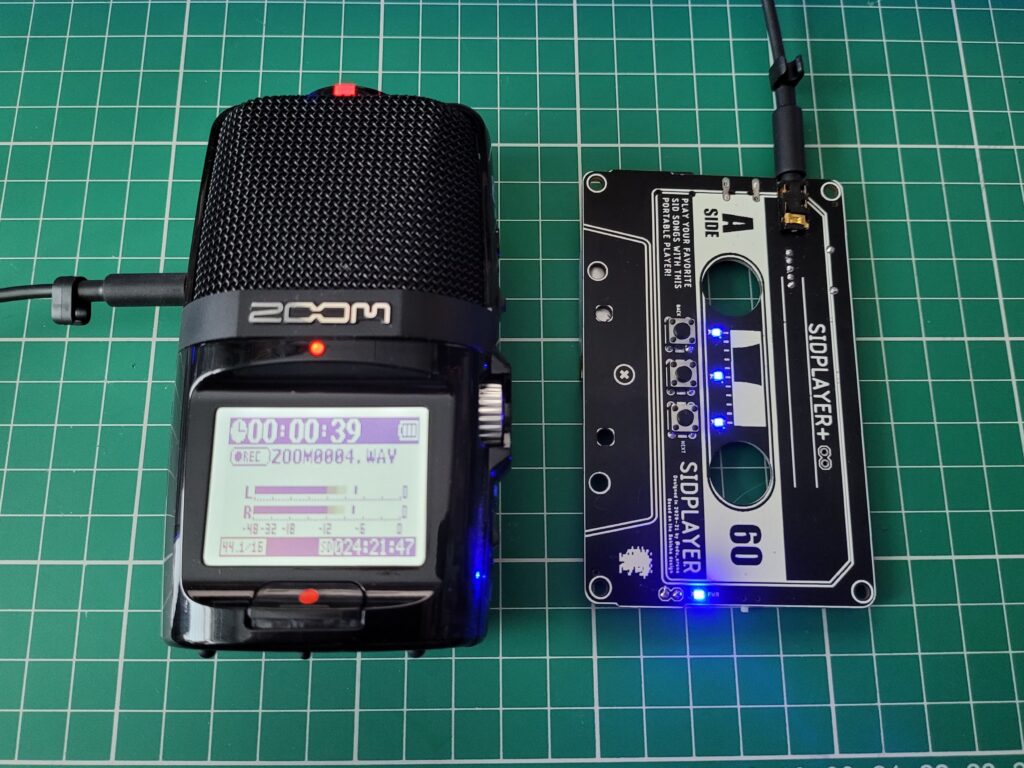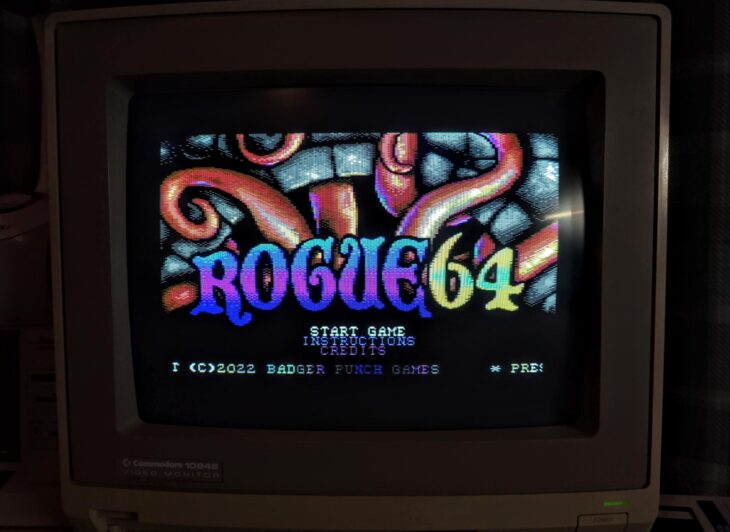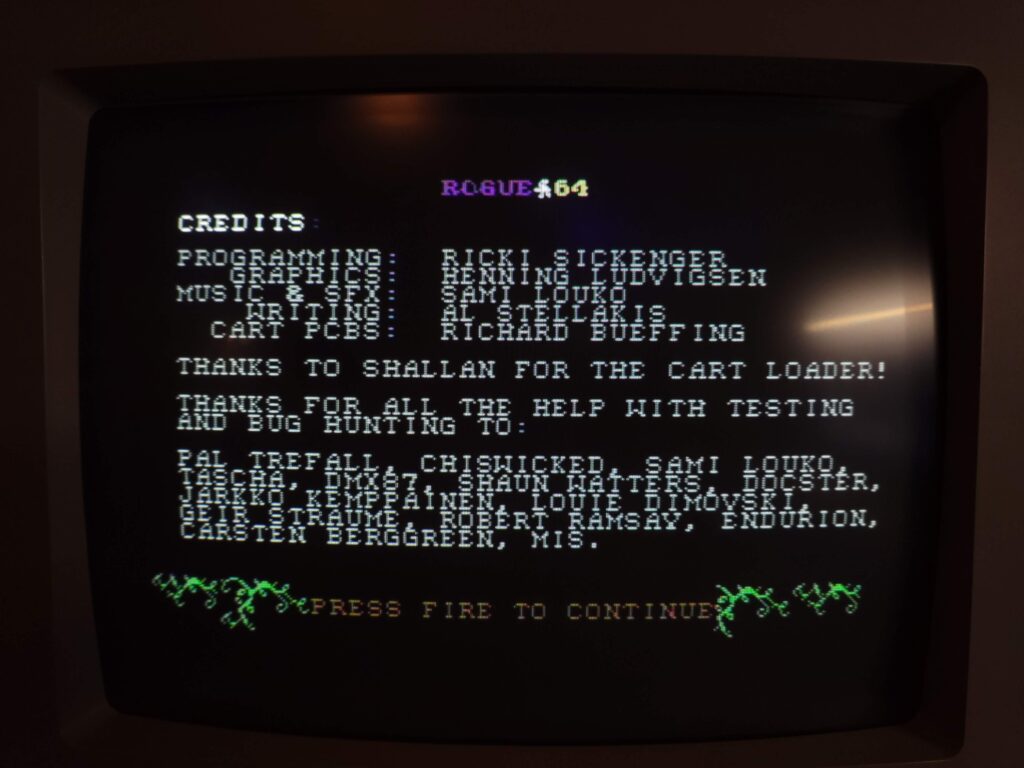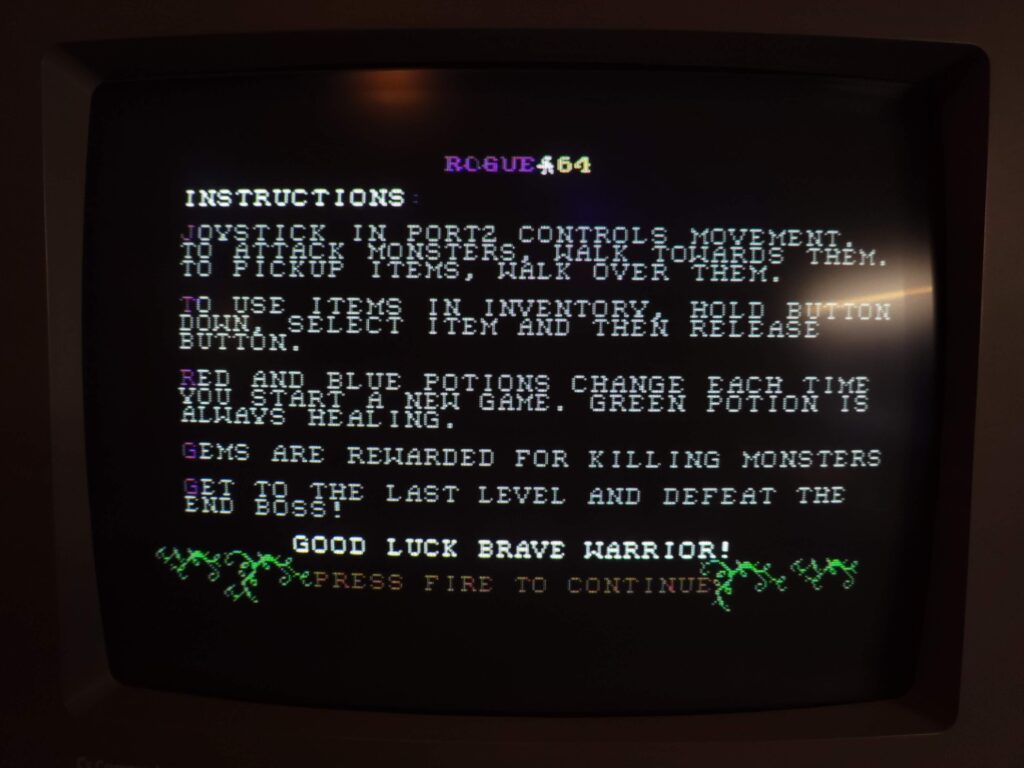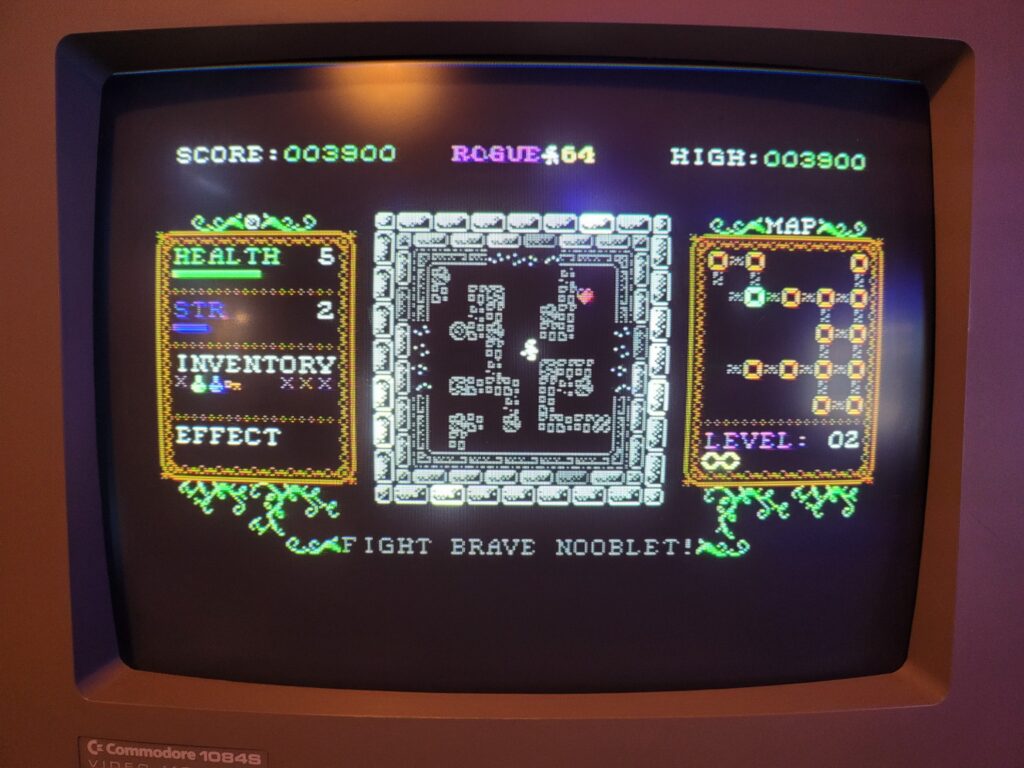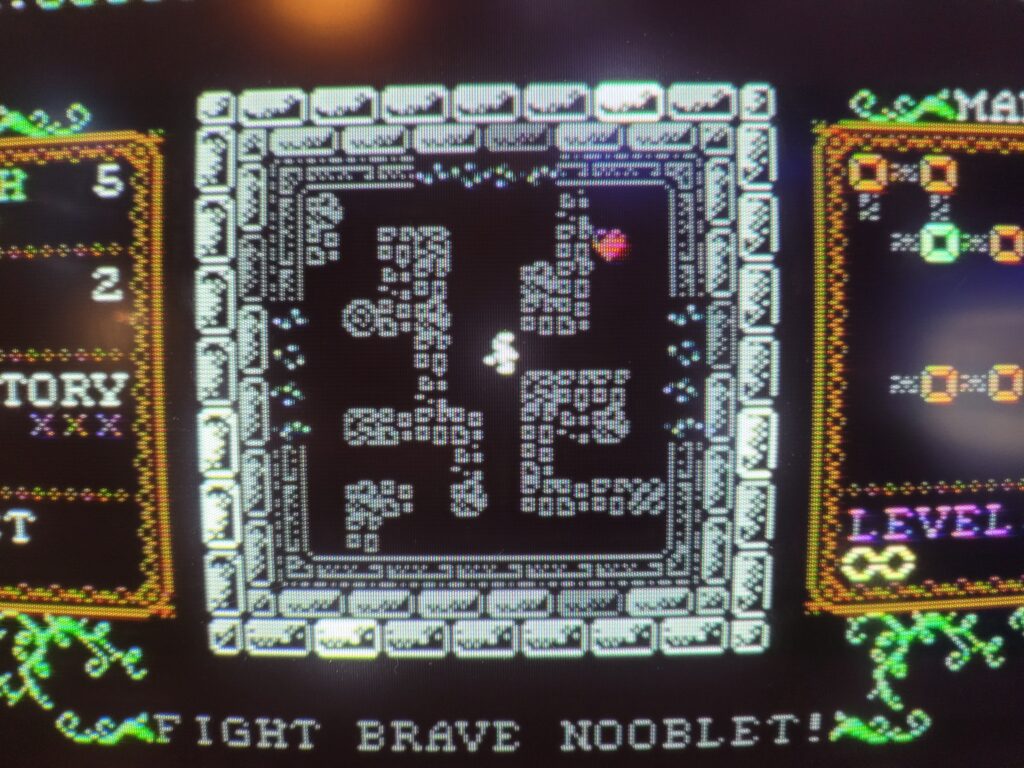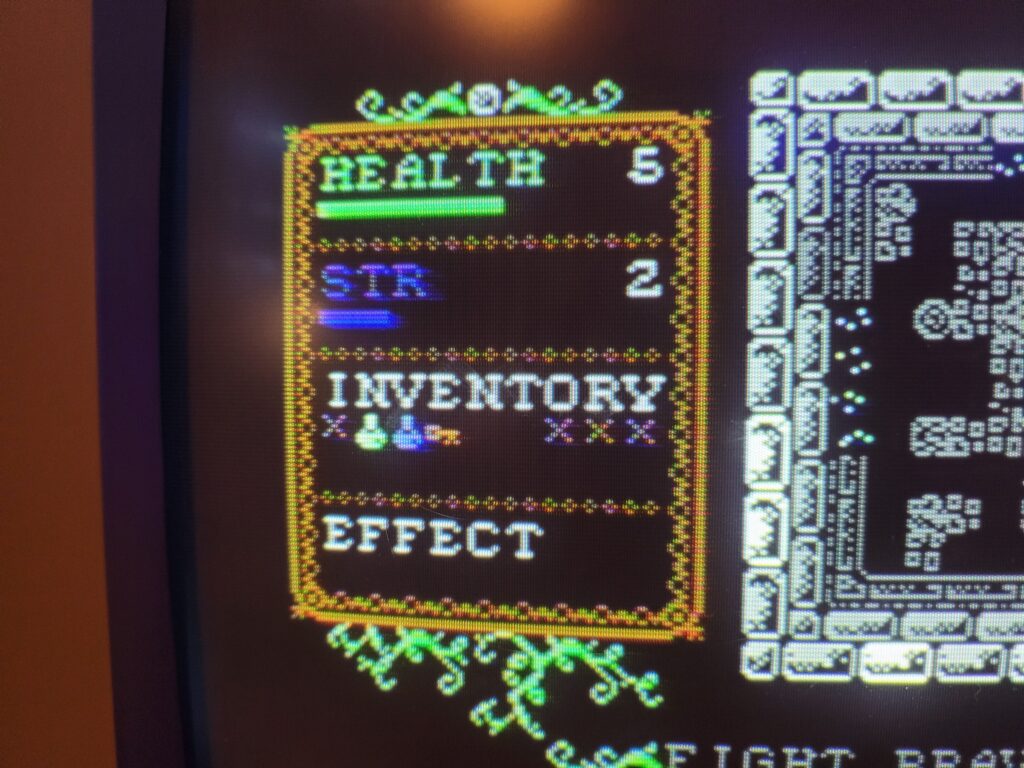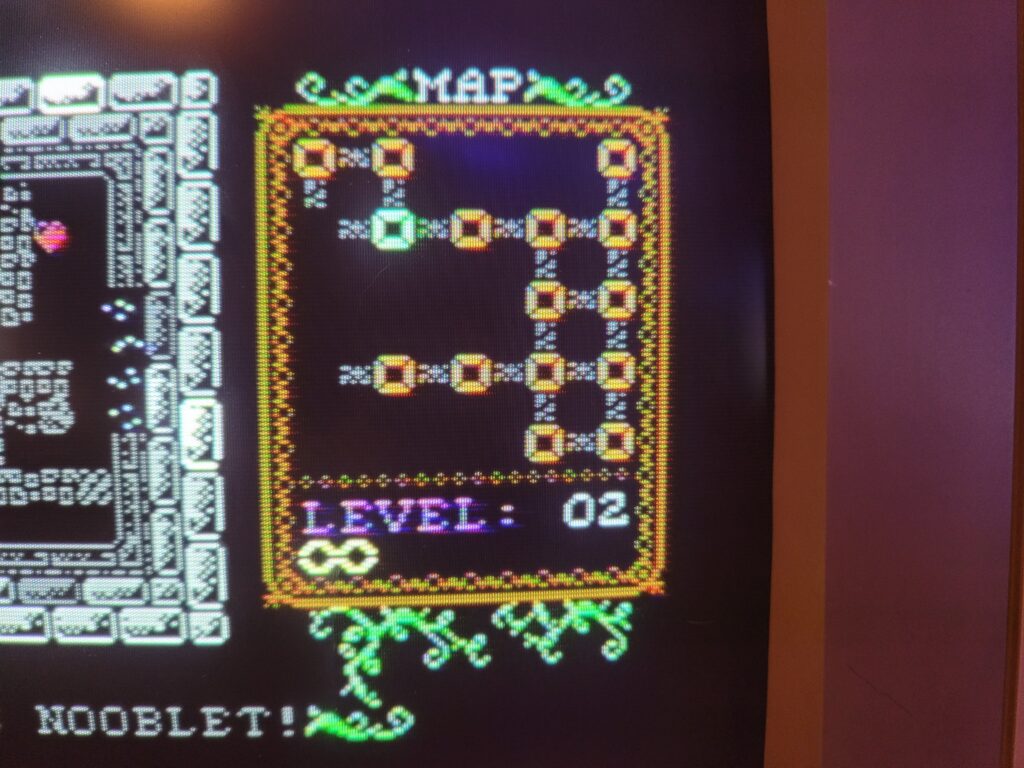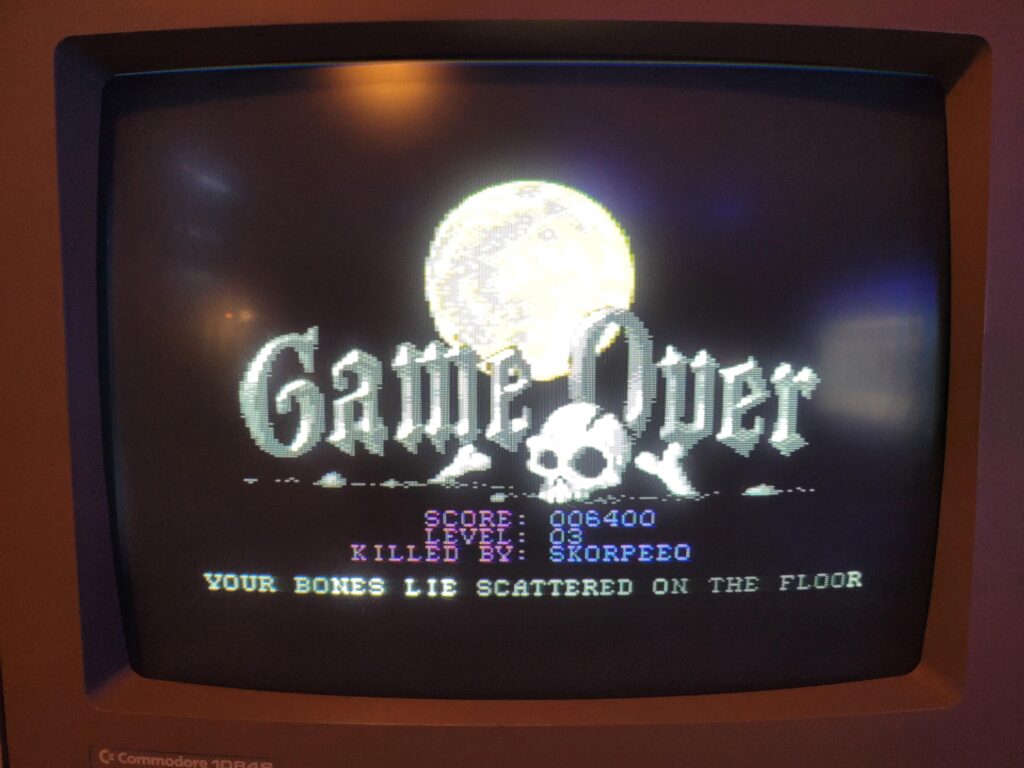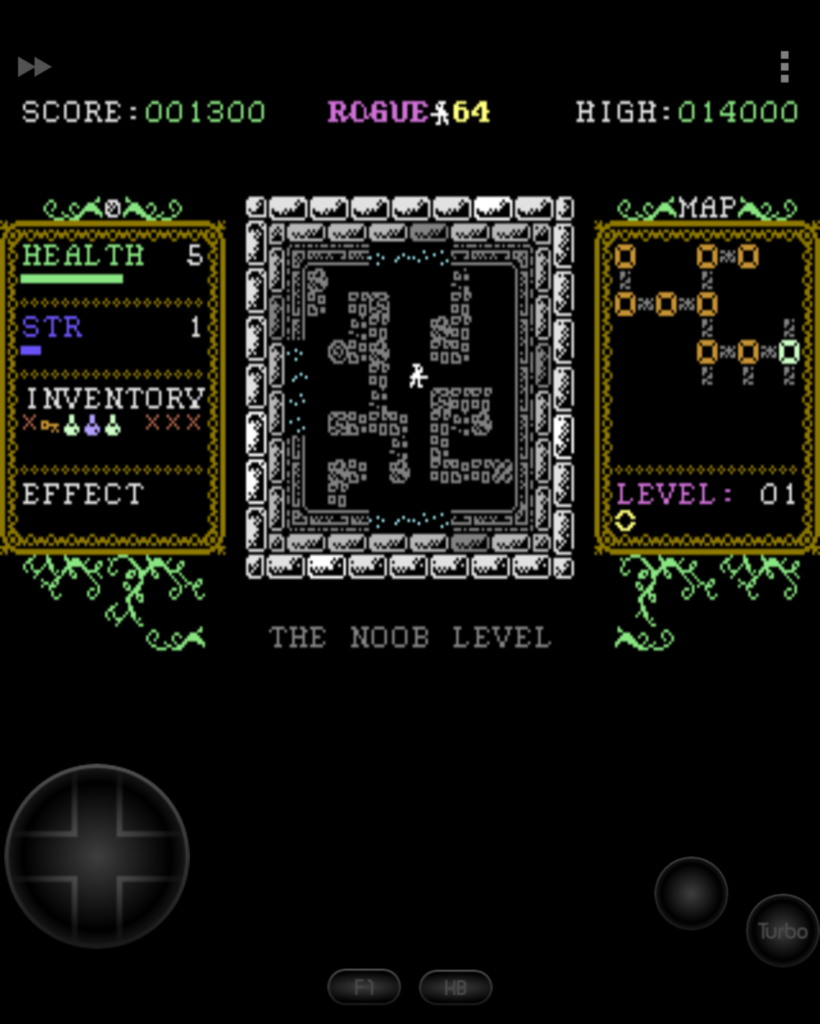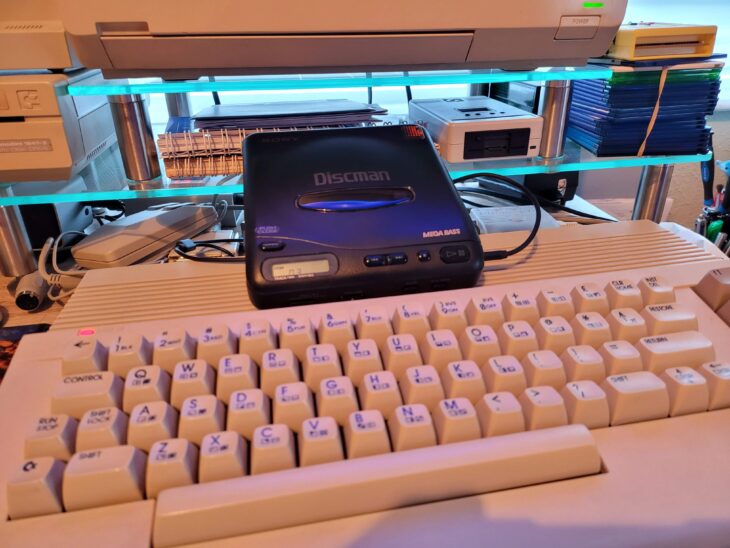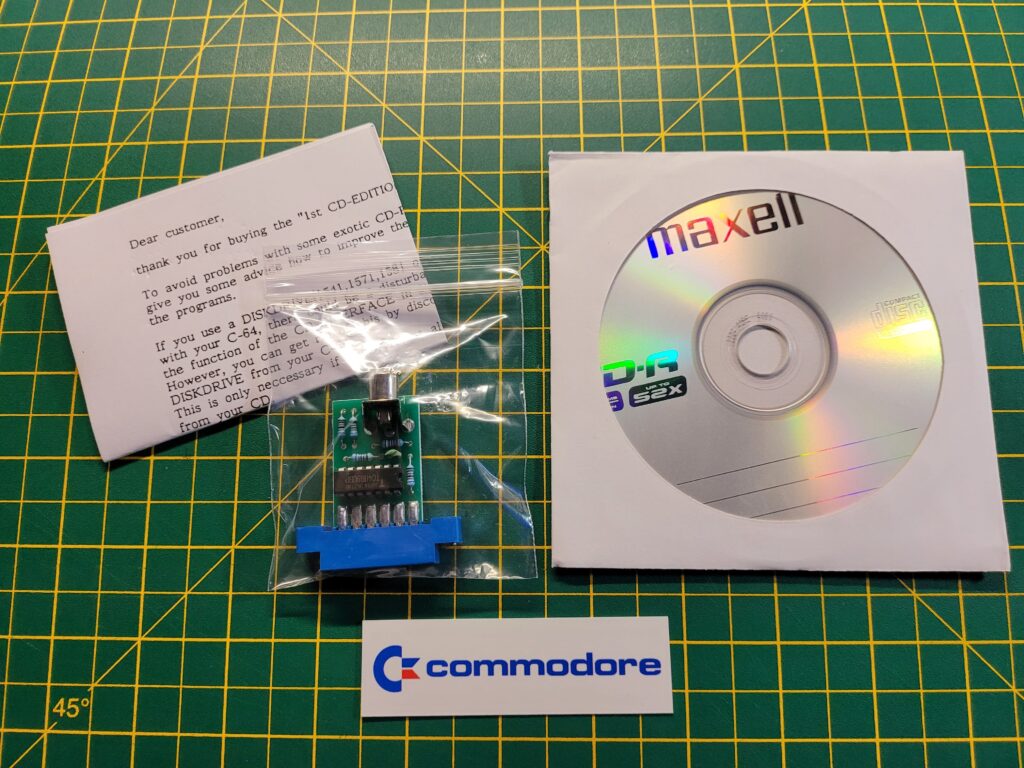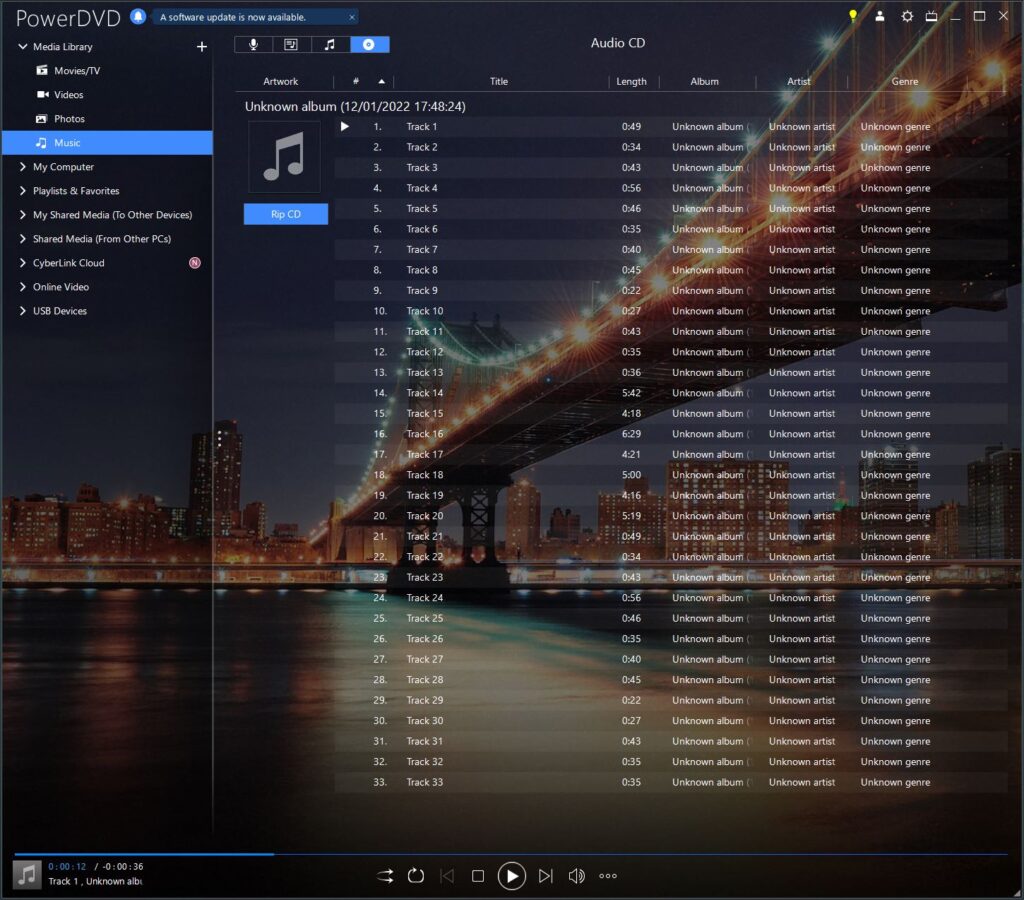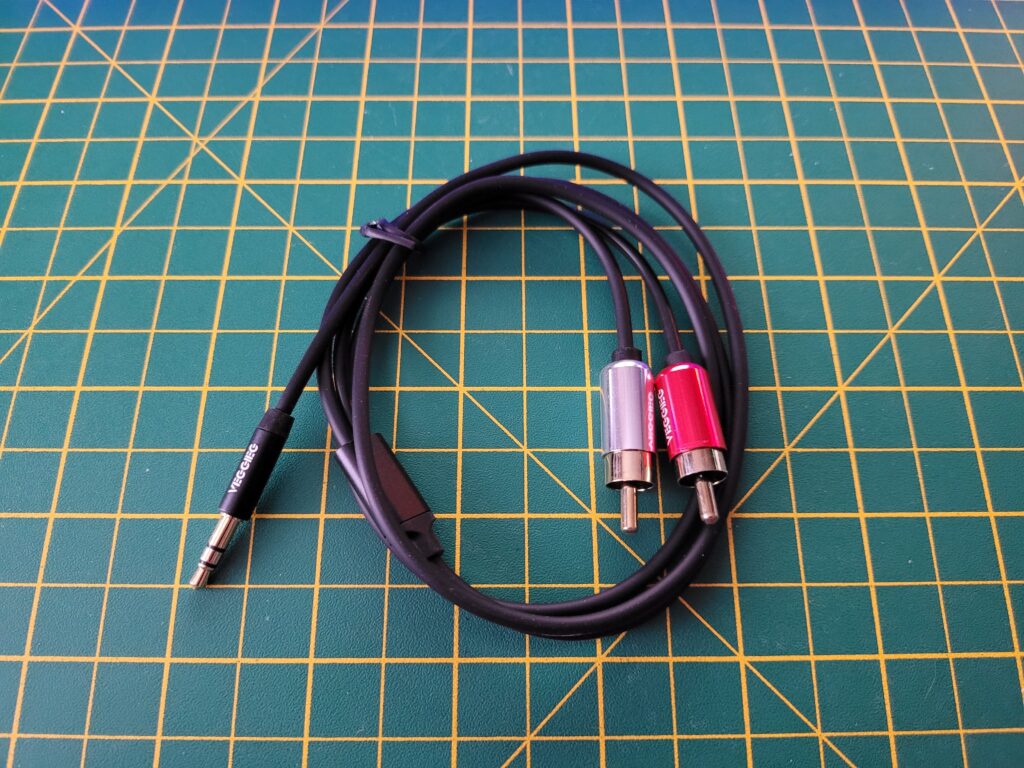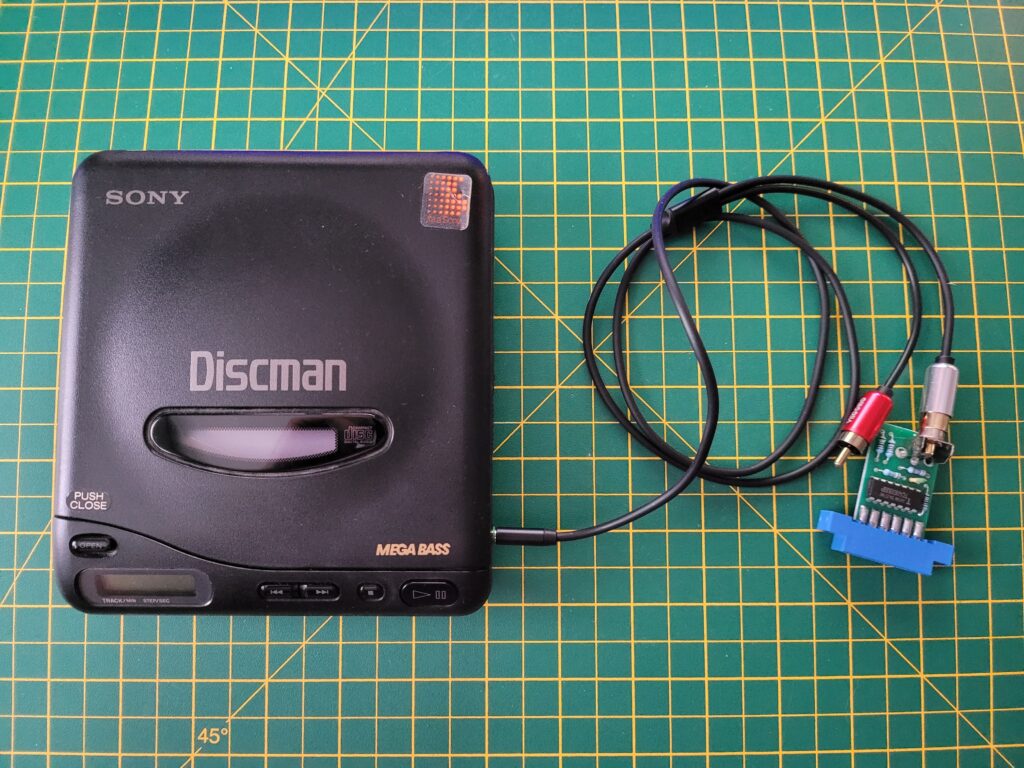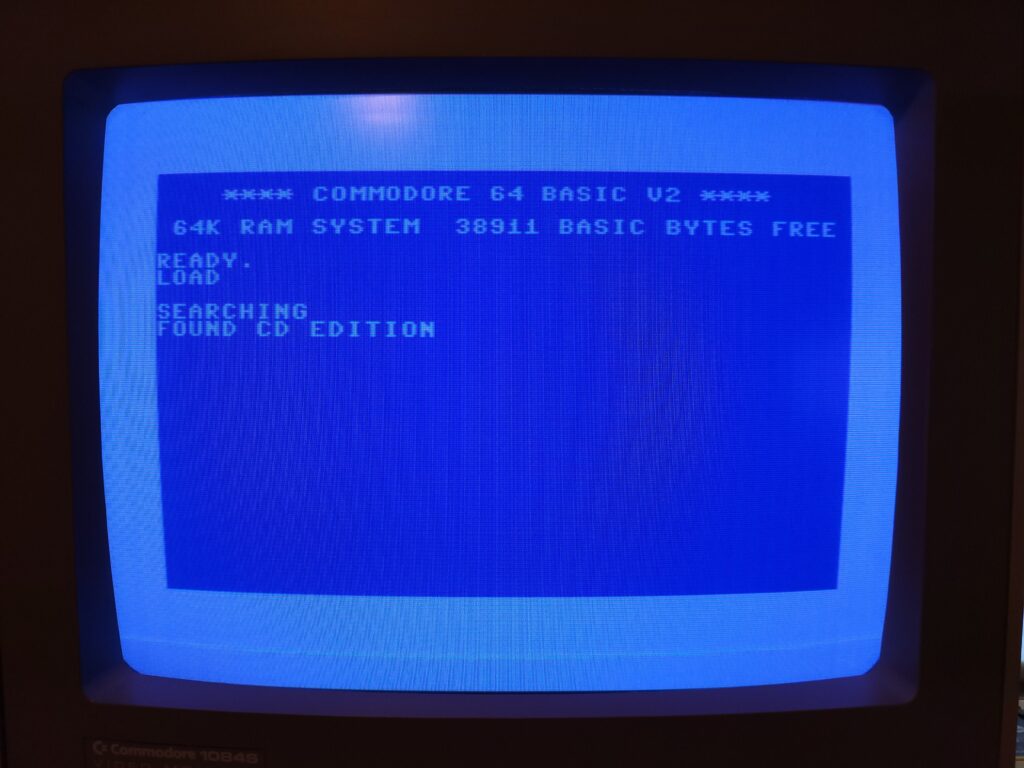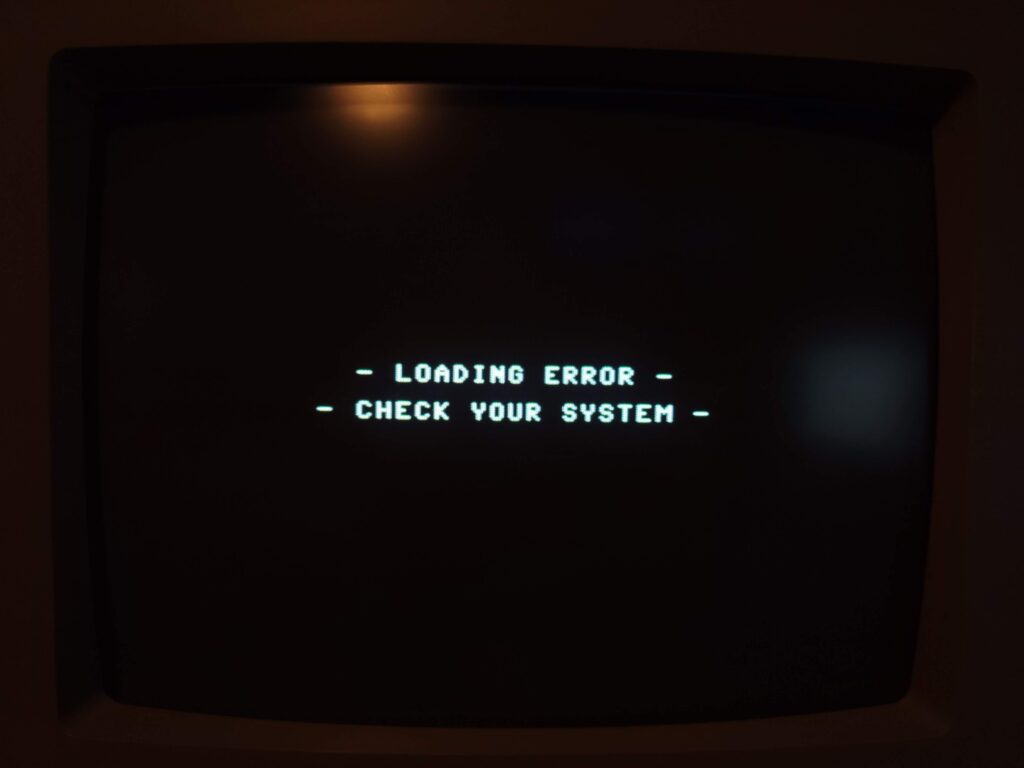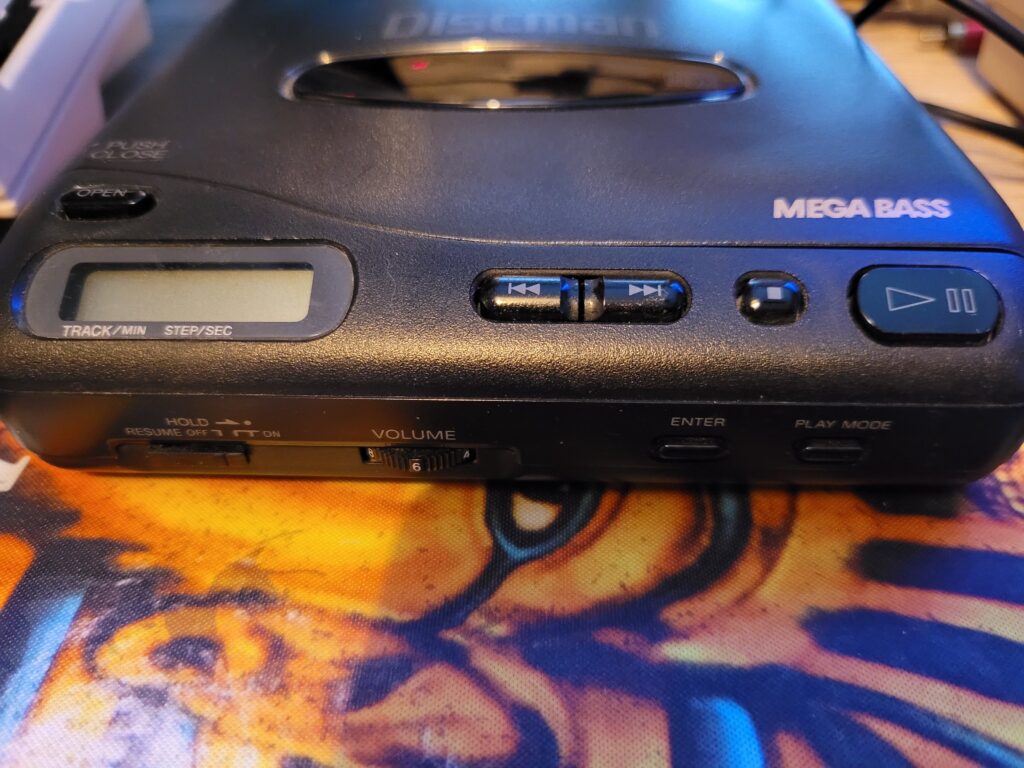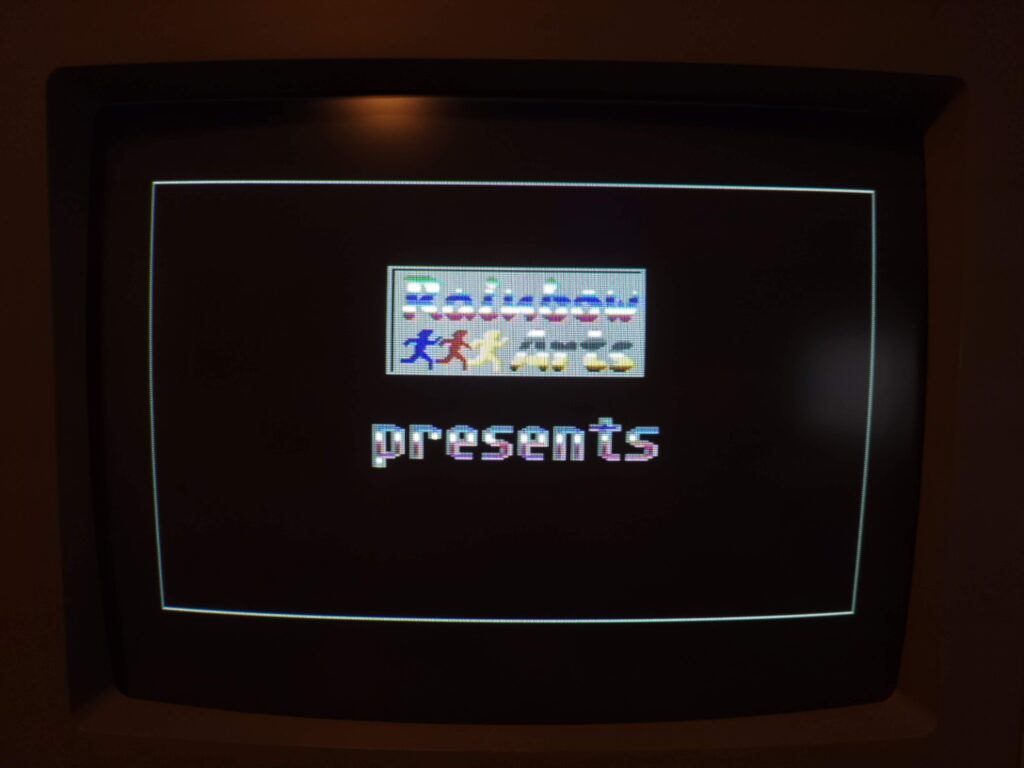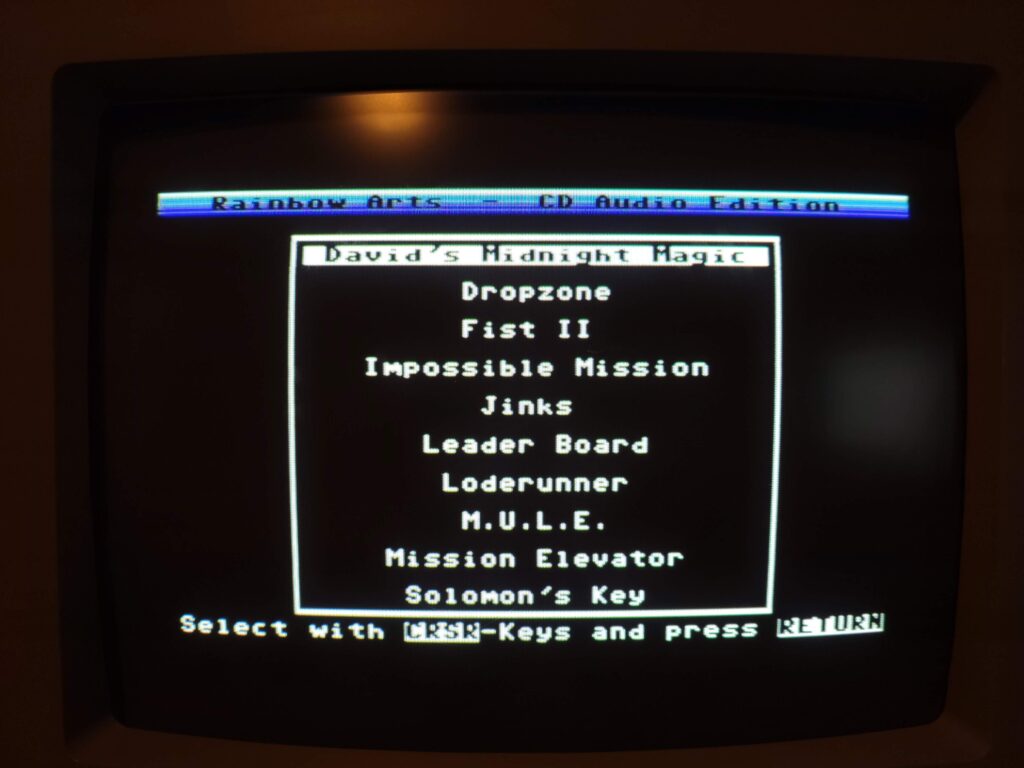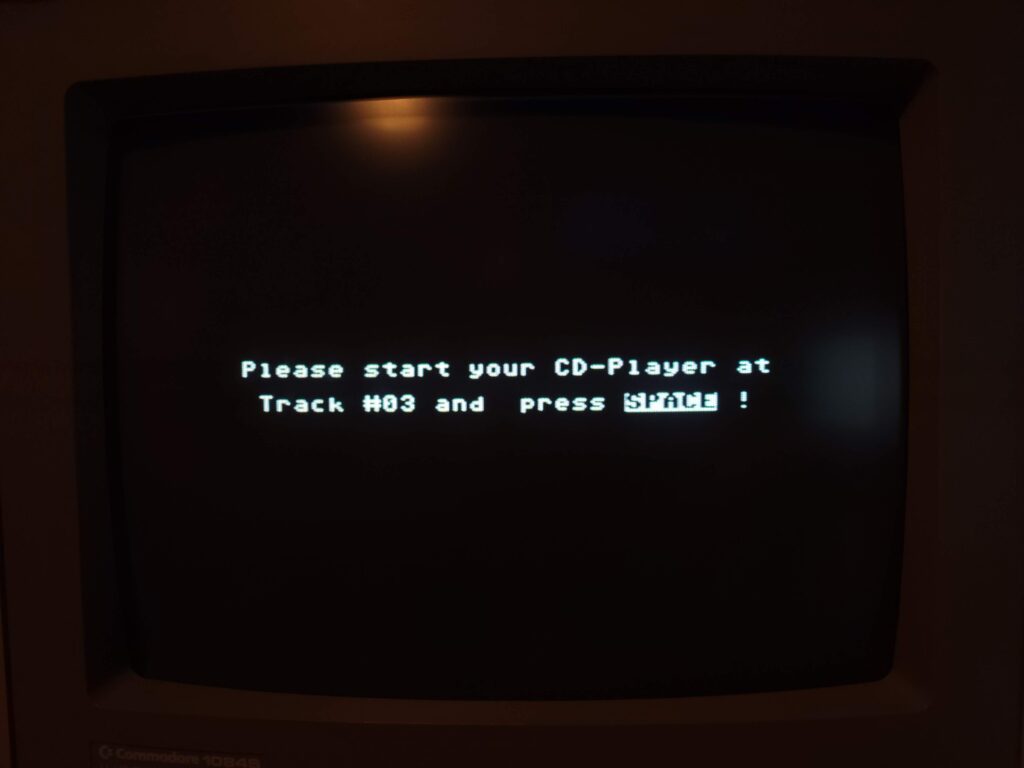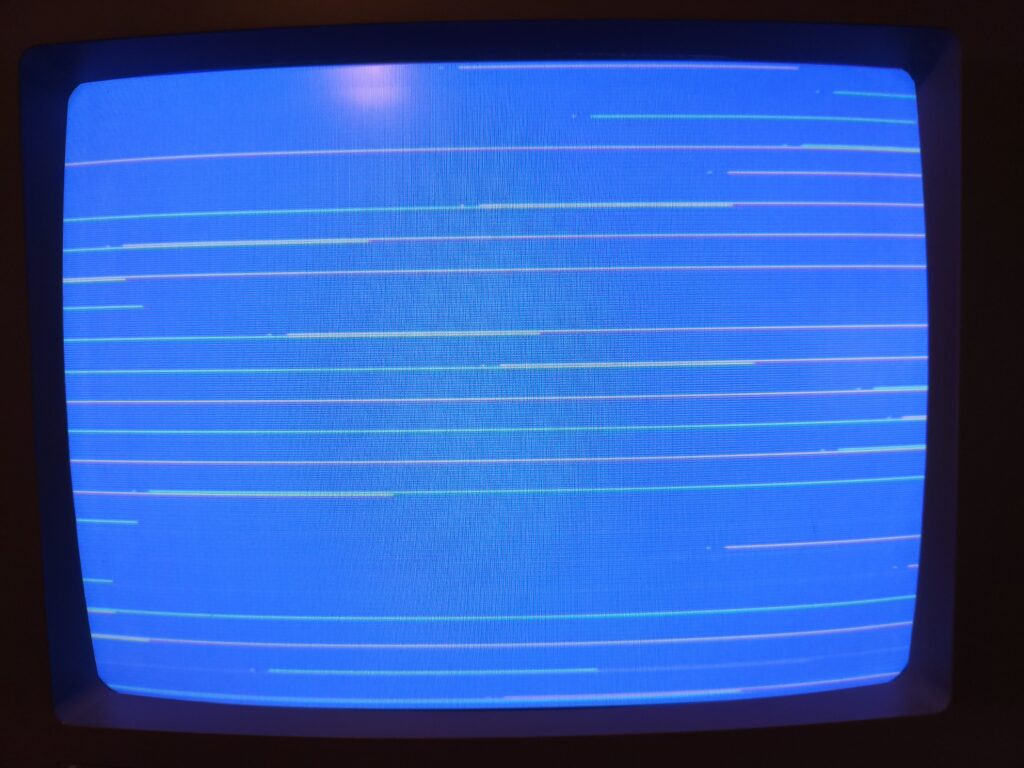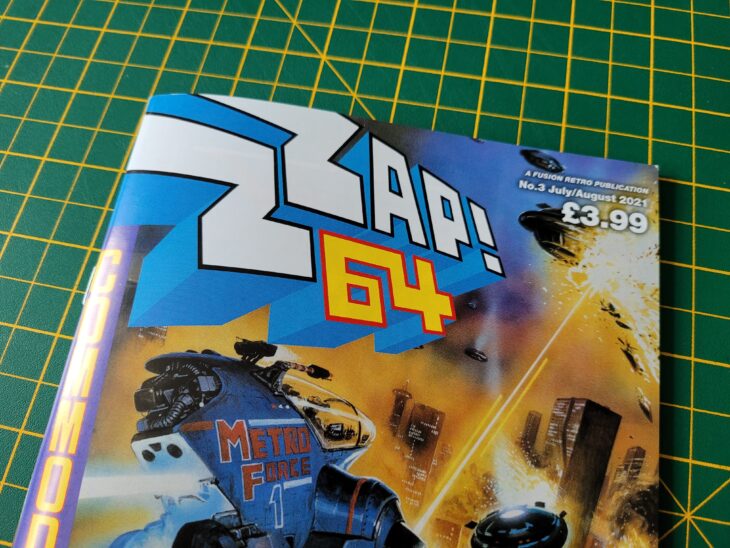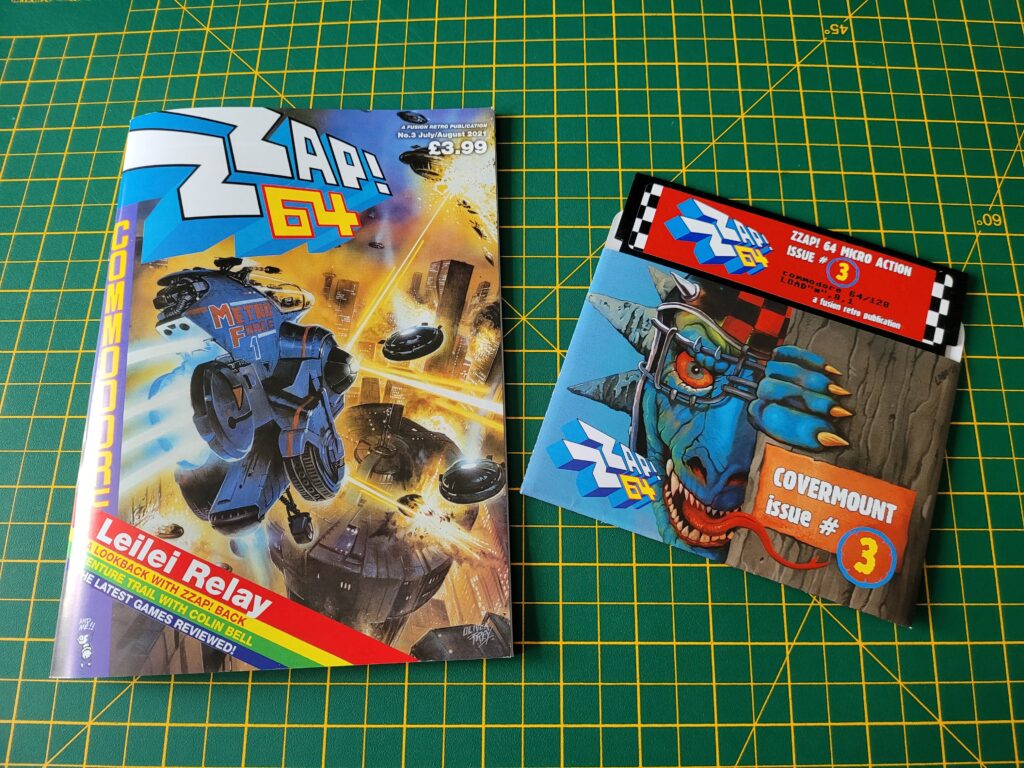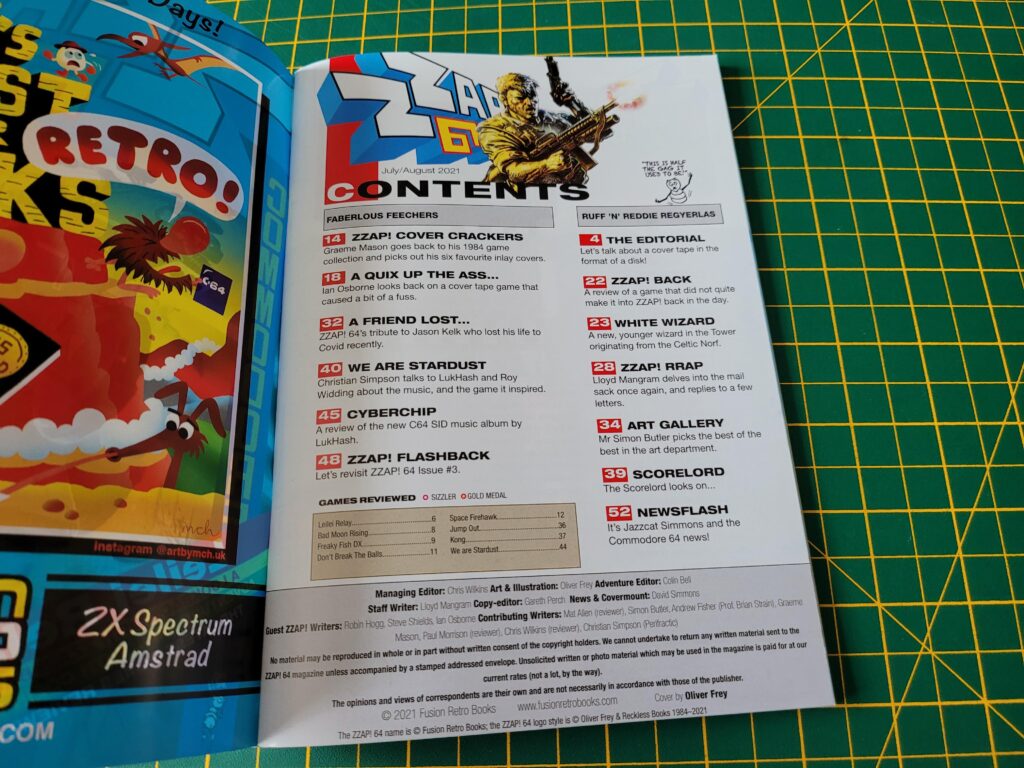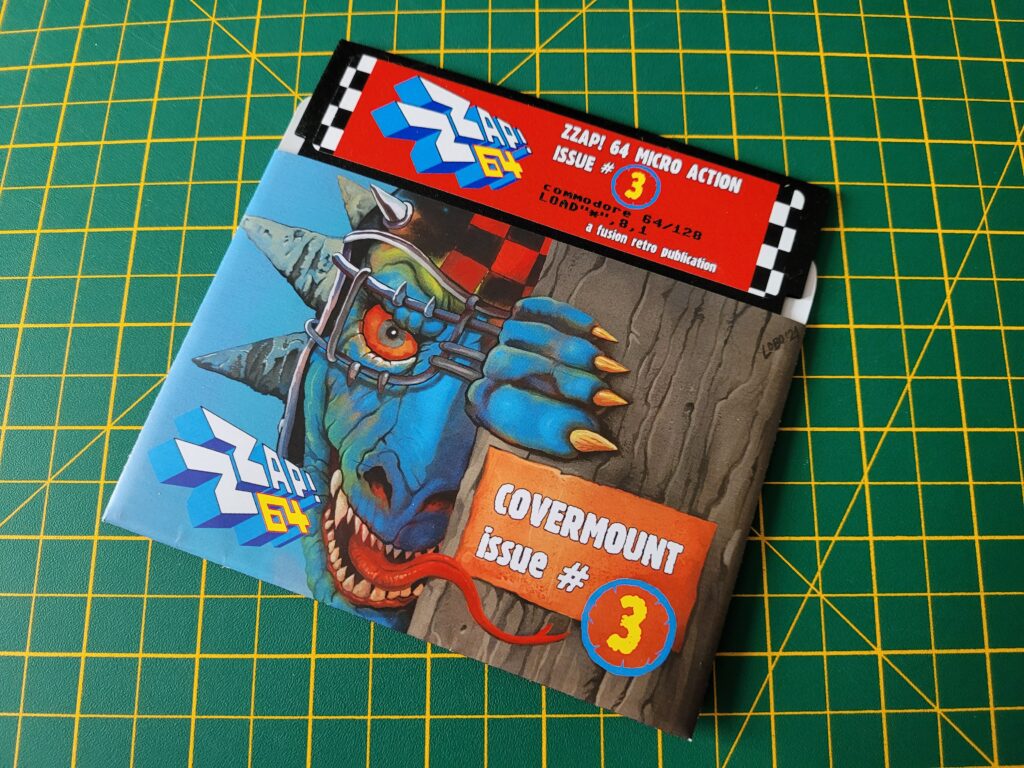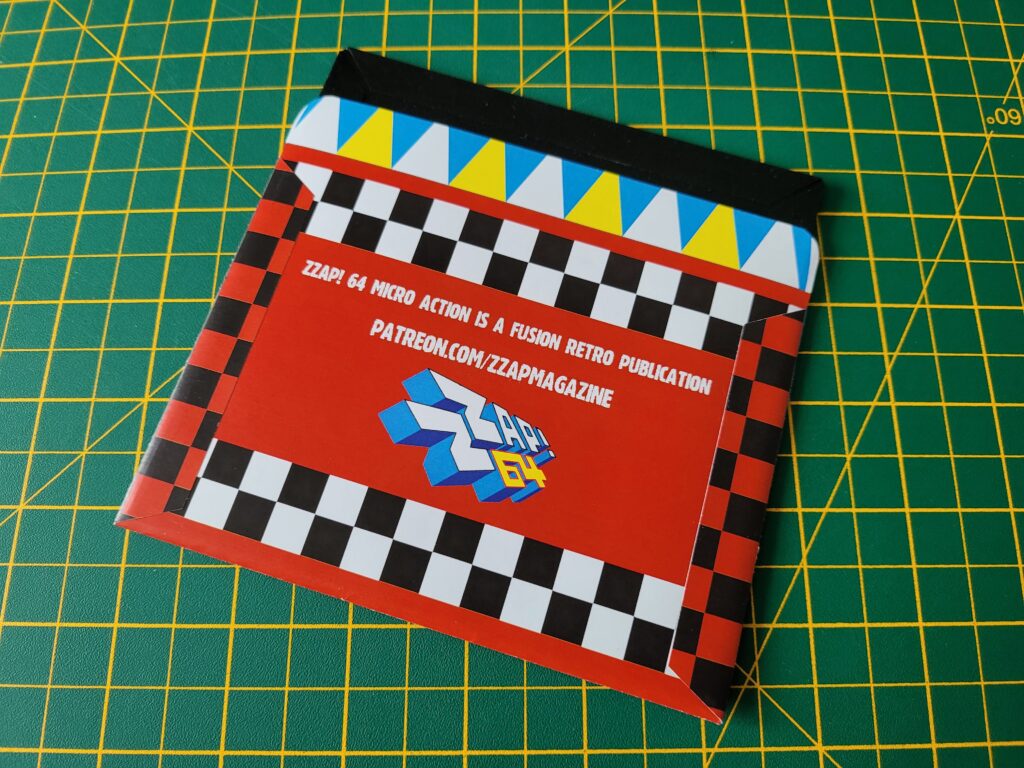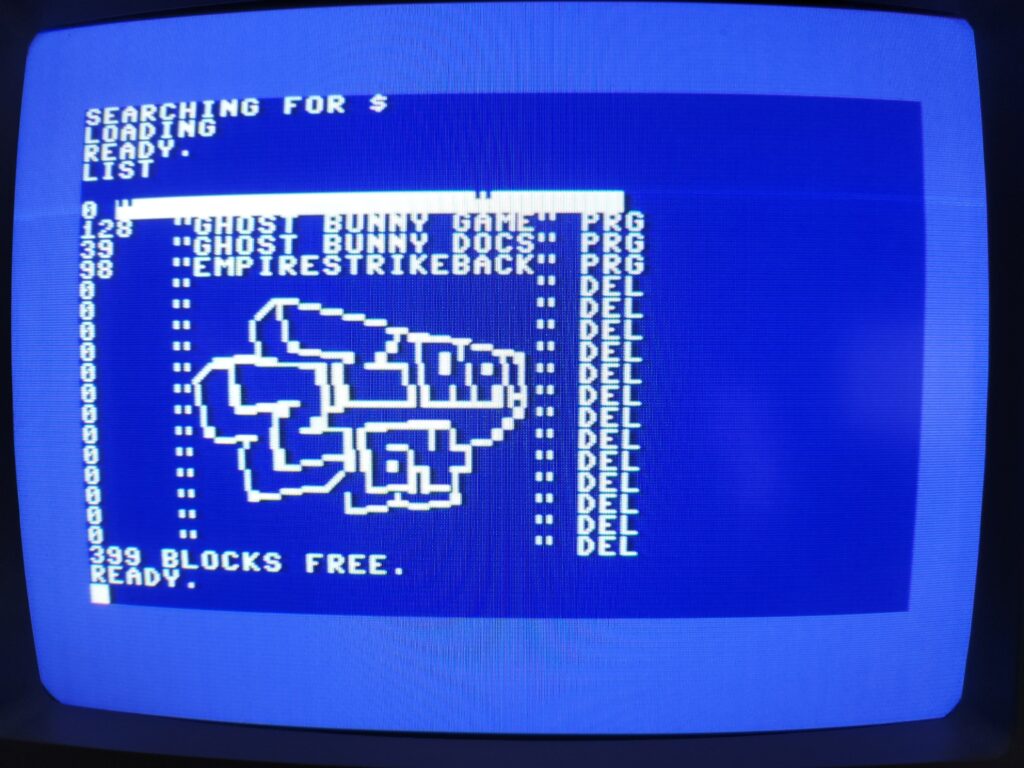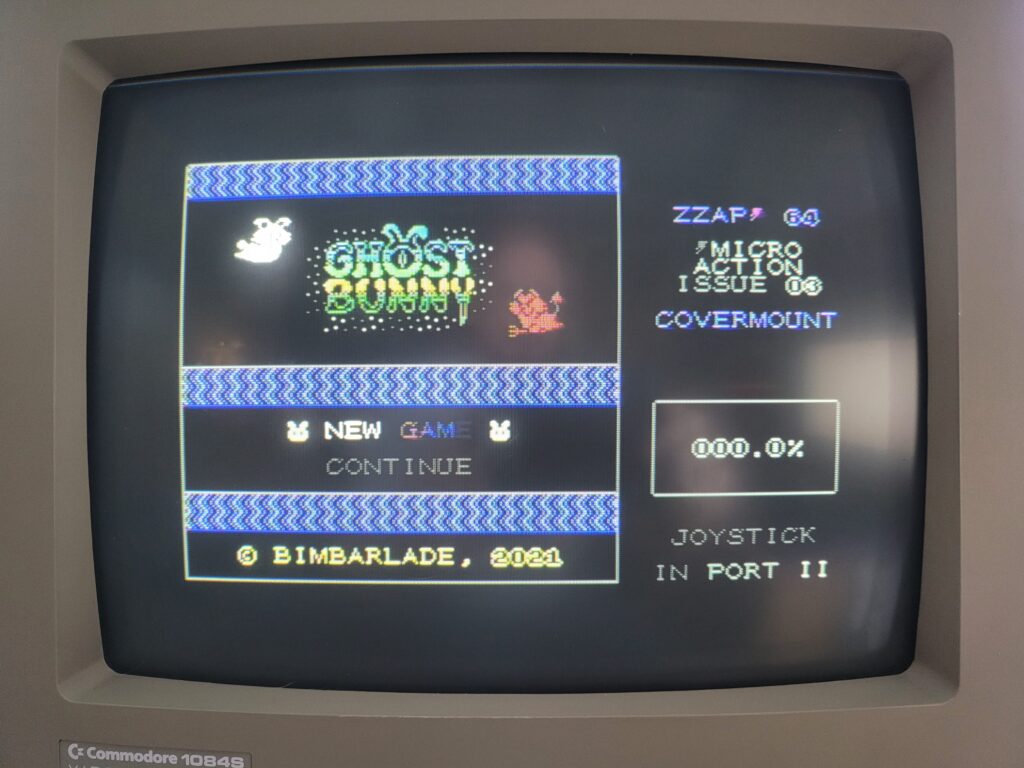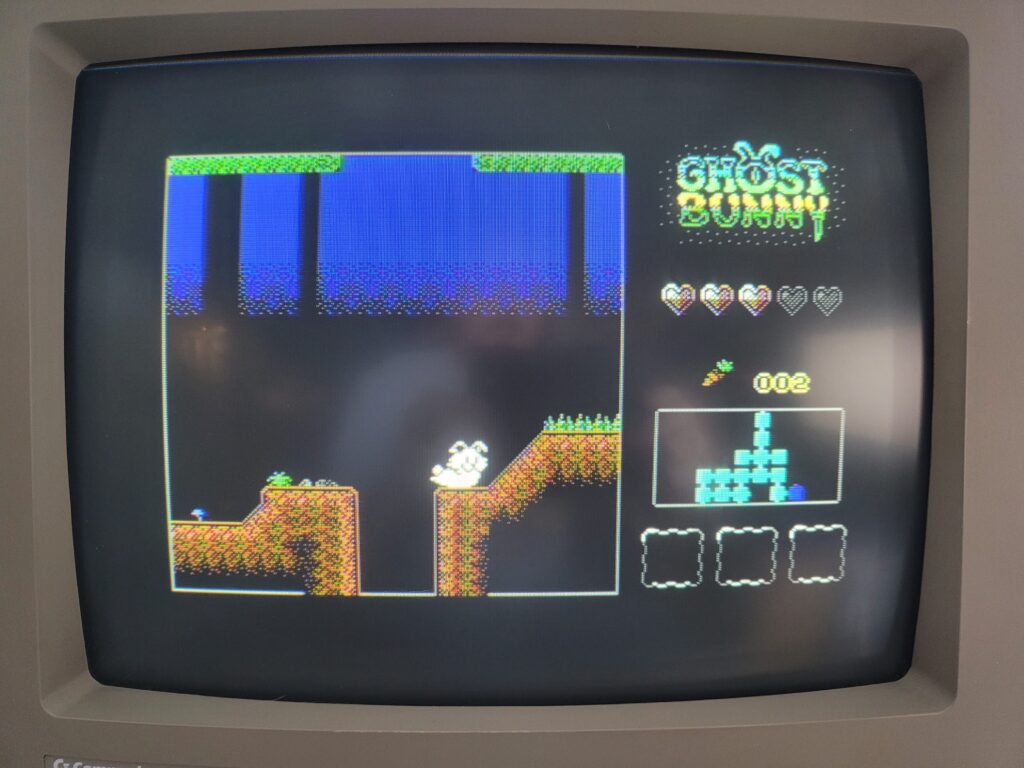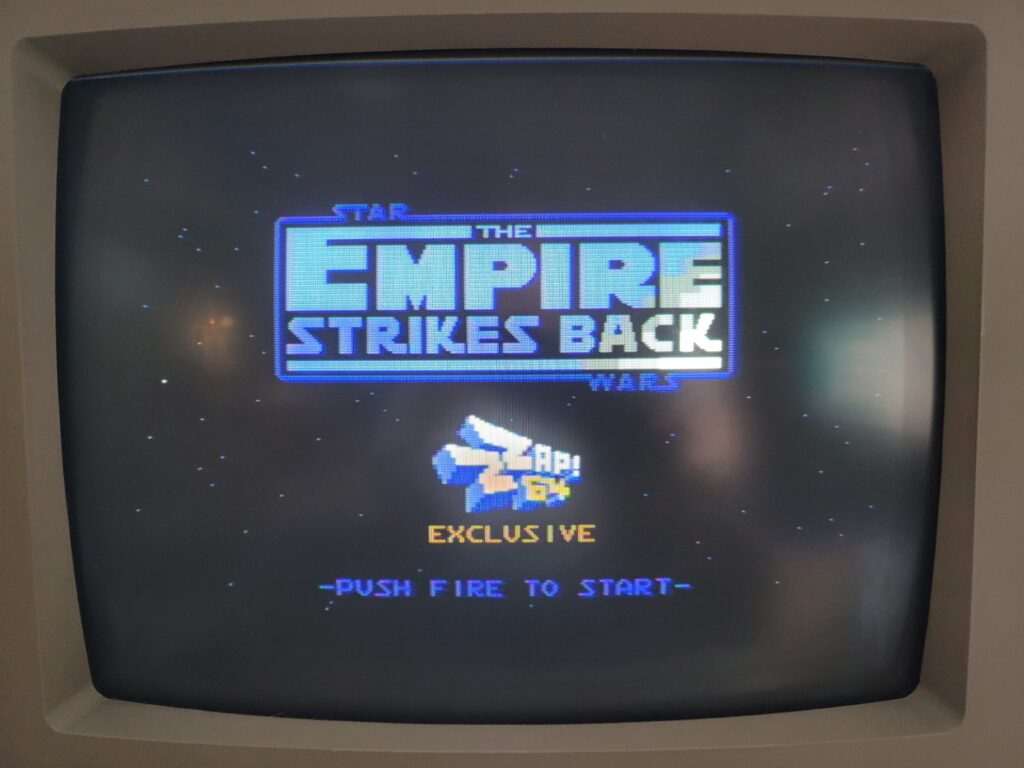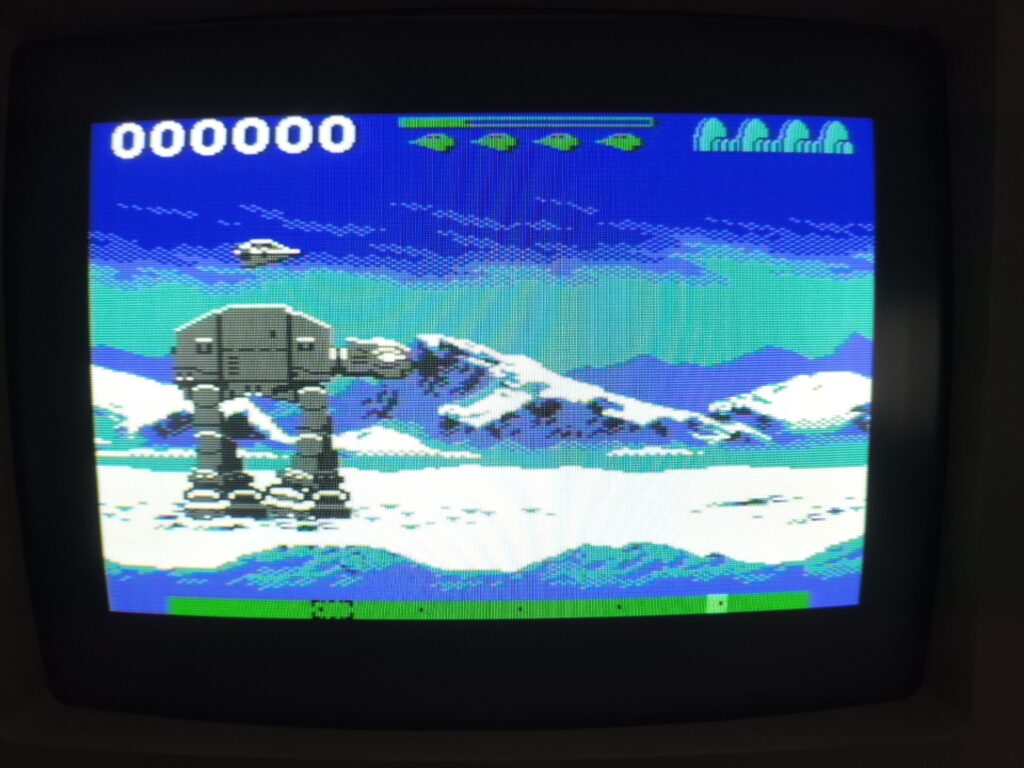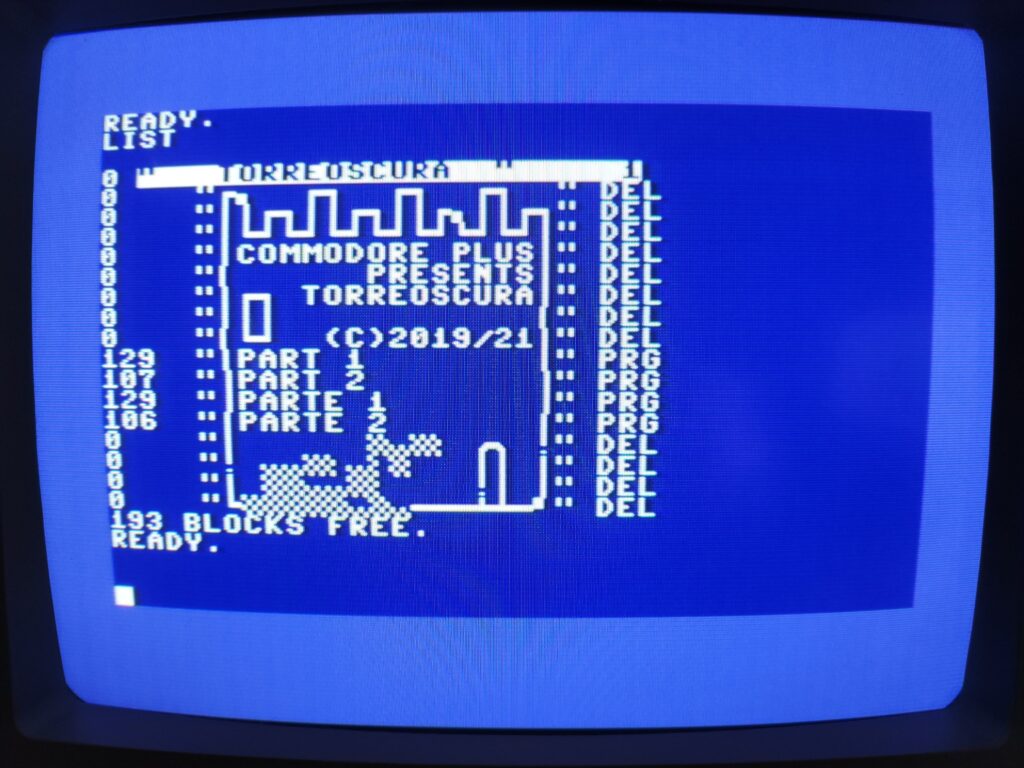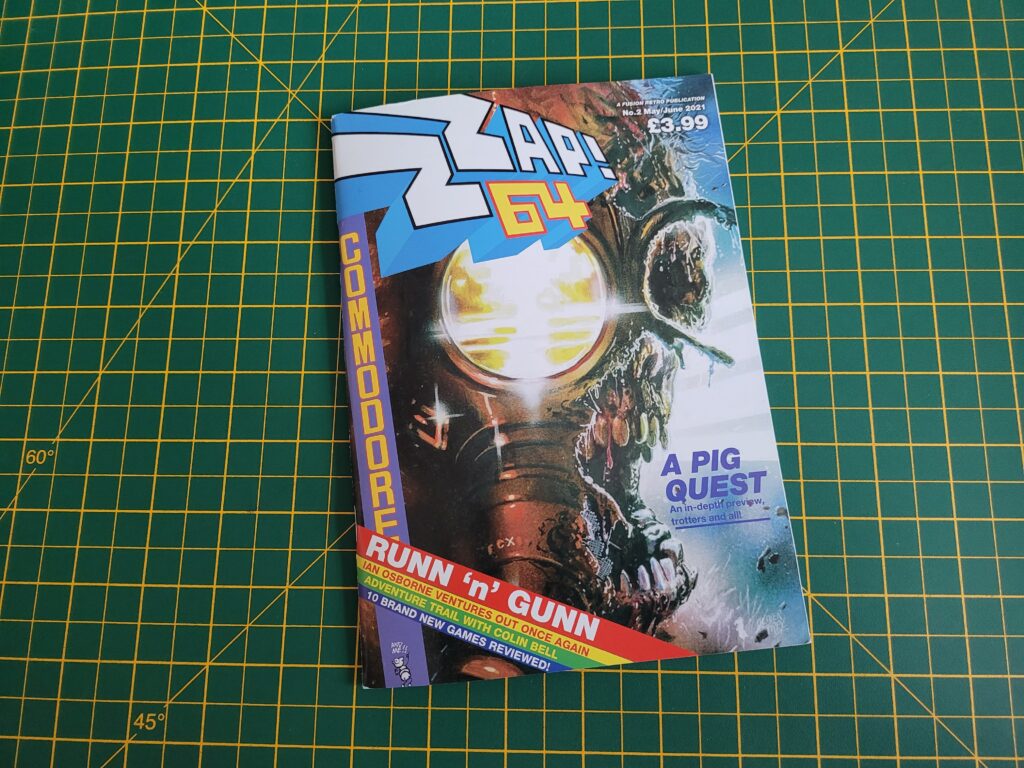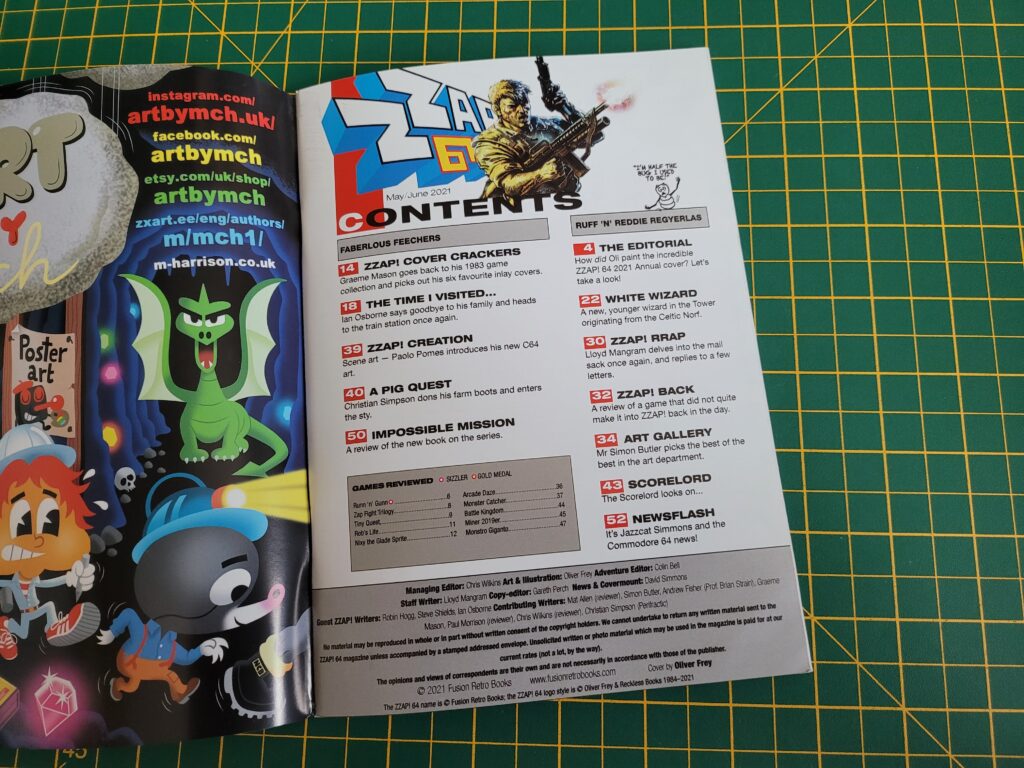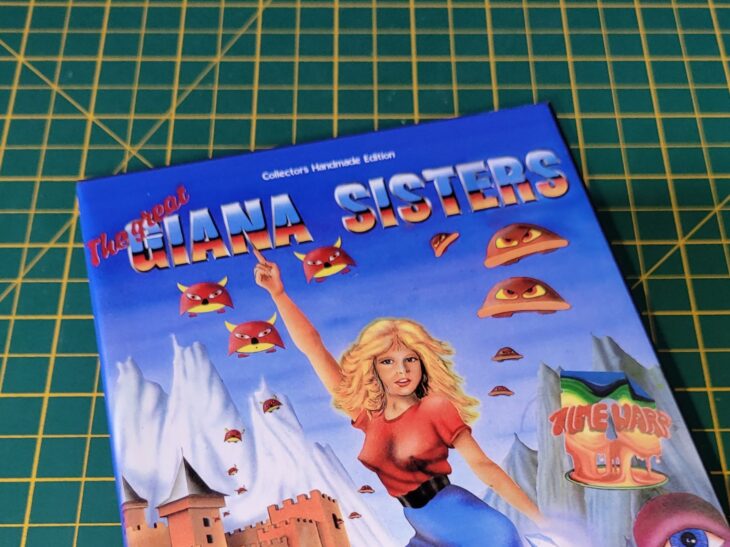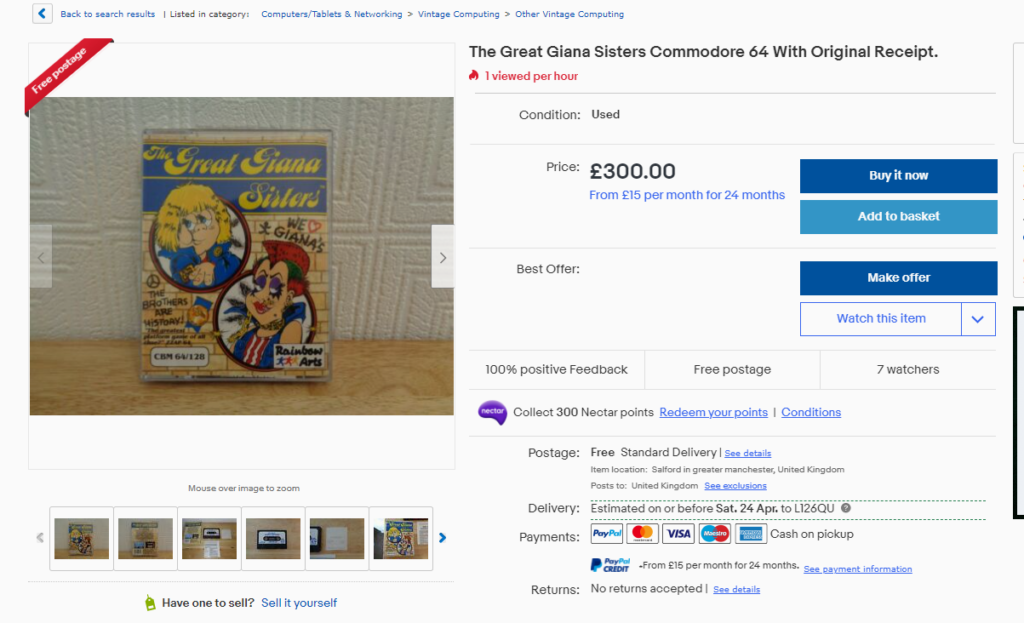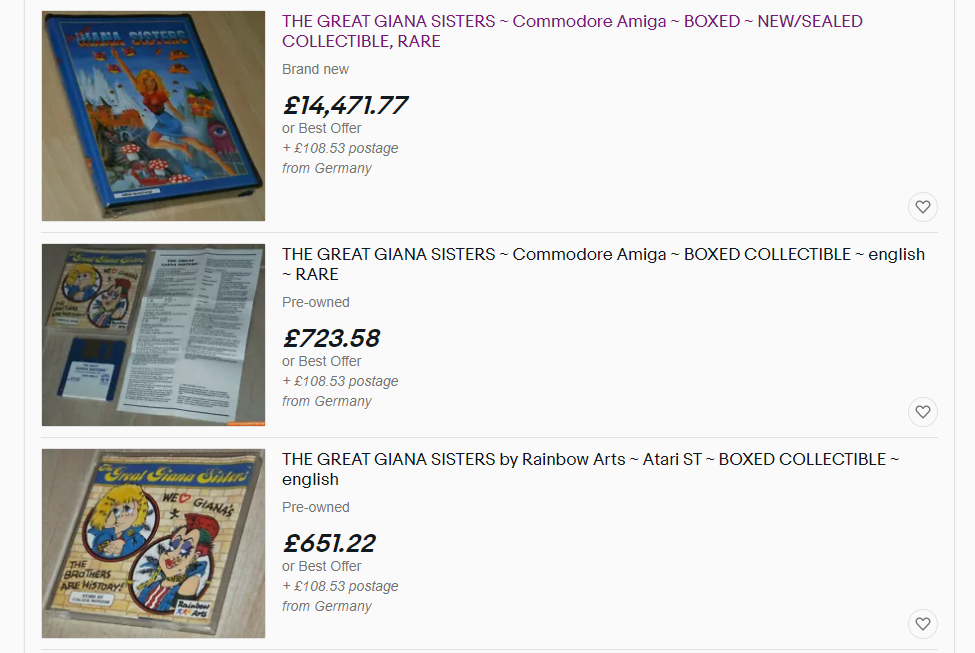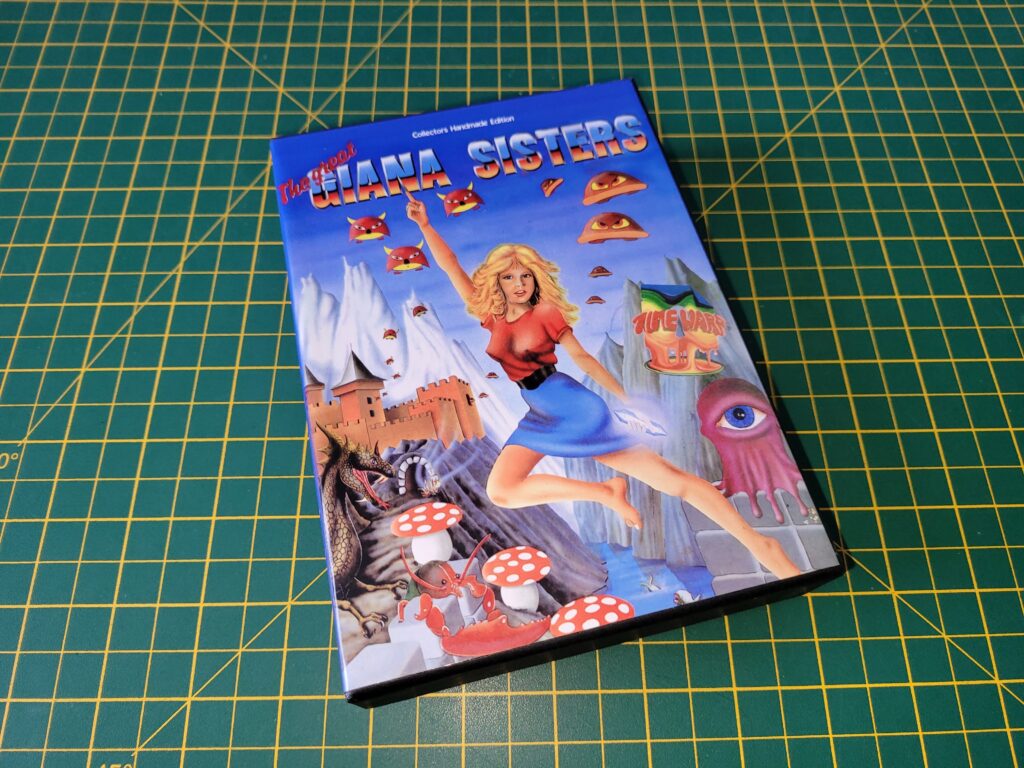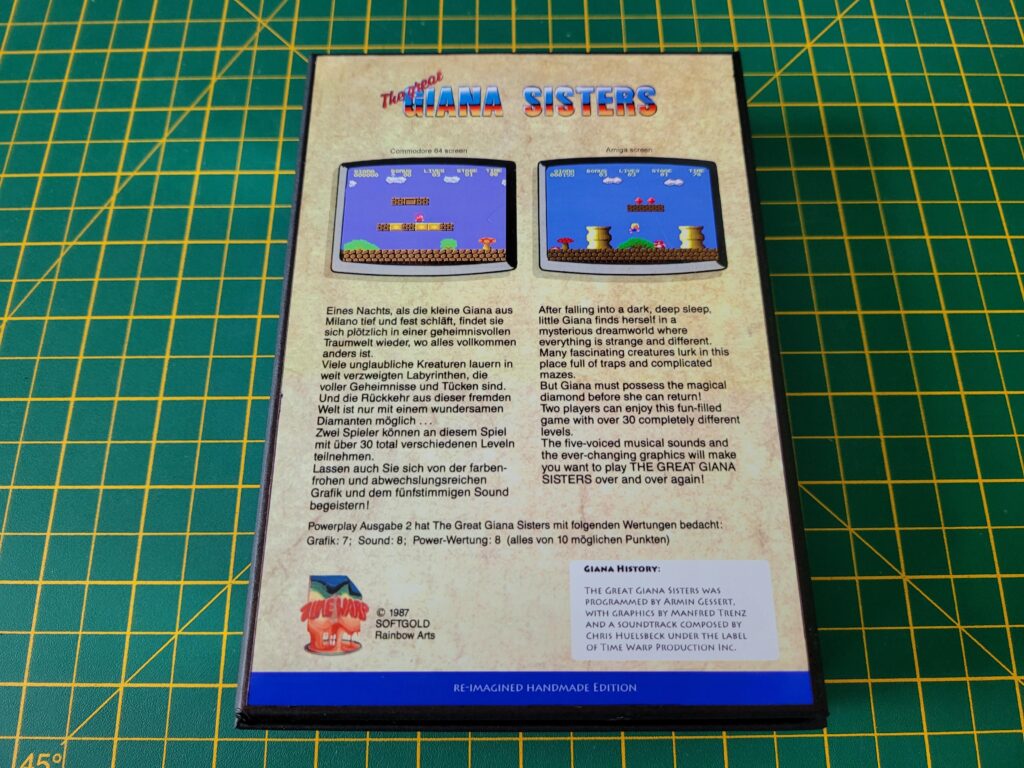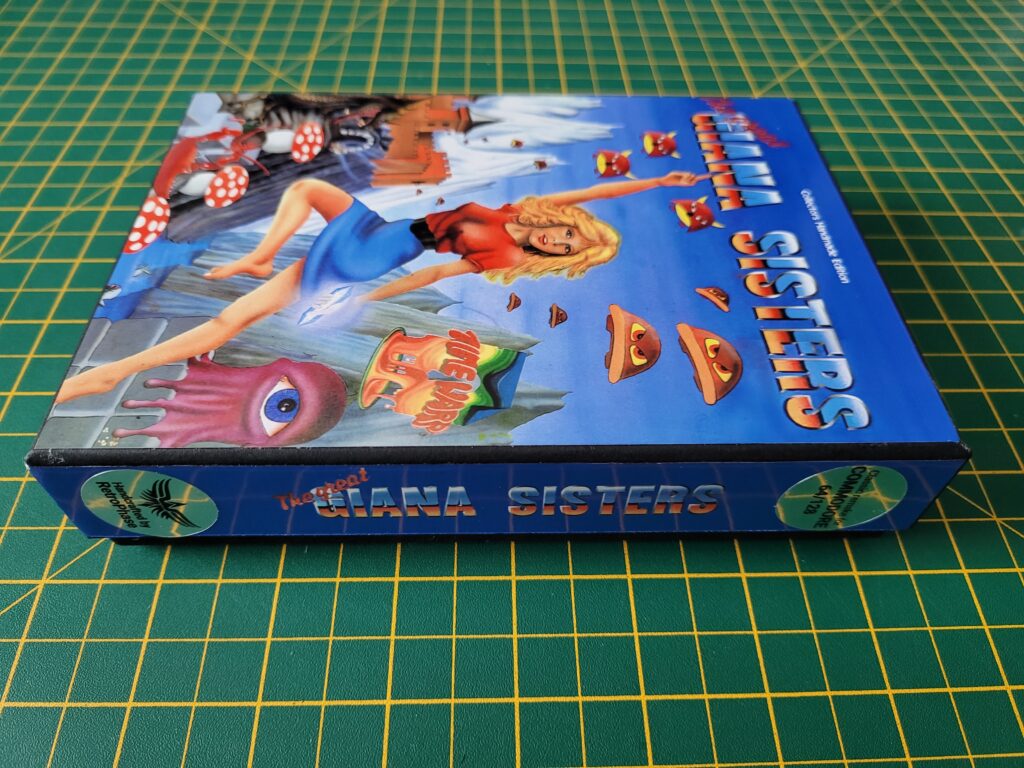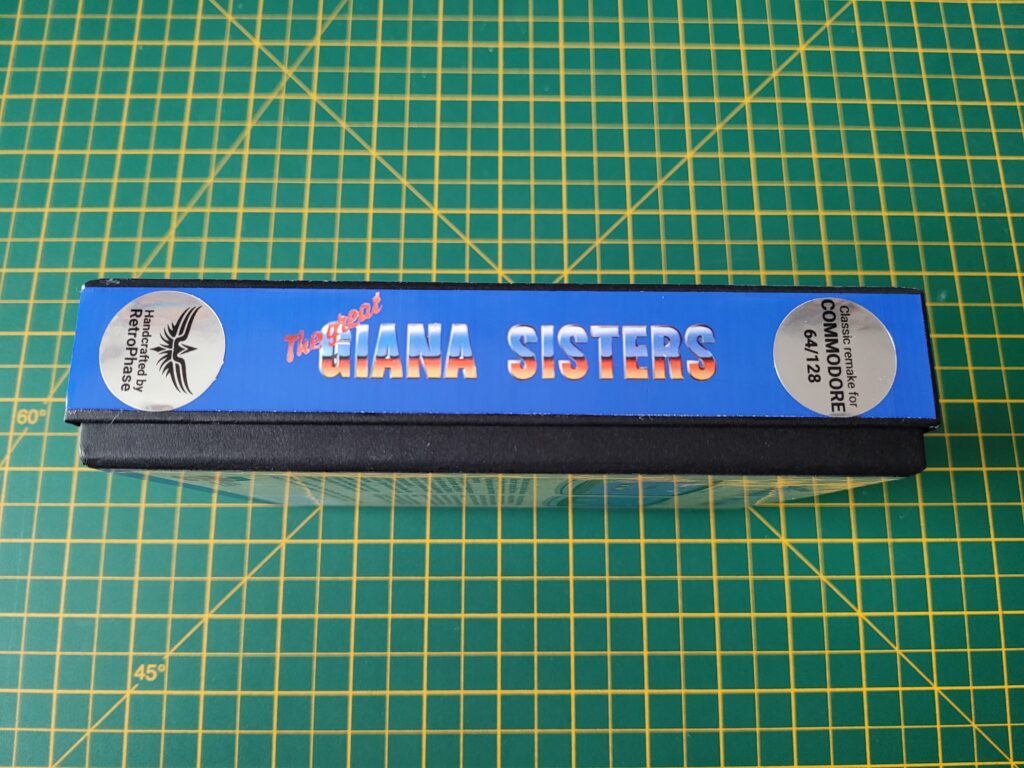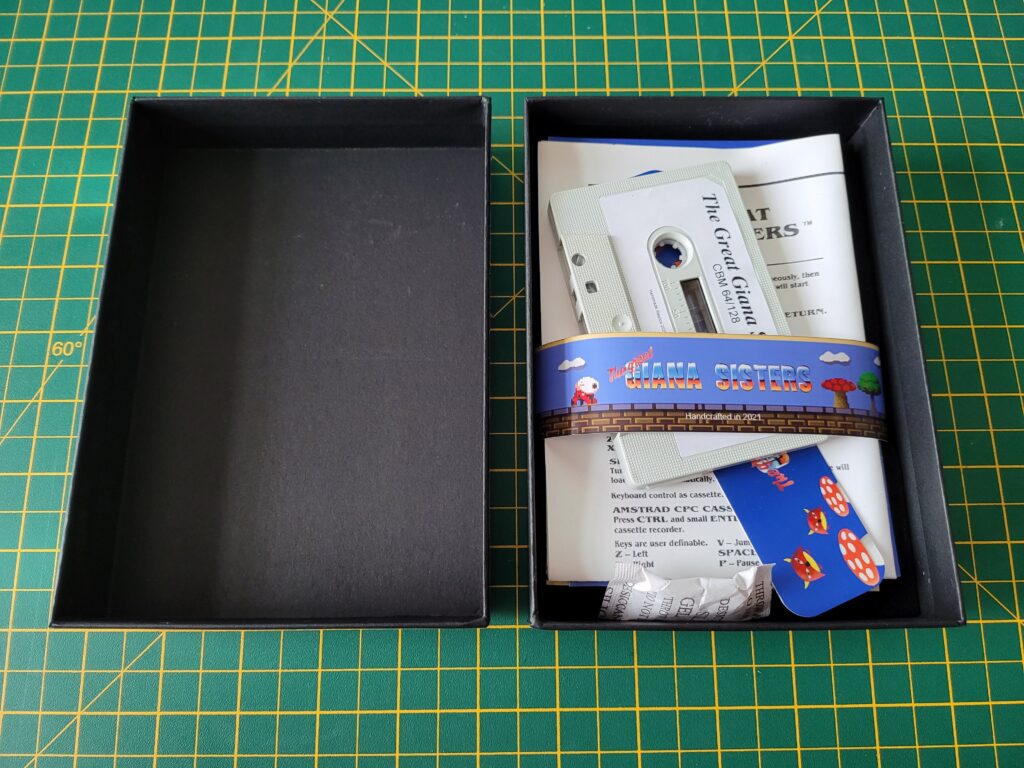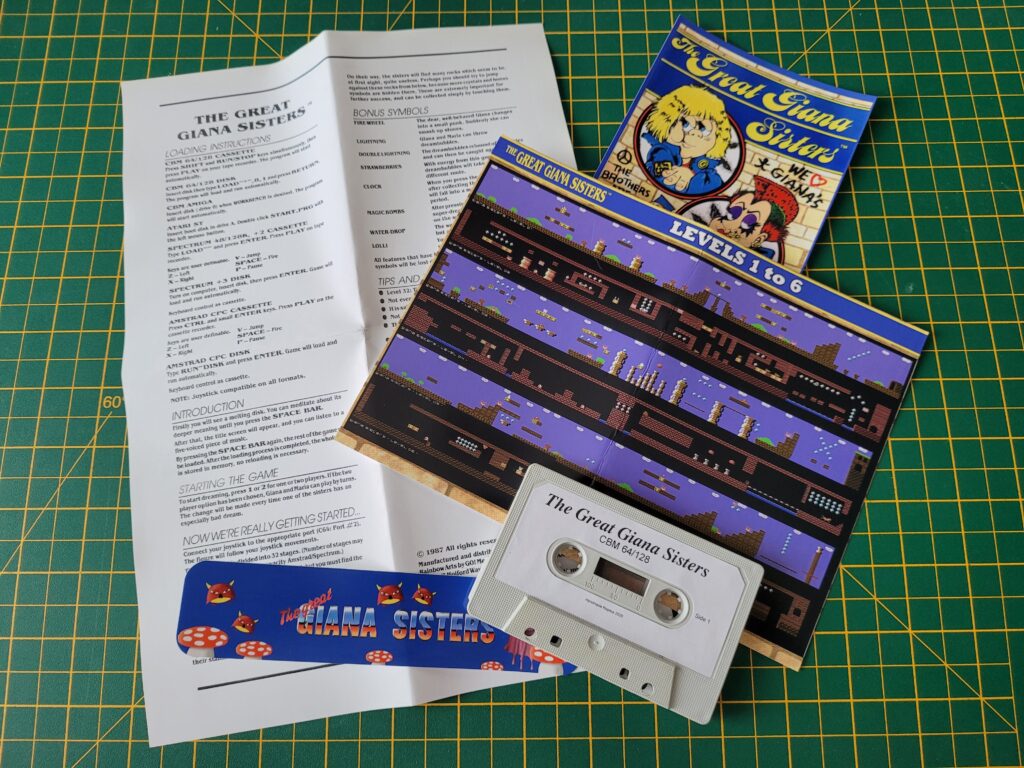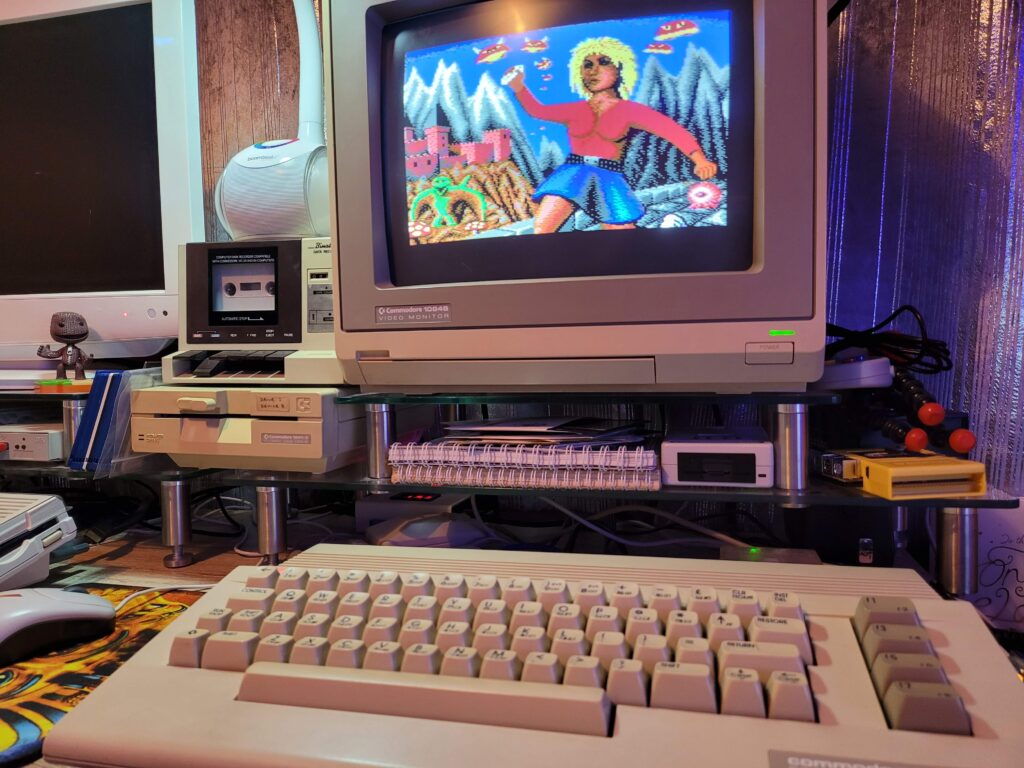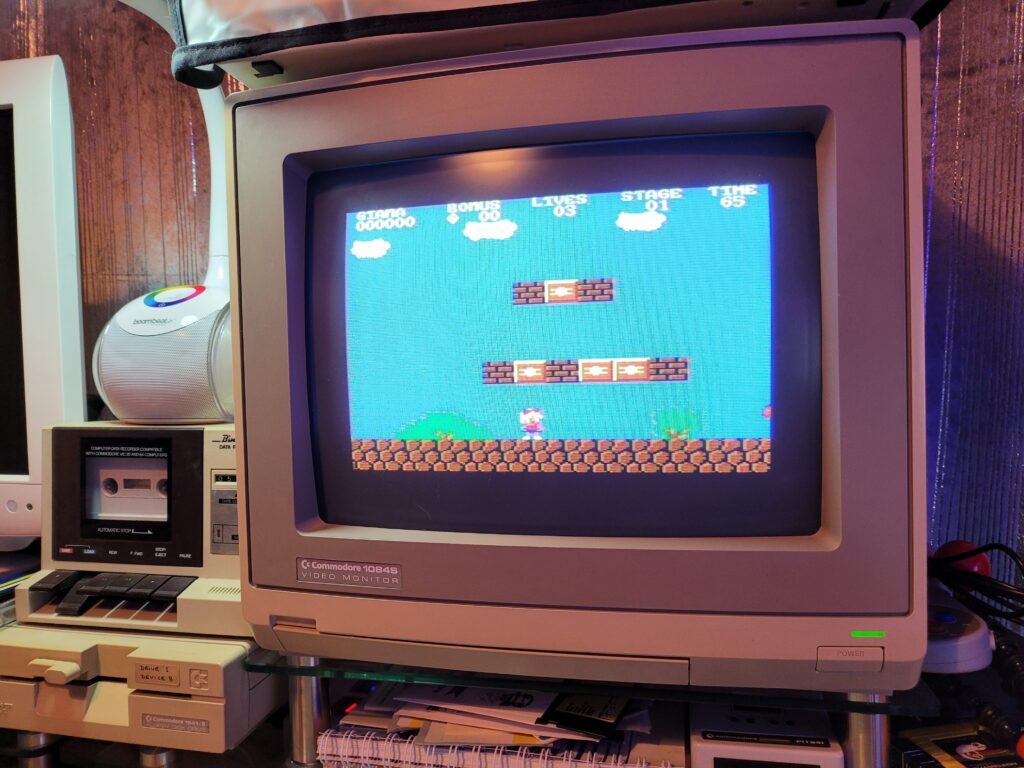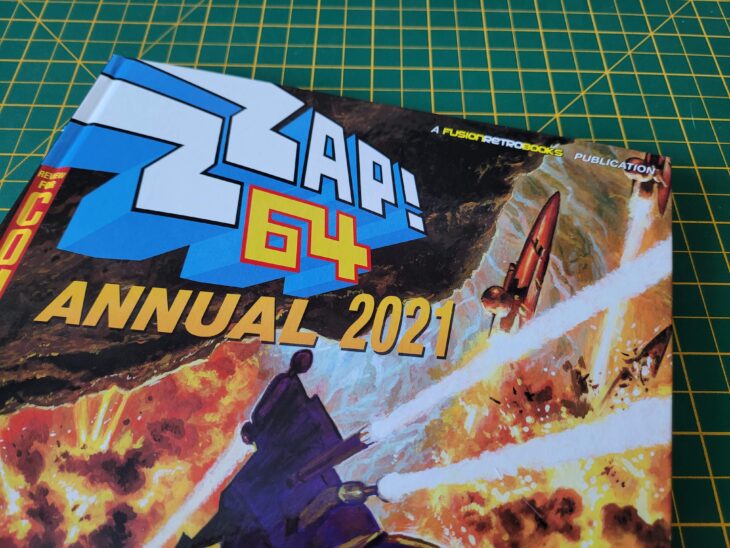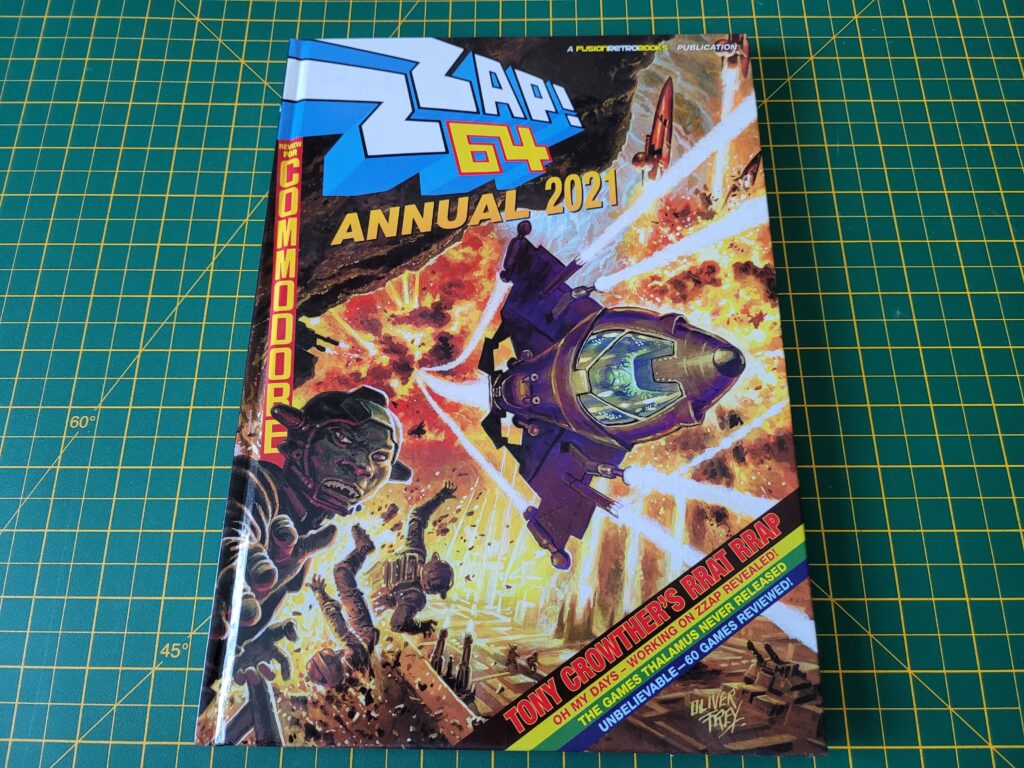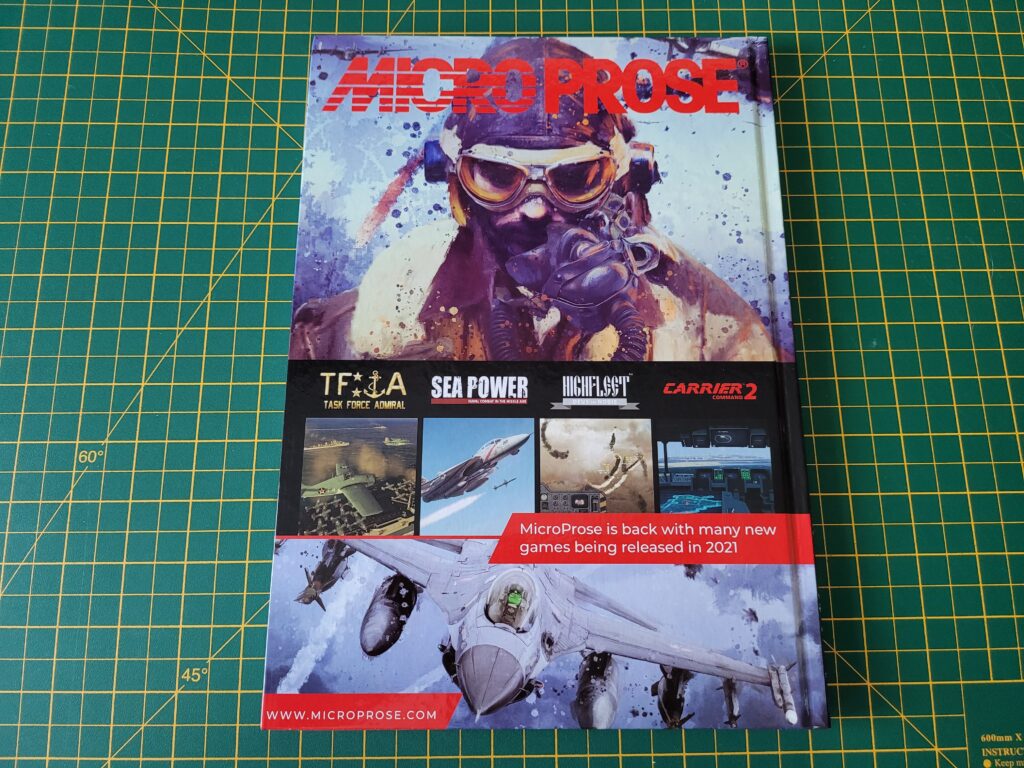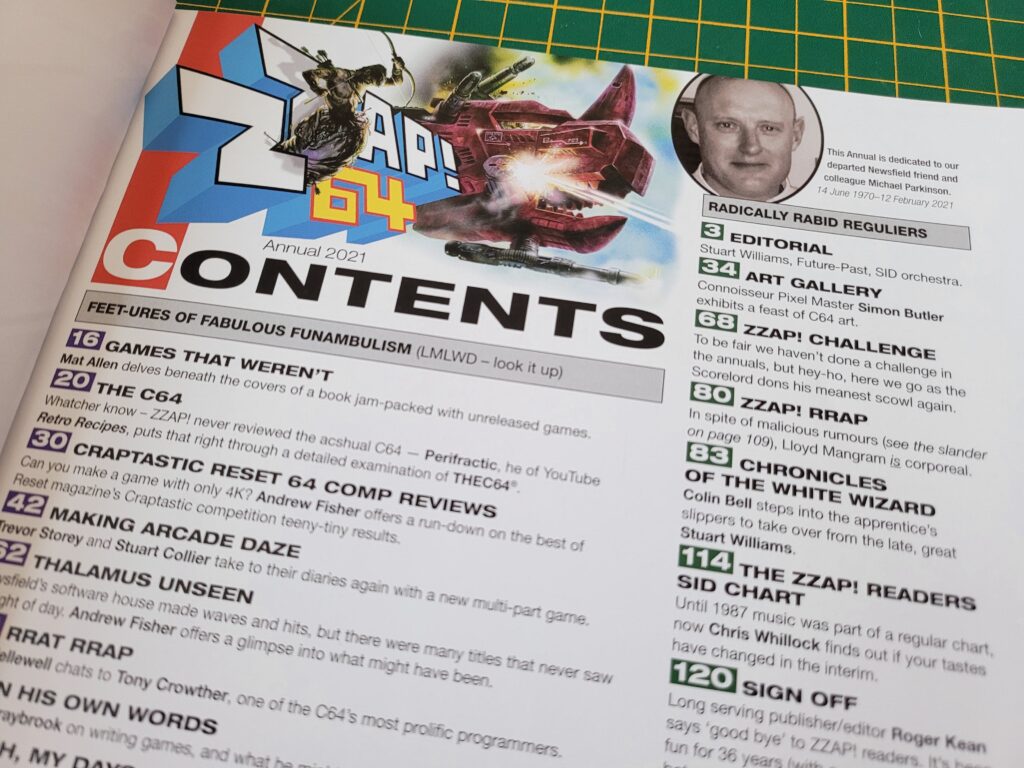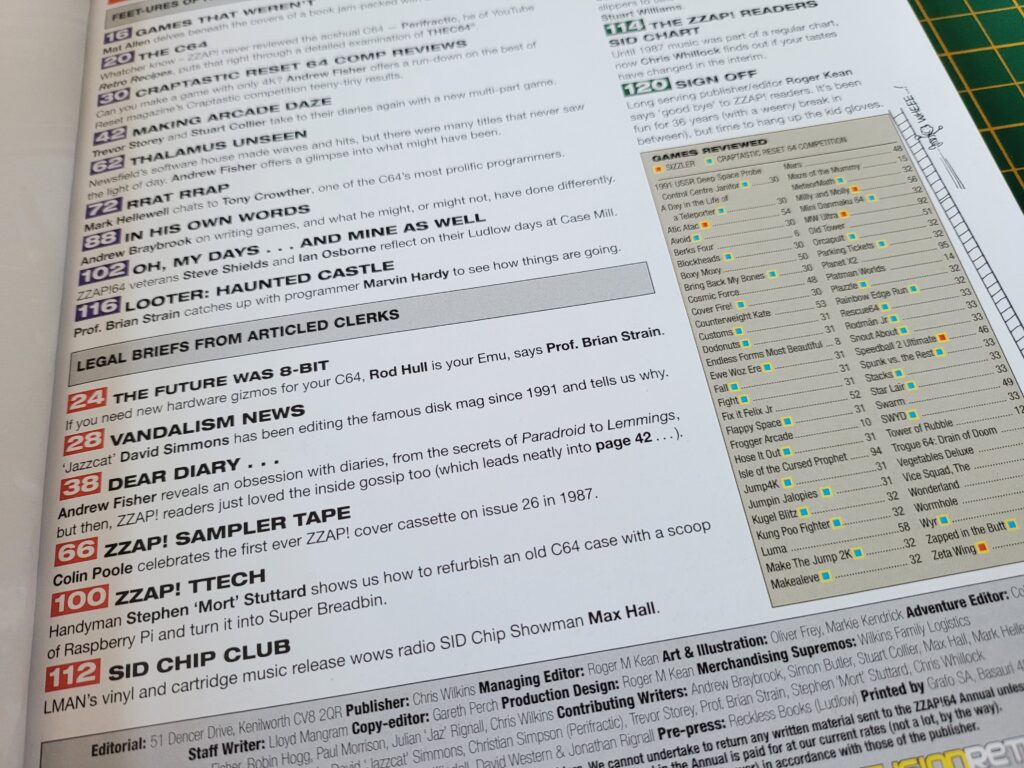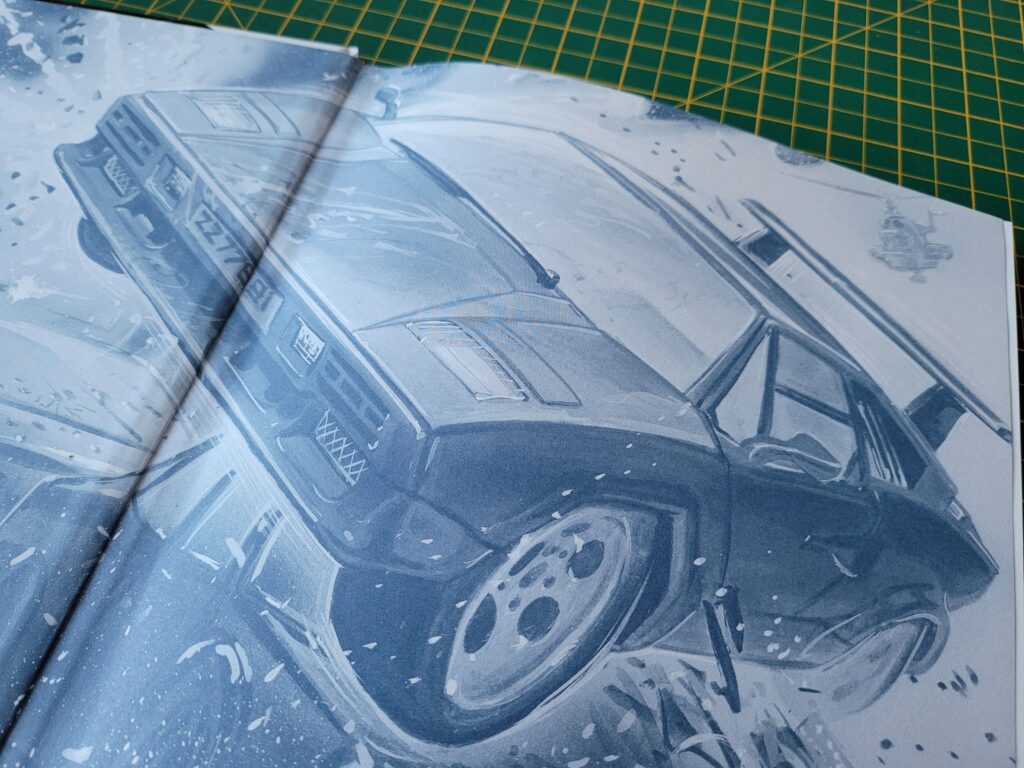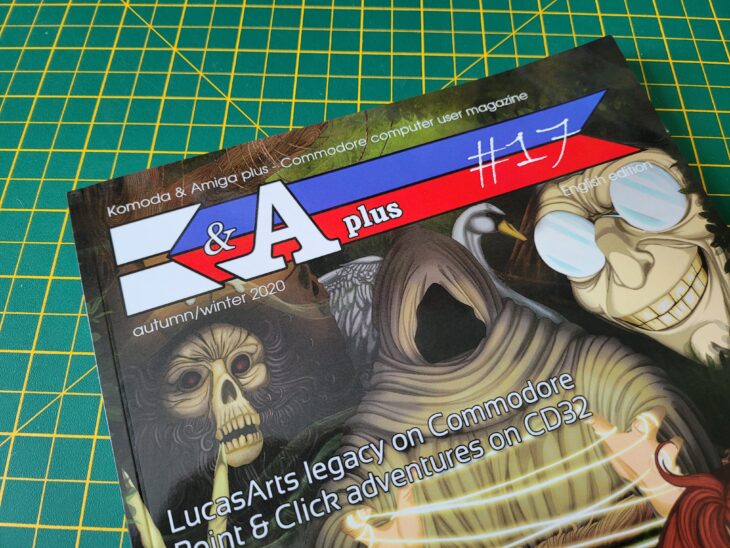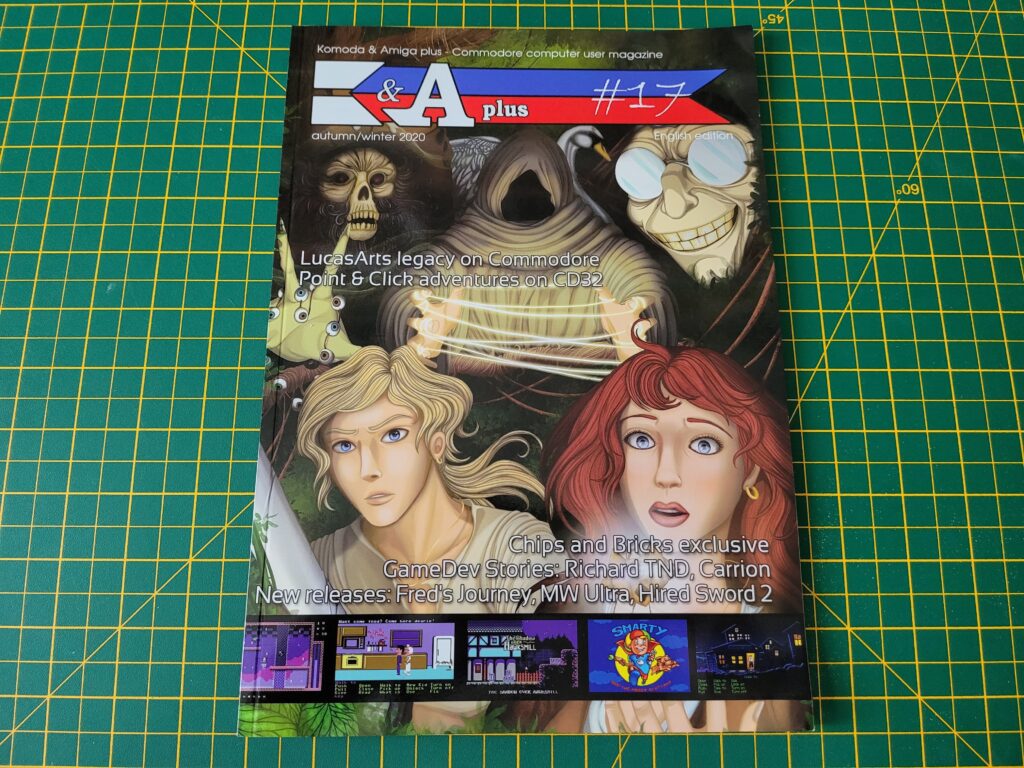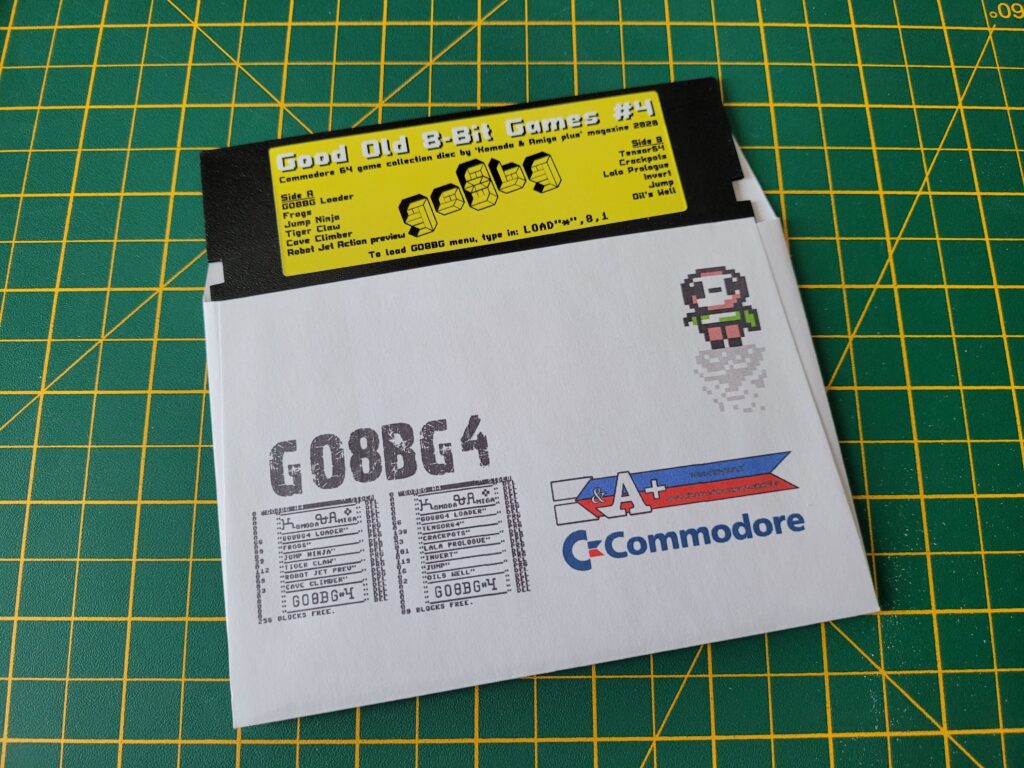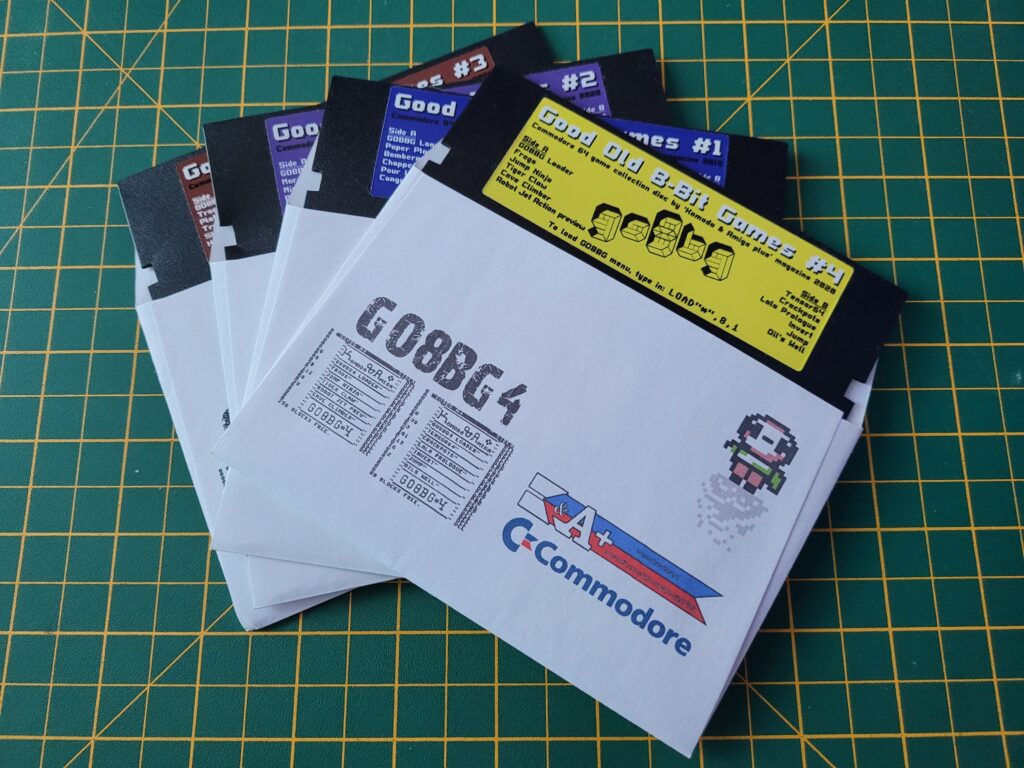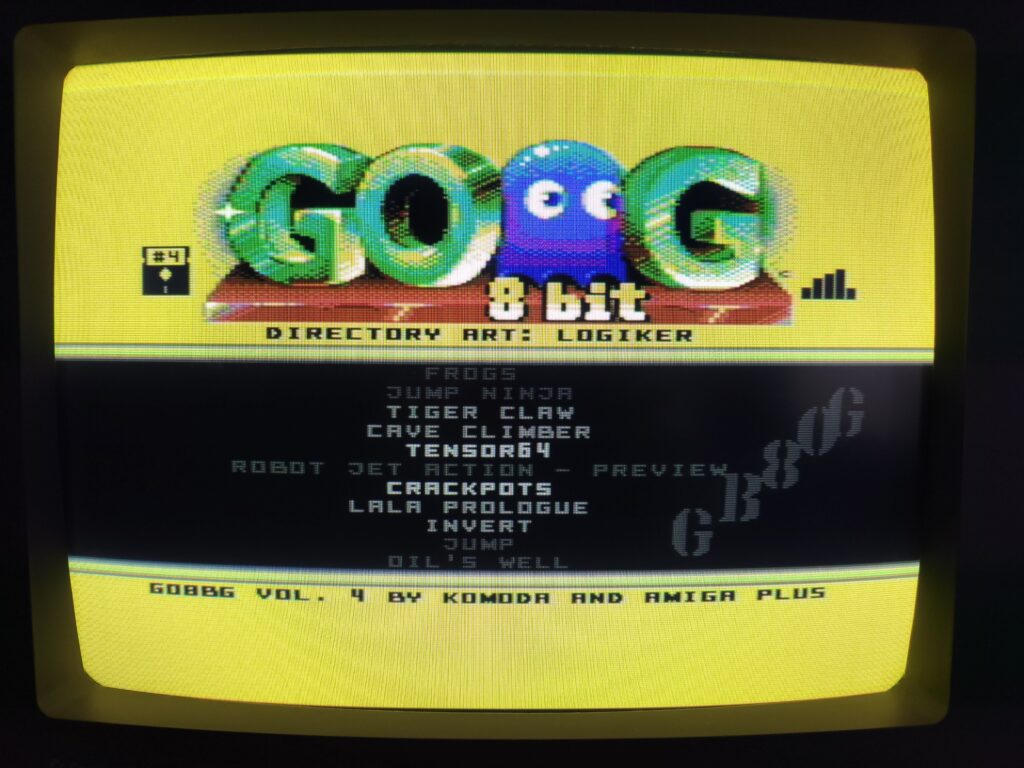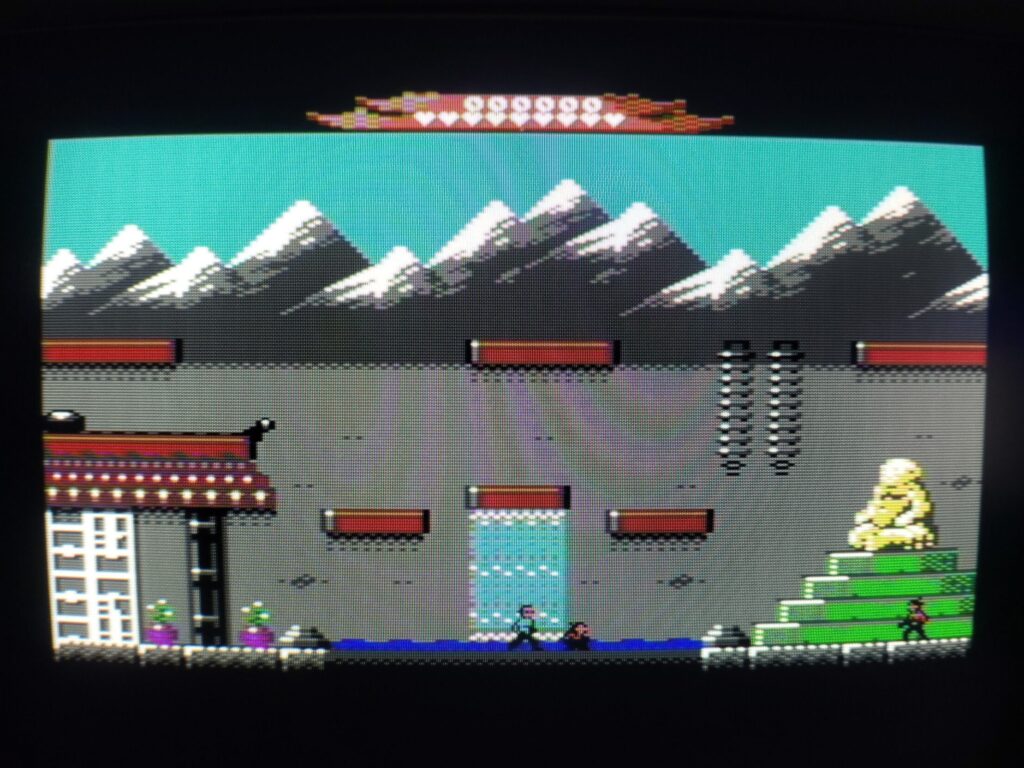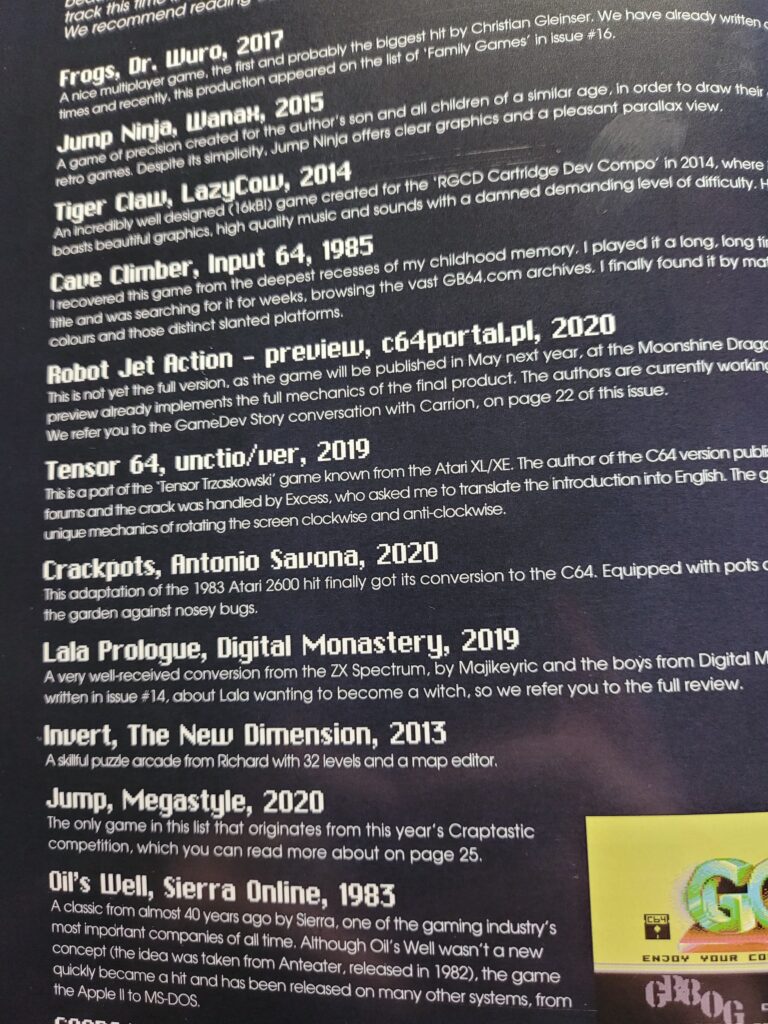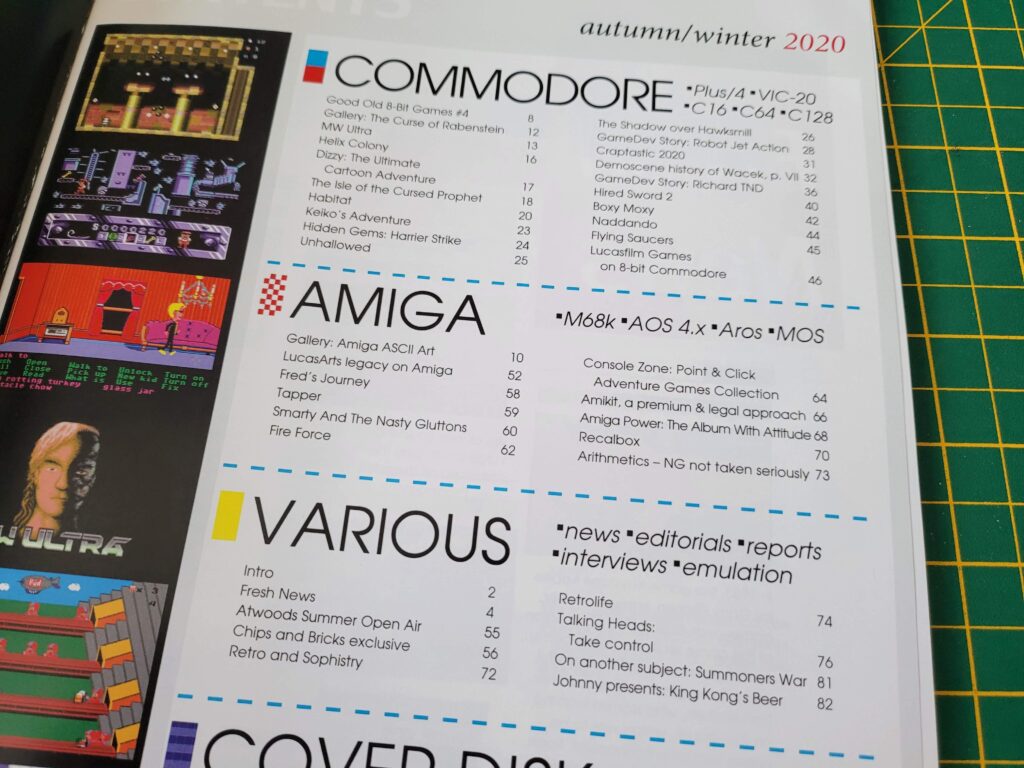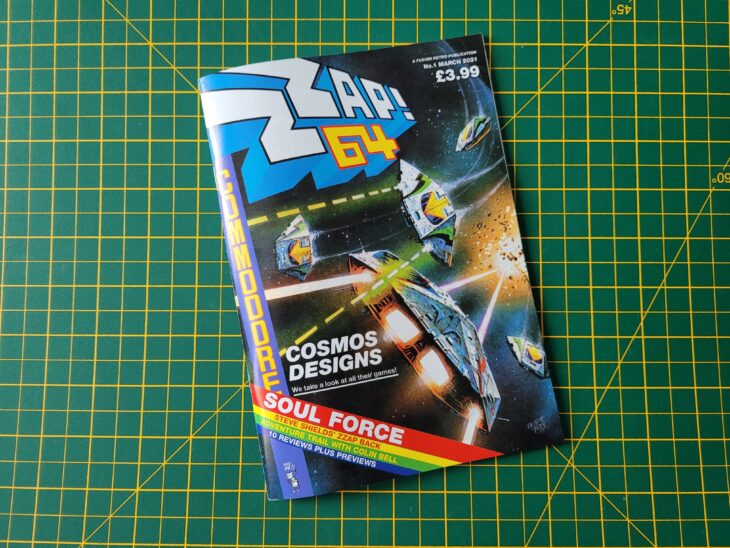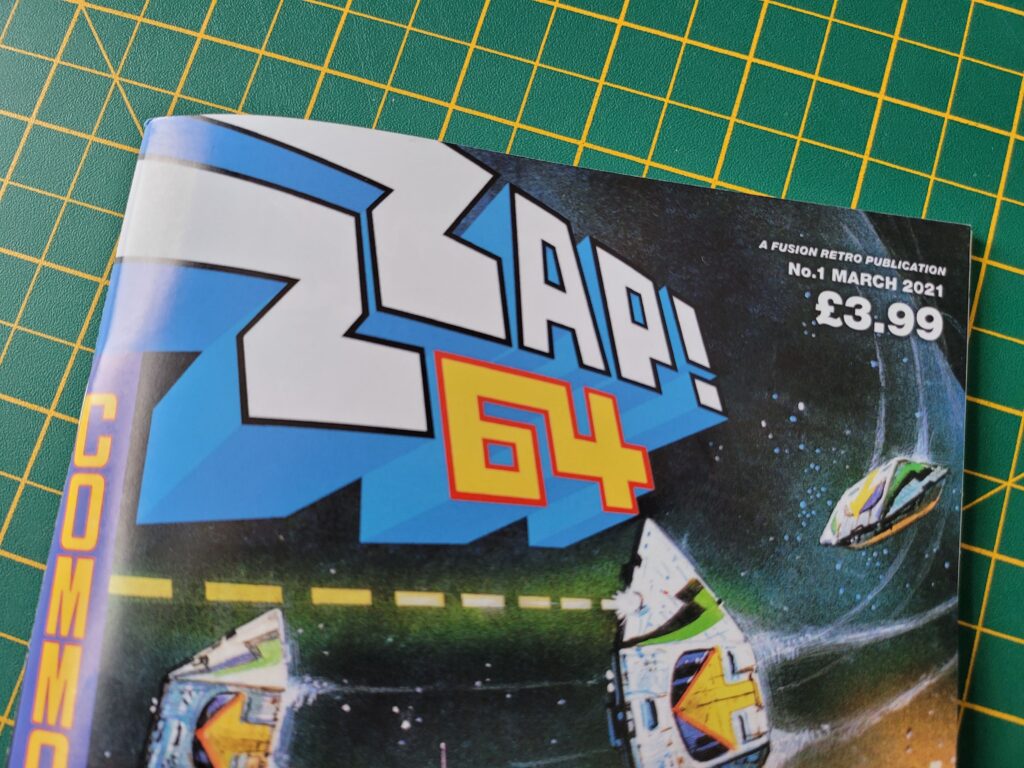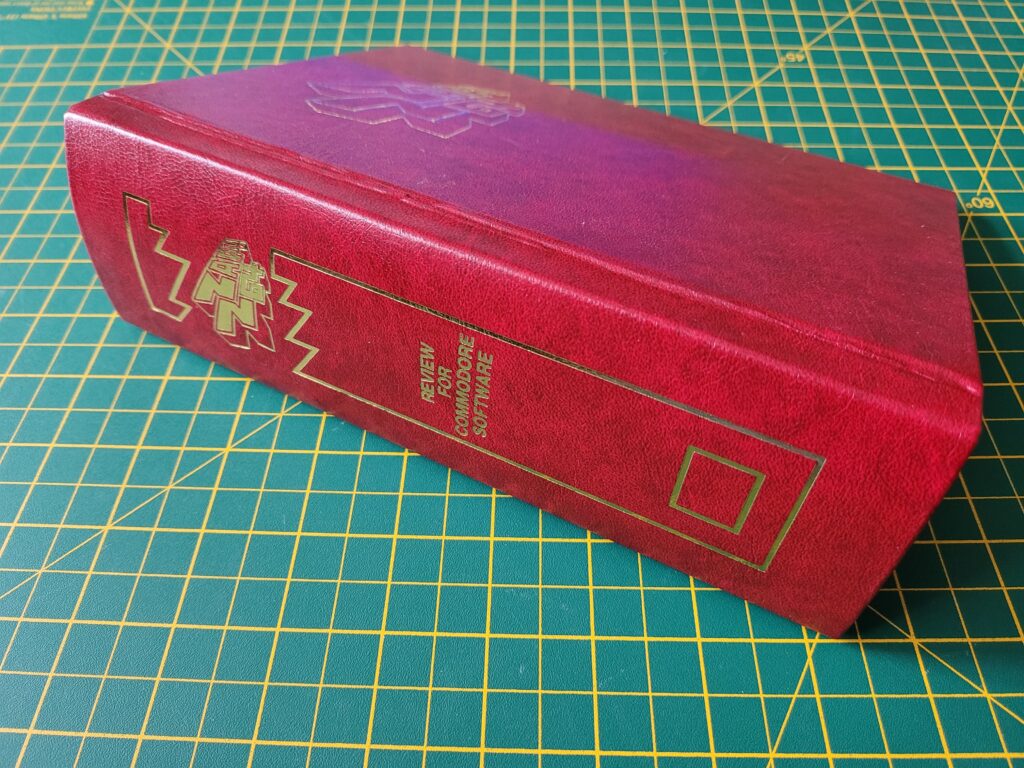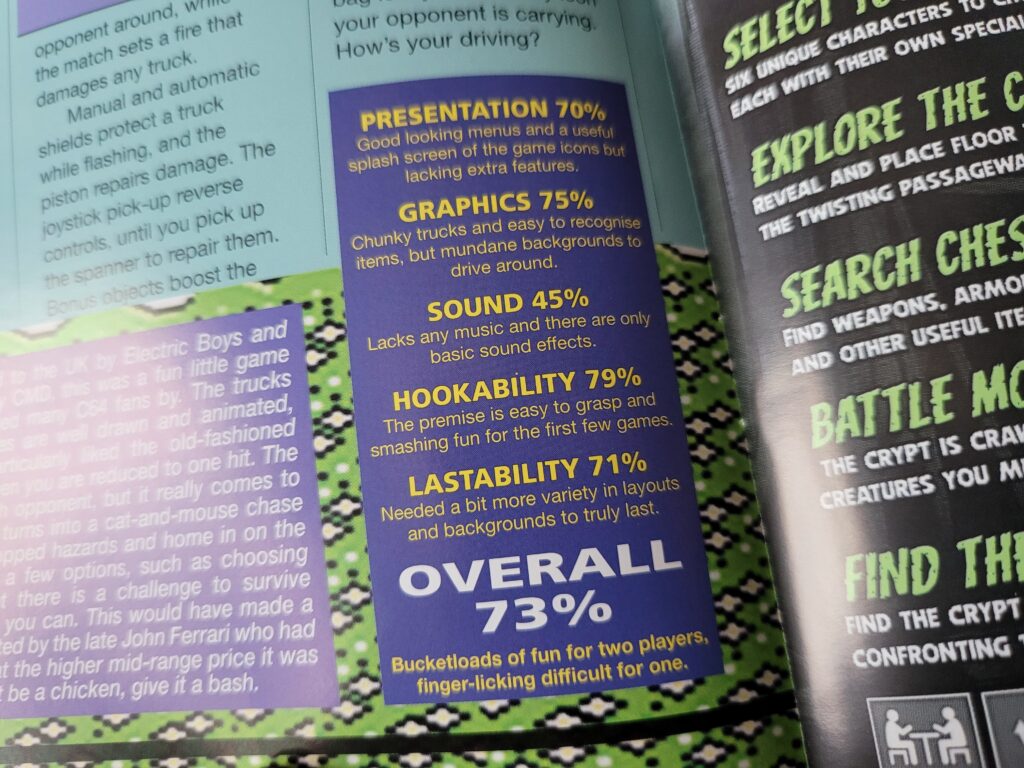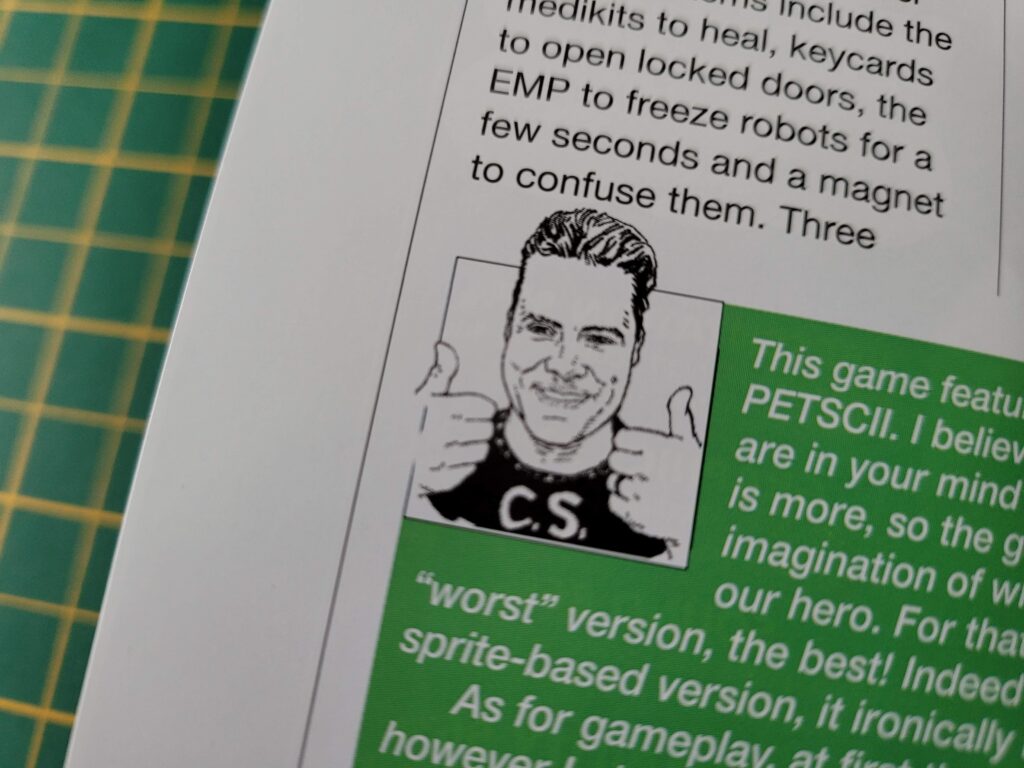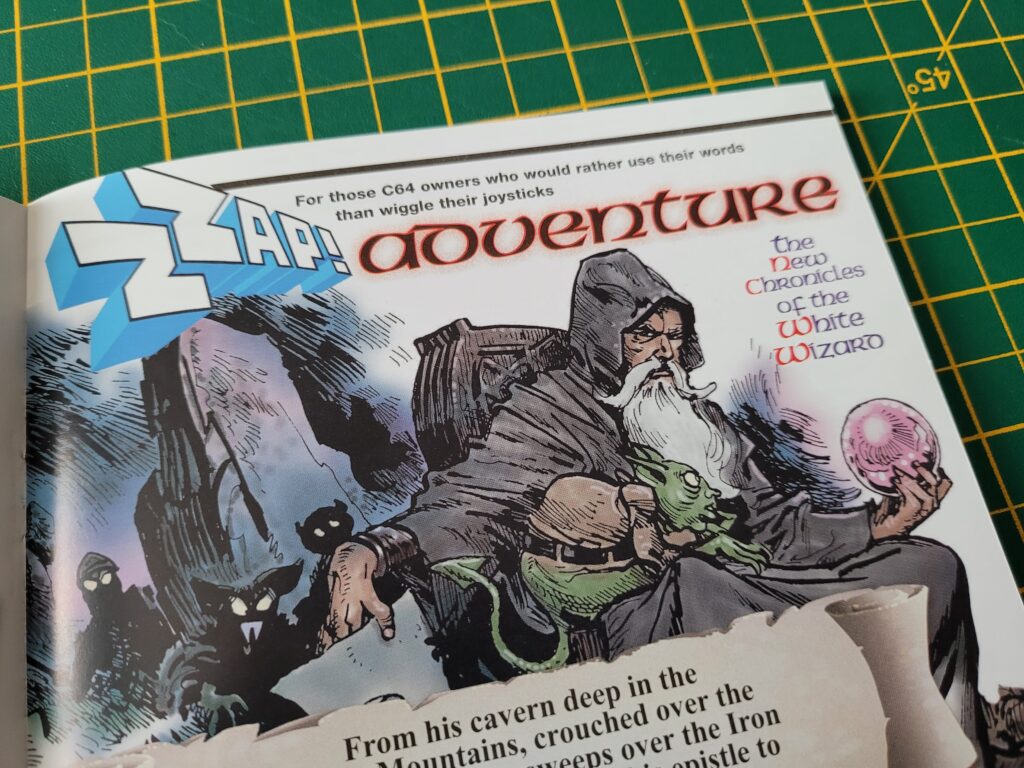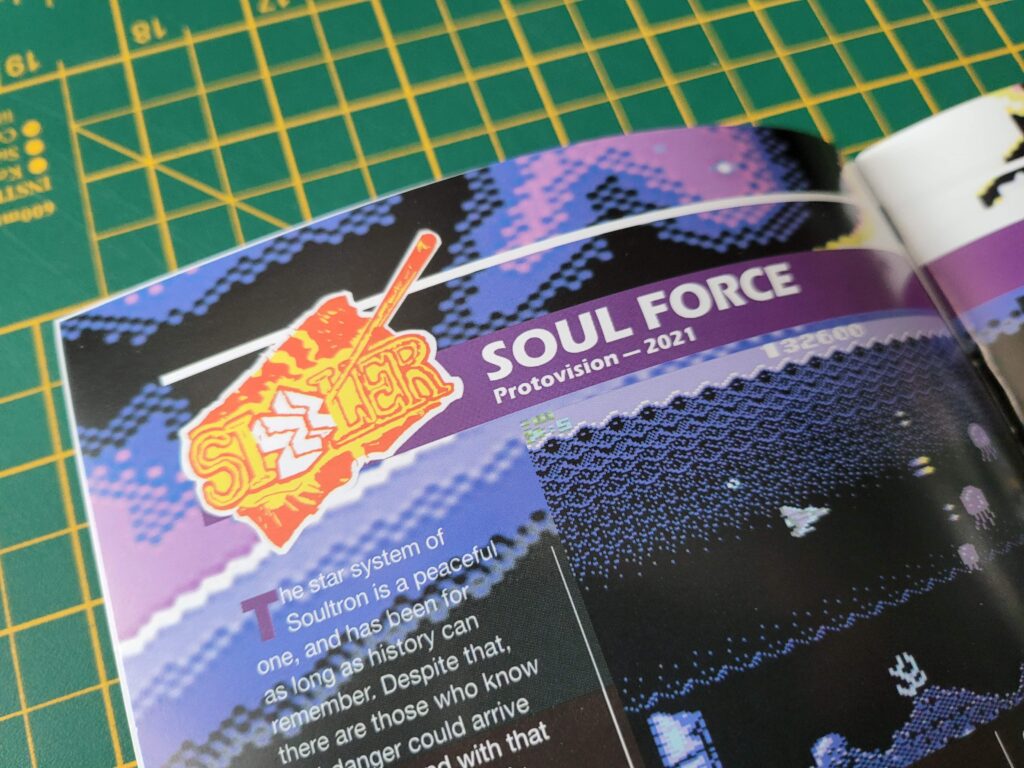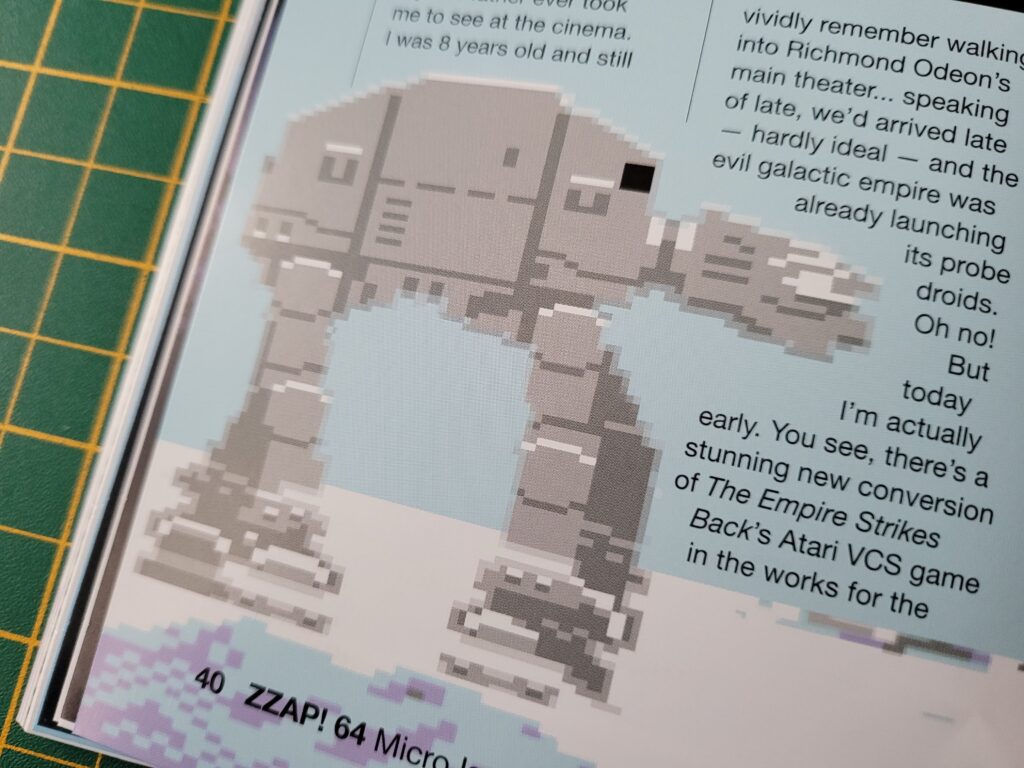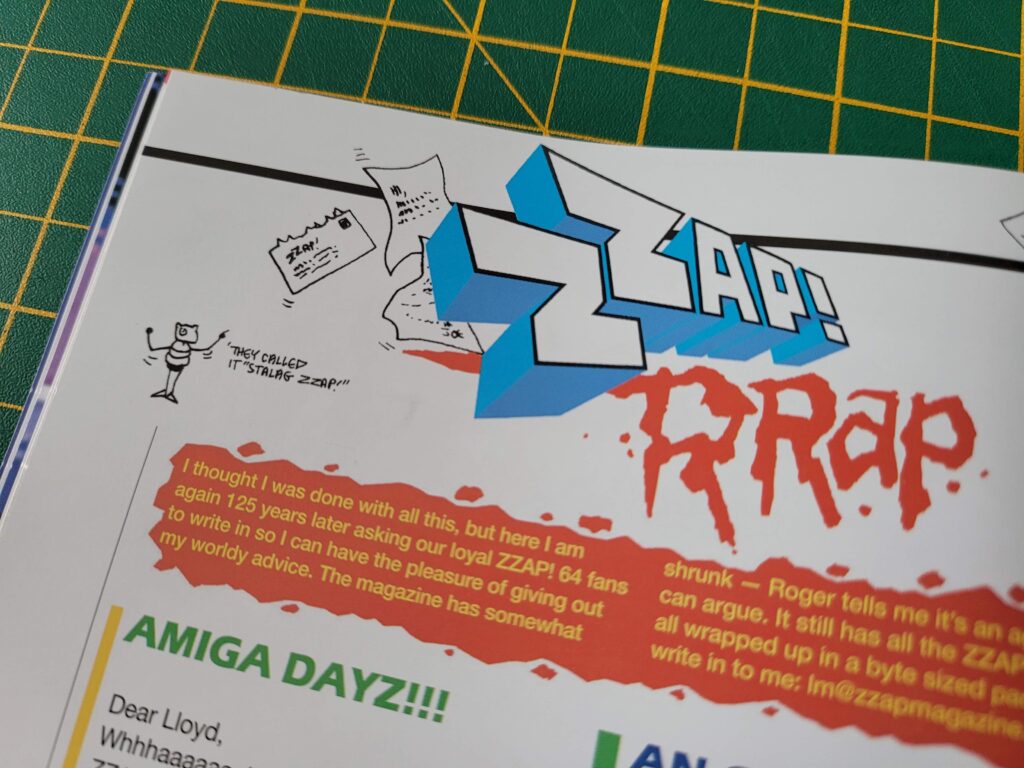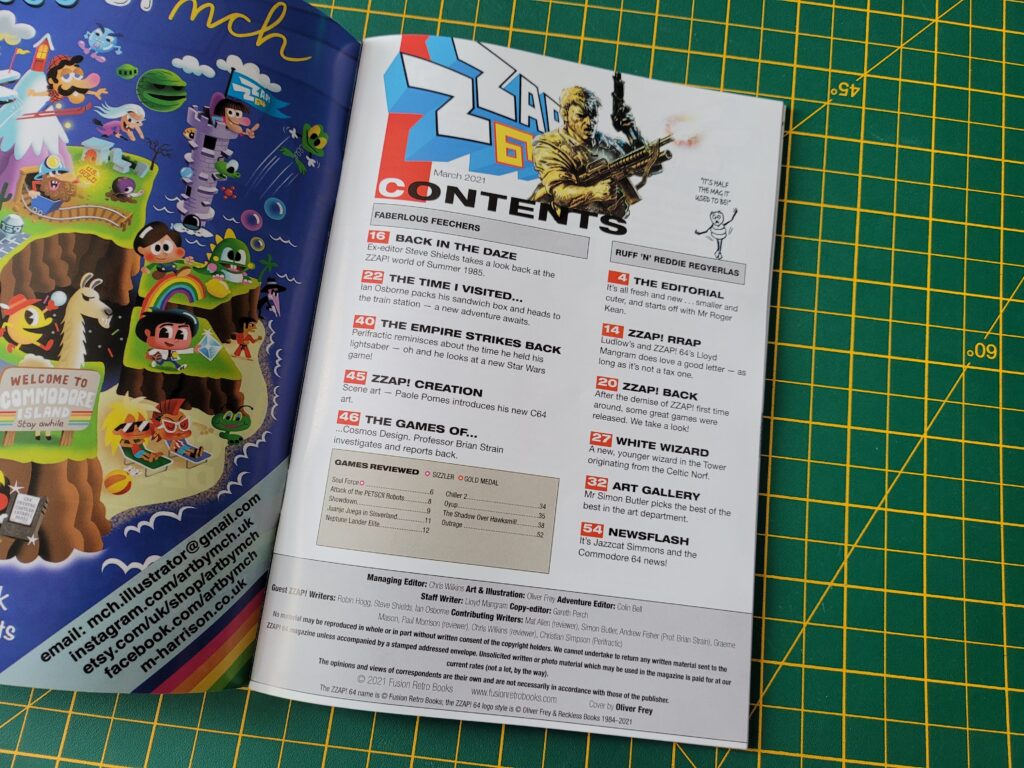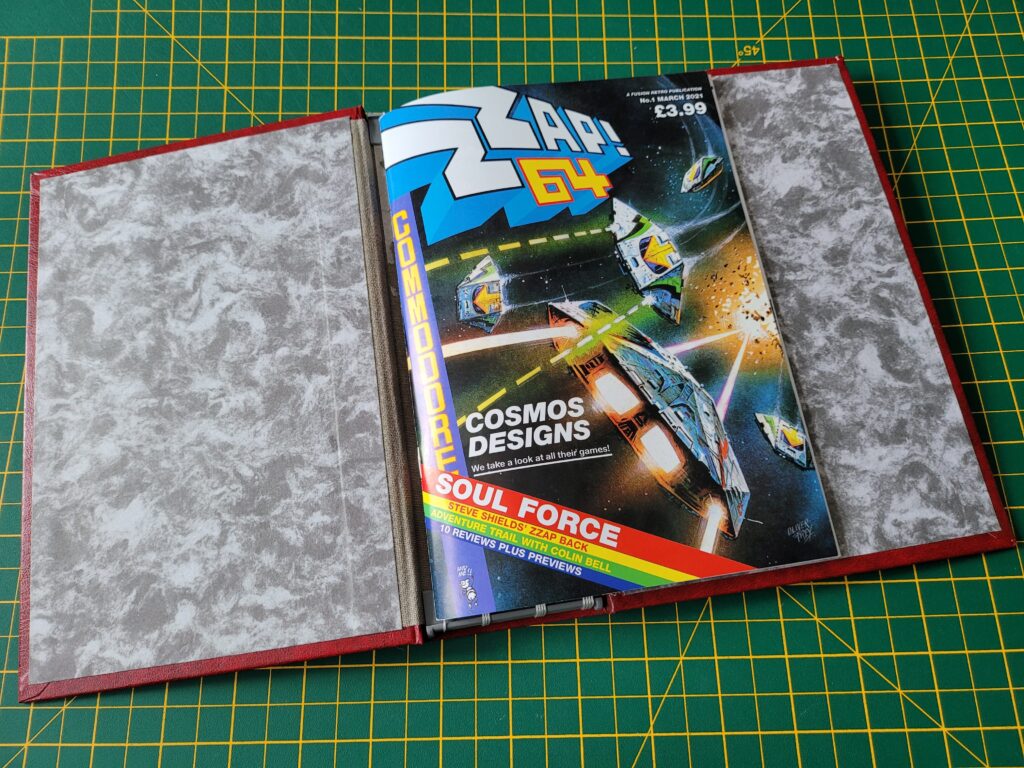If you’ve ever wanted to have an FM radio built into your C64 then your dreams have just come true. I spotted this cool little device whilst browsing around the SharewarePlus website a few weeks ago and have been putting it through its paces since…
What’s in the box?
Included in the box is the radio module, a real time clock (RTC) module, small telescopic aerial, program disk, battery (for the RTC), some fittings and finally some instruction sheets.
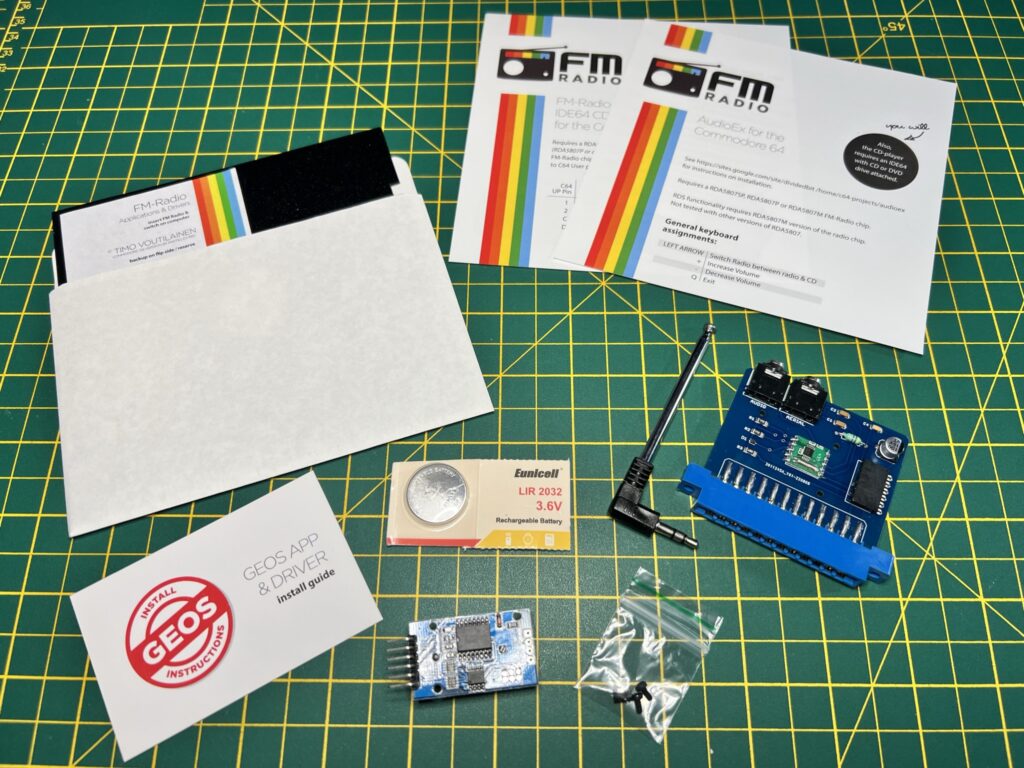
Kit Contents.
The board is nicely made and incorporates sockets for stereo audio output, aerial input and a 6-pin female socket header to accommodate the RTC.
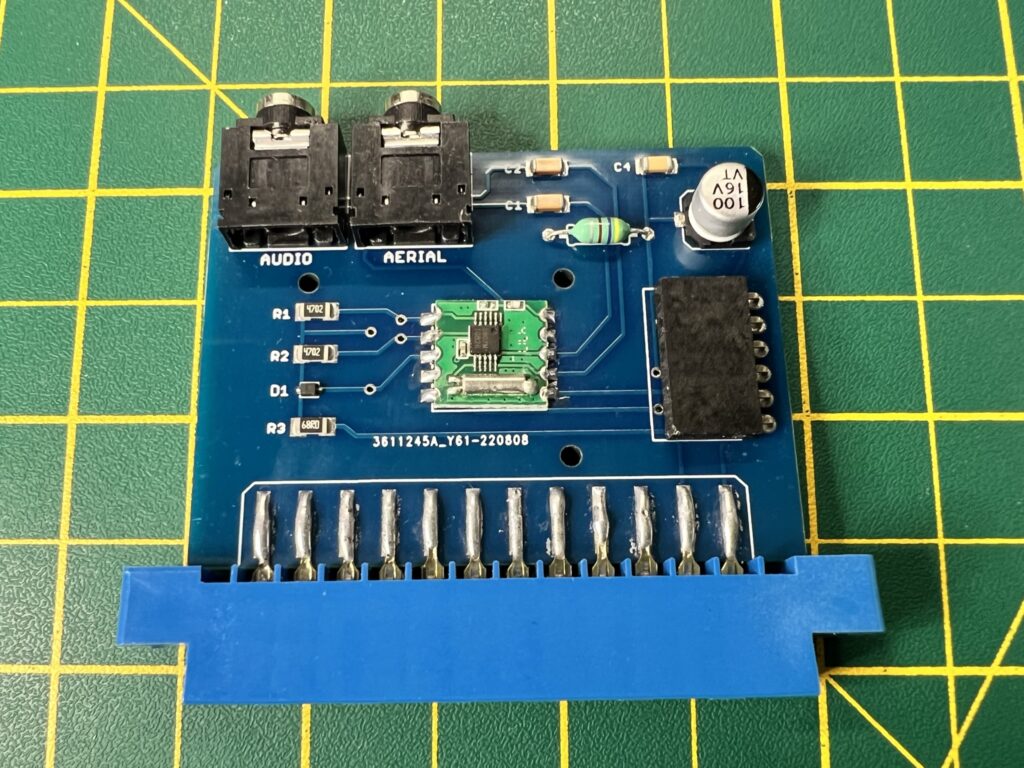
Close-up of the Radio board.
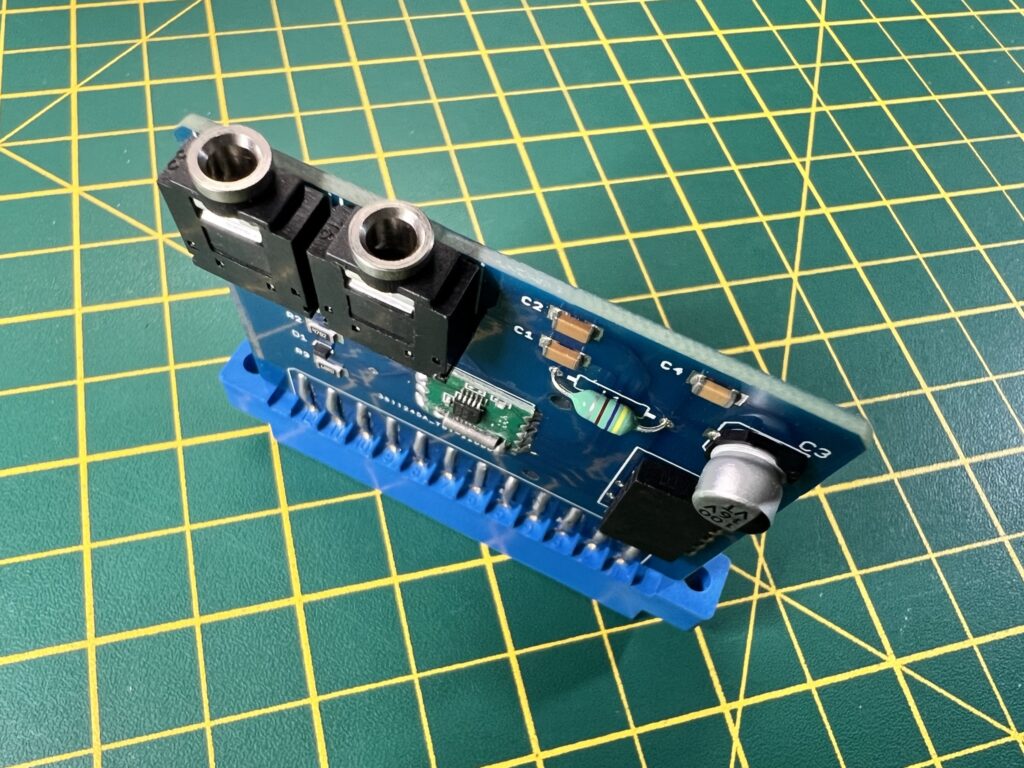
Audio port (left) and Aerial port (right).
The RTC features mostly surface mounted components on one side along with 6 header pins that will allow it to be plugged into the Radio PCB.
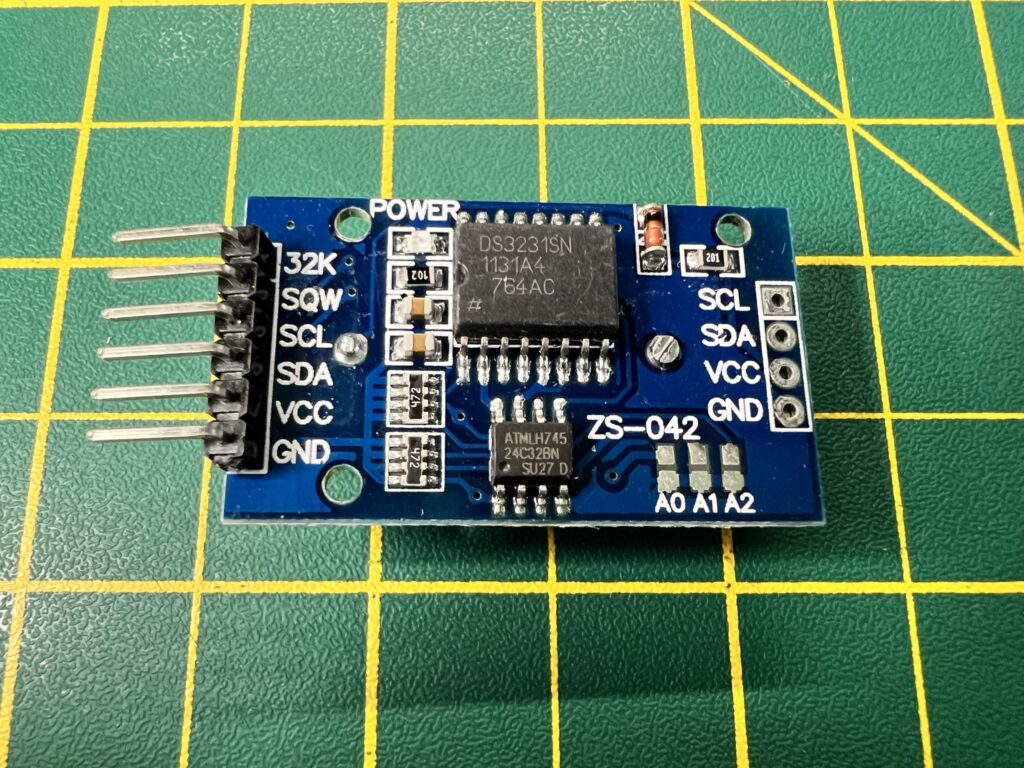
The RTC module.
The reverse side is dominated by a battery holder for a 3V Lithium CR2032 battery which is required to power it.
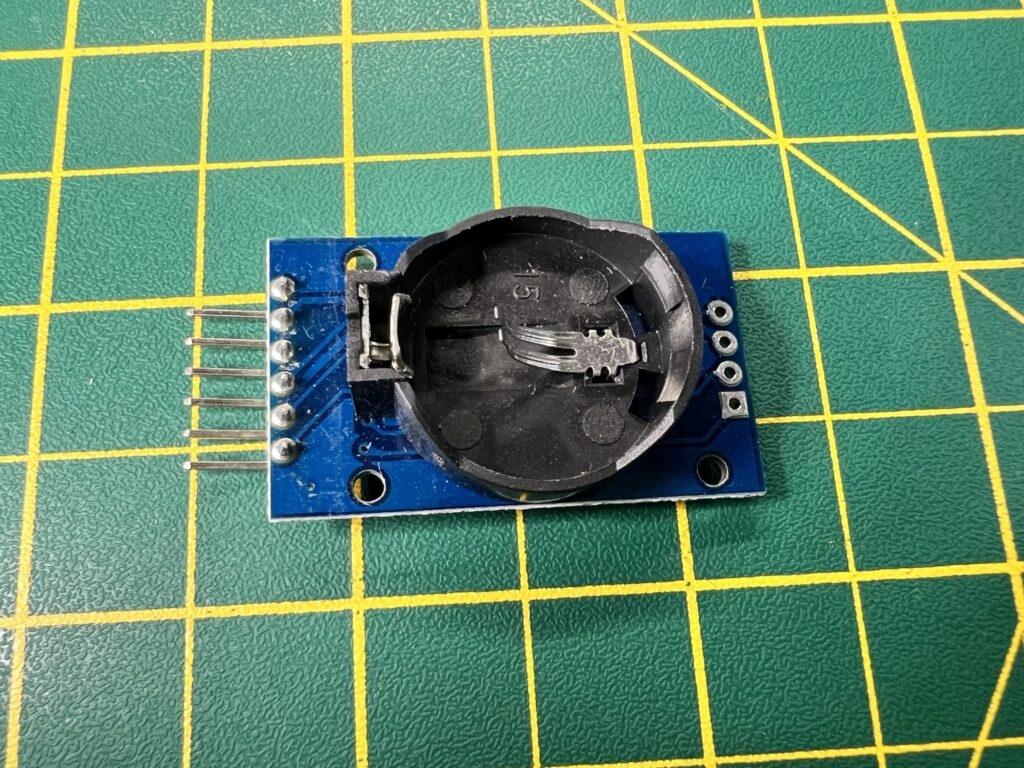
3V CR2032 button cell goes here.
The RTC attaches neatly to the main Radio PCB as shown in the photo below.
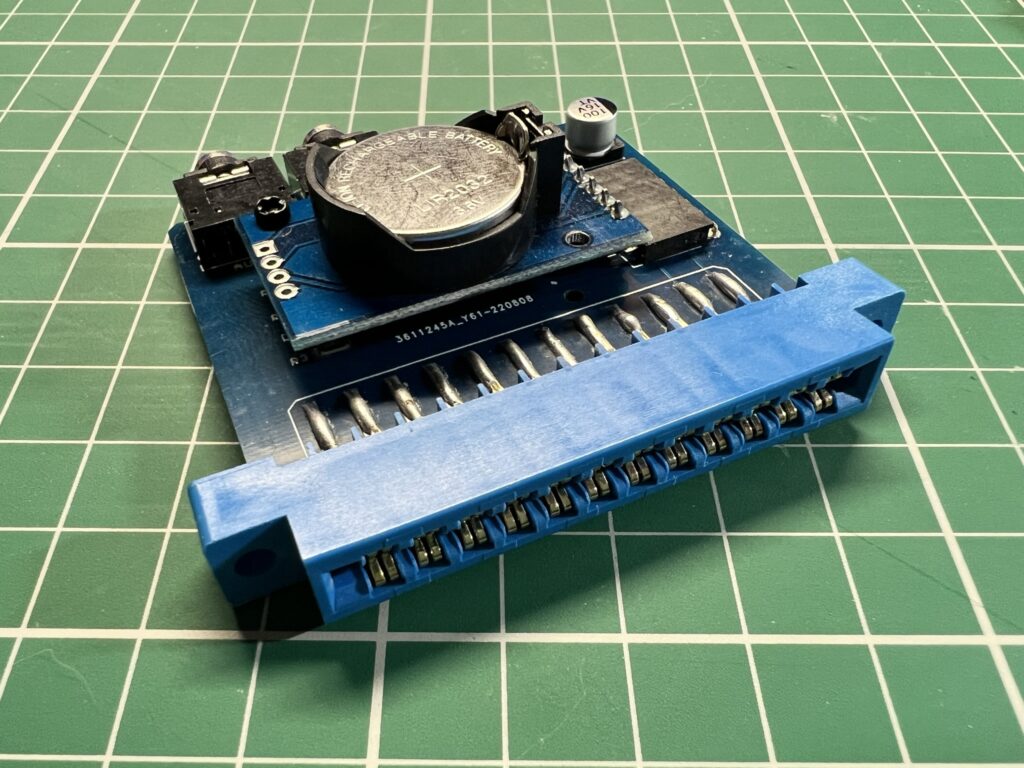
Here the RTC ‘daughterboard’ has been securely attached to the radio PCB.
A couple of small screws top and bottom with a stand-off sandwiched in-between ensures the RTC stays in place as you can see in the photo below.
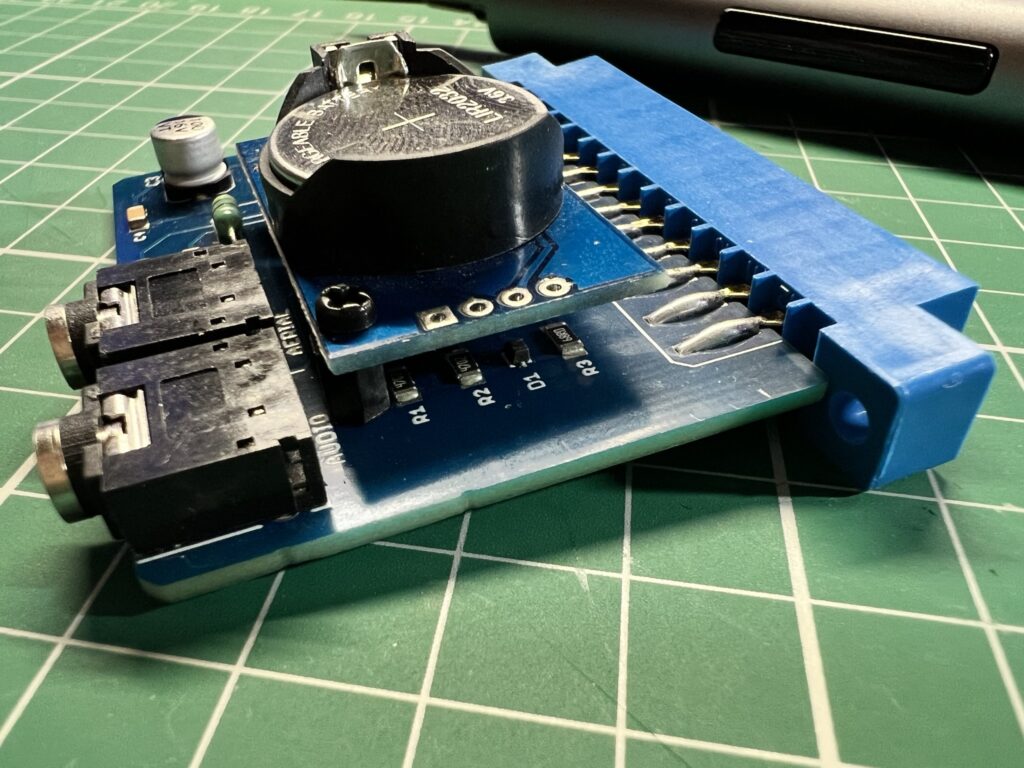
Close-up showing how the board attaches with the stand-off spacer.
Getting it Working
The FM Radio module plugs into the User Port at the back of your Commodore 64. Sound is output via a standard 3.5mm jack so you can attach a pair of headphones, or, as I did, hook it up to a powered speaker. In order to actually pick up any stations you also need to plug in the included telescopic aerial.
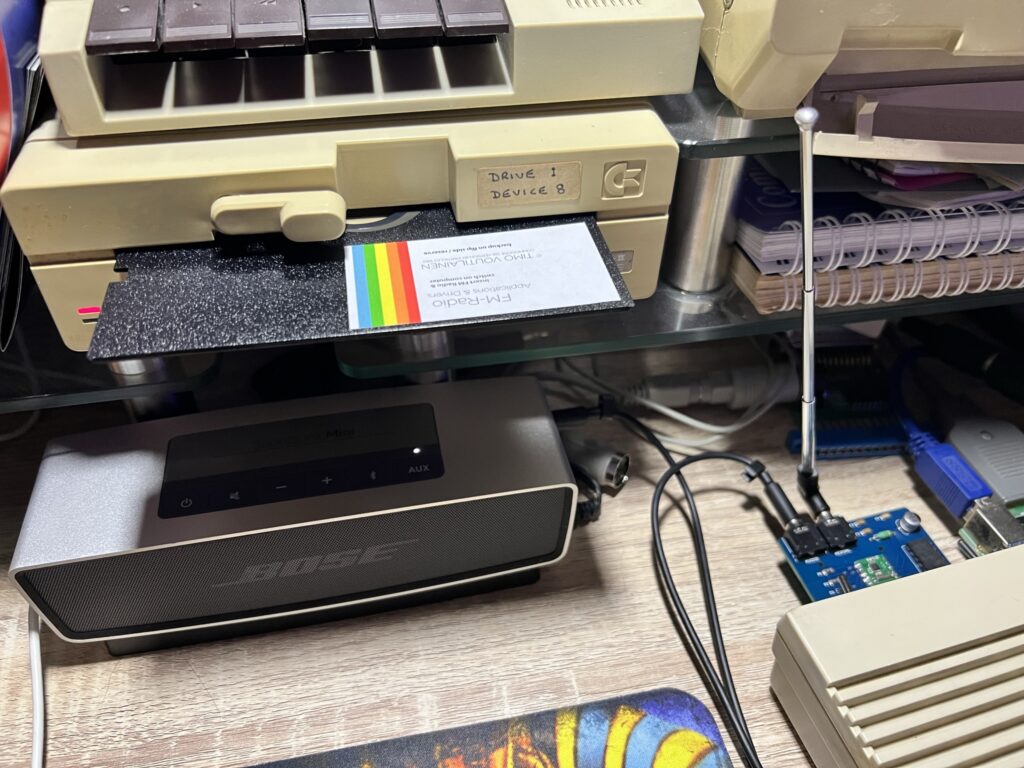
FM Radio plugged in a ready to go.
With the radio board plugged into the C64’s user port, speakers and aerial attached it’s time to power on the C64 and load up the supplied software to get it working.
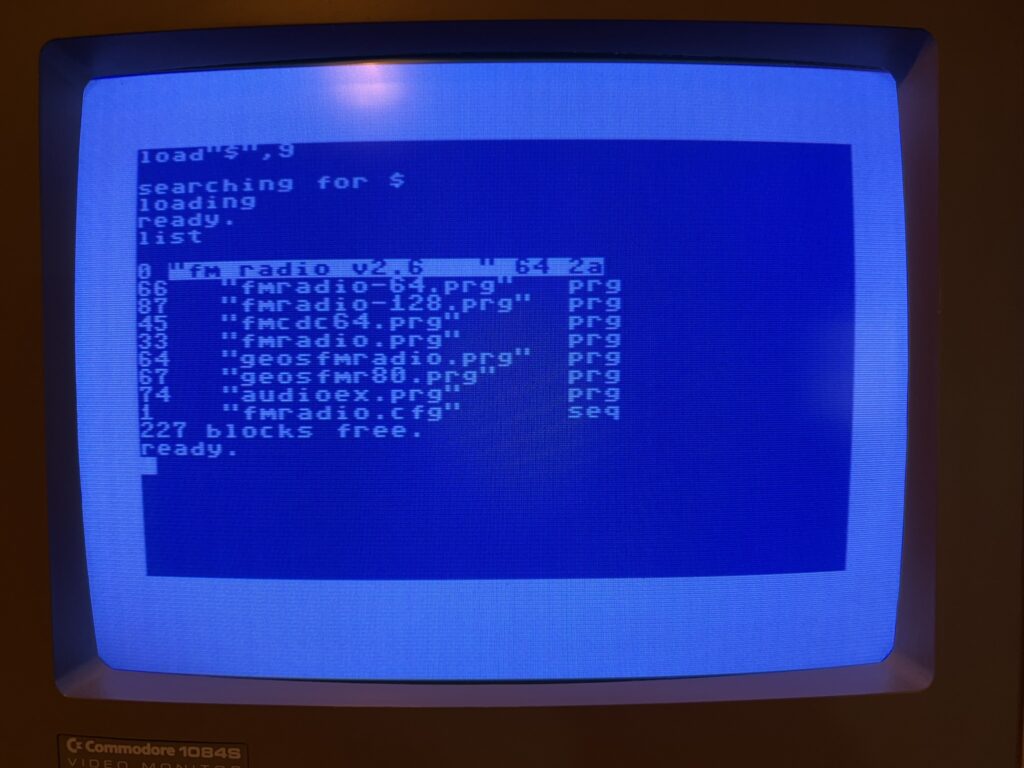
Contents of the supplied floppy disk.
The supplied floppy disk contains a number of different programs for both the C64 and C128 but the one I was interested in to get the radio working was the first one in the list above; “fmradio-64.prg”.
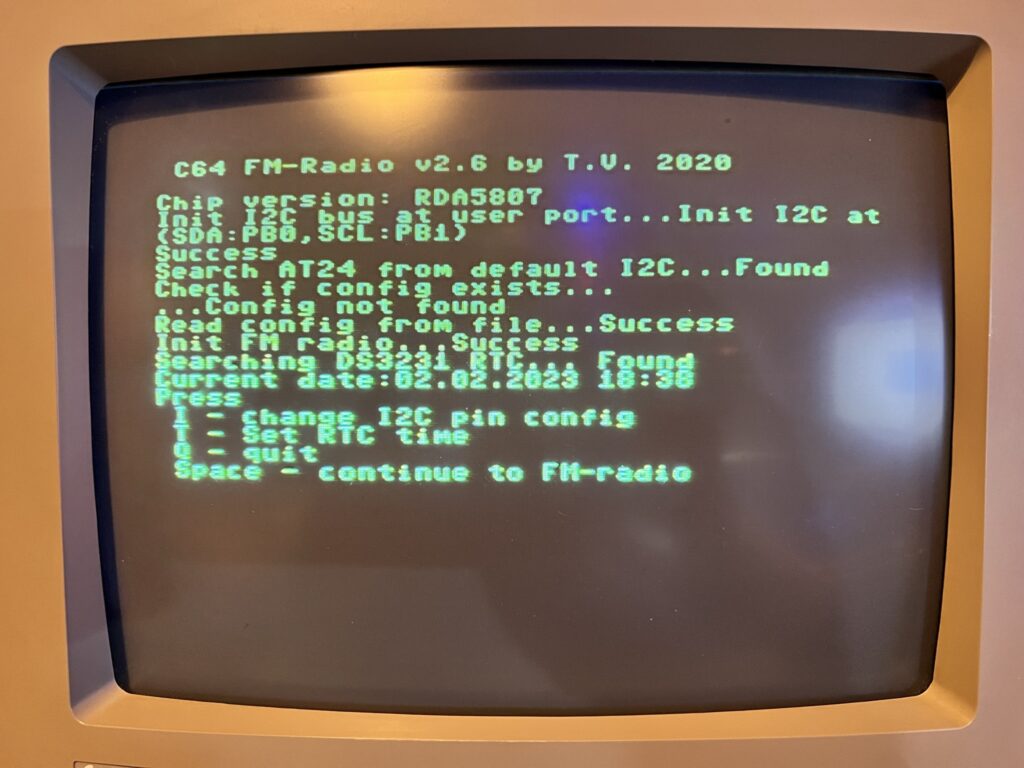
Initial screen.
Loading it up will initially present the screen above where it will confirm the presence of the RTC, show the current date and time and give you the option to set it too. Pressing ‘space’ loads up the actual FM Radio program.
Using the Radio
With the program running you can control the radio via a basic but functional user interface (UI) that displays all the information you need.
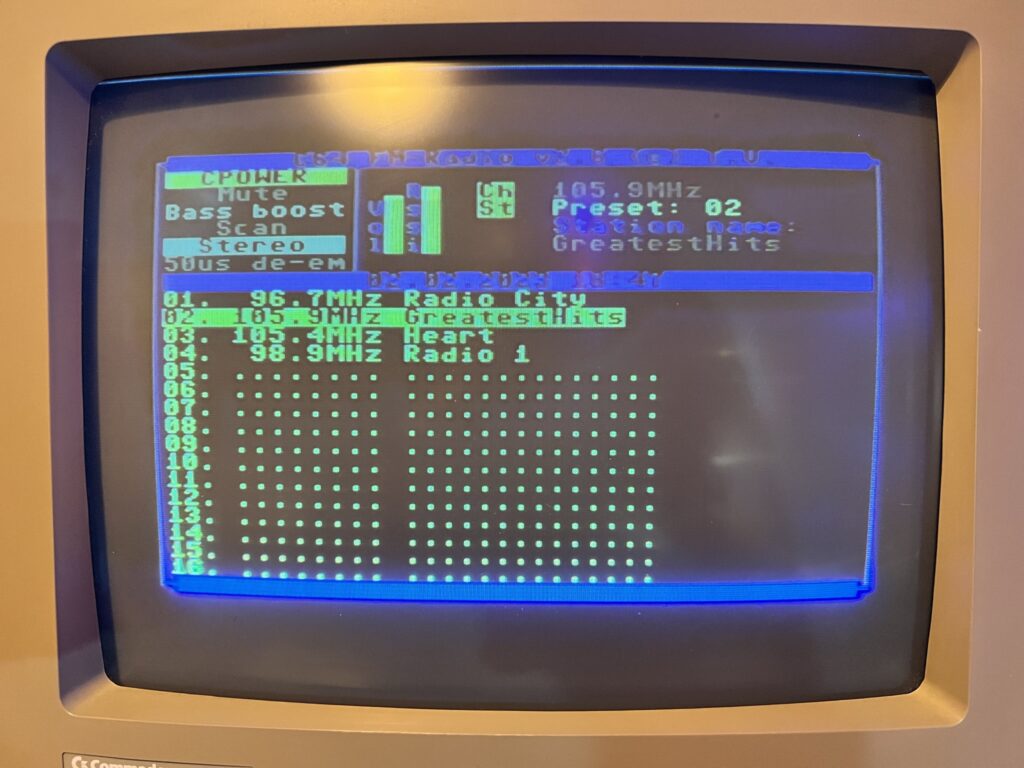
FM Radio Software UI.
The top-left portion of the screen is dedicated to showing the following 6 things:
- CPOWER – Power status (Green=ON / RED=OFF)
- Mute – on/off
- Bass Boost – on/off
- Scan – Indicates if the radio is currently scanning for a channel
- Stereo – Shows whether channel is playing in Mono or Stereo
- 50us de-em – ‘de-emphasis’ 50us or 70us setting that can help remove unwanted noise/interference
Moving across to the larger section on the right we can see details about the currently tuned channel along with the volume level and signal strength. If you have stored a channel in a ‘preset’ and named it then that will be displayed too under ‘Station name’.
In the strip below (providing you have set it already) the current date and time will be displayed.
Finally below all this and occupying the majority of the screen is the channel preset/listing area. This is basically a list of all the channels you have stored and the names you have assigned them.
How well does it work?
As the C64 FM Radio is digital rather than analogue, tuning in to stations is really simple. You can initiate an automatic channel scan up or down the FM frequency by tapping ‘;’ and ‘:’ respectively. Alternatively you can nudge the tuner up or down 100Khz at a time to fine tune a station yourself by using the ‘U’ and ‘D’ keys. The radio will not automatically retrieve channel names but once you have tuned in a channel you like you can press ‘C’ to store it and assign it any name you like (up to 12 characters) and save it into one of the 16 available slots. These presets are saved to disk when you quit the program. The first 10 presets can be quickly accessed by simply pressing the corresponding number on the keyboard. Alternatively, you can use the cursor keys to move up and down the list and press ‘return’ to select one.
Here’s a short video of me using the radio, switching channels and so on, all from my C64.
Once you have tuned into a particular station you have the option of changing between mono and stereo reception and toggling a ‘de-emphasis’ setting to improve the audio. I found tuning to be mostly ‘all or nothing’ meaning that most of the stations either tuned in perfectly or barely at all so I had no use for these tools but it’s nice to have them available. Of course you can also alter the volume level, add Bass Boost or mute the audio all from your C64. The bass boost works quite well too, at least with my Bose speaker anyway.
I was only able to pull in a couple of local radio stations initially with the supplied telescopic aerial but I do have a lot of electronic equipment in my man cave that could well be affecting reception. However I replaced the supplied aerial with a 2m long aux cable I had lying around and was then able to pull in a few more channels. Who knows what I could pull in if I had an even longer one! If it’s been a while since you used an FM radio then you might have forgotten how finicky they can sometimes be depending on where they are placed and what direction the aerial is pointing in etc. Luckily for me, my favourite radio station (Greatest Hits Radio) was one of the two I could receive with the supplied telescopic aerial. The quality of the reception was spot on too so I was quite happy to continue using the stock aerial.
I should point out that the FM Radio hardware is doing all the work here. The C64 just interfaces with the board to provide power and interact with it via software. This becomes pretty obvious once you quit the program or reset your C64 because the radio continues to work. However this allows you to play a game on your C64 whilst listening to the radio so is actually a positive for me!
GEOS
The included RTC works with GEOS (after you install a small driver to read the time from it) which is amazingly useful and really cool. Sadly this latest radio design (there have been at least 3 different ones used that I’m aware of) doesn’t yet work with GEOS but the guys behind this project are working on a revised PCB that should fix this in the future.
I was able to get hold of an older version of the Radio hardware that still works with the GEOS Radio program and it’s a really slick experience. It provides a modern, mouse driven UI for the radio with a nice chunky digital channel display. You can see how attractive the radio app is in the photo below.
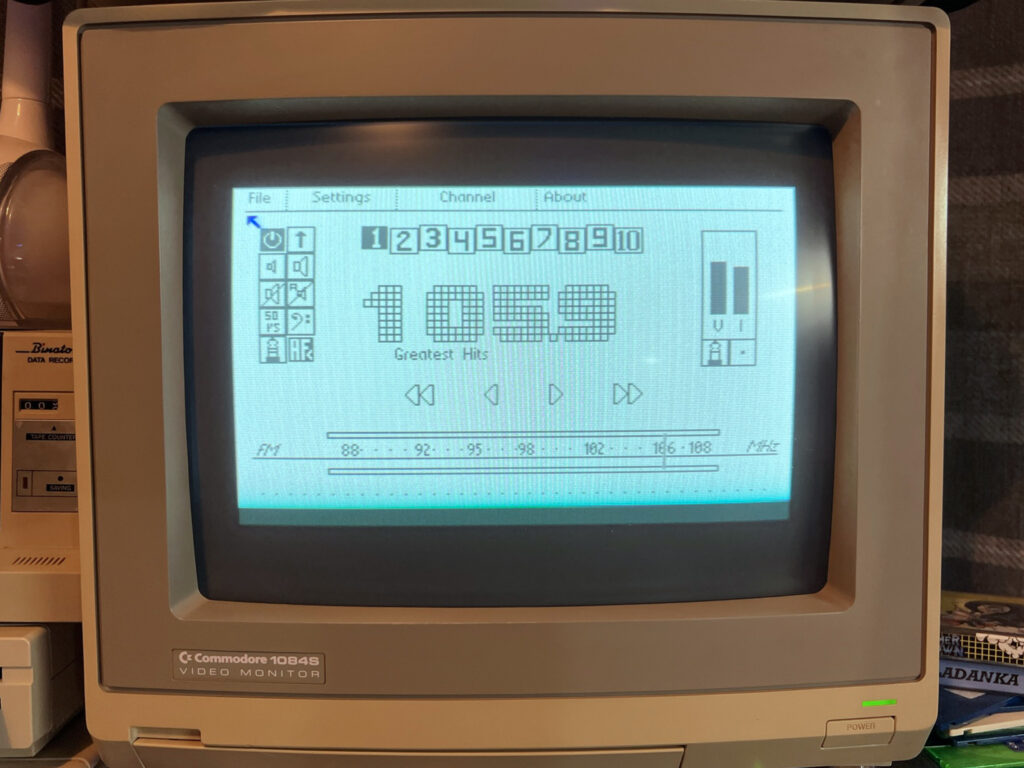
Radio program running within GEOS.
Where to get one?
I picked up my C64 FM Radio kit from Shareware Plus in the UK. If you fancy getting one yourself you can find them here. It’s not only a fun piece of hardware to tinker around with but its really useful too. The clock feature for GEOS alone made it worthwhile for me. Just be aware that if you have your heart set on using the radio with GEOS then hang fire until they revise the board to work correctly with it.
